Forums
- Forums
- Axis And Allies Forum
- General Discussion
- Aviation News
Aviation News
Post a reply
- Go to Next topic
- Go to Welcome
- Go to Introduce Yourself
- Go to General Discussion
- Go to Screenshots, Images and Videos
- Go to Off topic
- Go to Works in Progress
- Go to Skinning Tips / Tutorials
- Go to Skin Requests
- Go to IJAAF Library
- Go to Luftwaffe Library
- Go to RAF Library
- Go to USAAF / USN Library
- Go to Misc Library
- Go to The Ops Room
- Go to Made in Germany
- Go to Campaigns and Missions
- Go to Works in Progress
- Go to Juri's Air-Raid Shelter
- Go to Campaigns and Missions
- Go to Works in Progress
- Go to Skinpacks
- Go to External Projects Discussion
- Go to Books & Resources
-
 Main AdminAn F-35B Lightning II with Marine Fighter Attack Squadron (VMFA) 121, lands at Marine Corps Air Station Iwakuni, Japan, Jan. 18, 2017. VMFA-121 conducted a permanent change of station to MCAS Iwakuni, from MCAS Yuma, Ariz., and now belongs to Marine Aircraft Group 12, 1st Marine Aircraft Wing, III Marine Expeditionary Force. The F-35B Lightning II is a fifth-generation fighter, which is the world?s first operational supersonic short takeoff and vertical landing aircraft. The F-35B brings strategic agility, operational flexibility and tactical supremacy to III MEF with a mission radius greater than that of the F/A-18 Hornet and AV-8B Harrier II in support of the U.S. ? Japan alliance. (U.S. Marine Corps photo's by Lance Cpl. Joseph Abrego)
Main AdminAn F-35B Lightning II with Marine Fighter Attack Squadron (VMFA) 121, lands at Marine Corps Air Station Iwakuni, Japan, Jan. 18, 2017. VMFA-121 conducted a permanent change of station to MCAS Iwakuni, from MCAS Yuma, Ariz., and now belongs to Marine Aircraft Group 12, 1st Marine Aircraft Wing, III Marine Expeditionary Force. The F-35B Lightning II is a fifth-generation fighter, which is the world?s first operational supersonic short takeoff and vertical landing aircraft. The F-35B brings strategic agility, operational flexibility and tactical supremacy to III MEF with a mission radius greater than that of the F/A-18 Hornet and AV-8B Harrier II in support of the U.S. ? Japan alliance. (U.S. Marine Corps photo's by Lance Cpl. Joseph Abrego)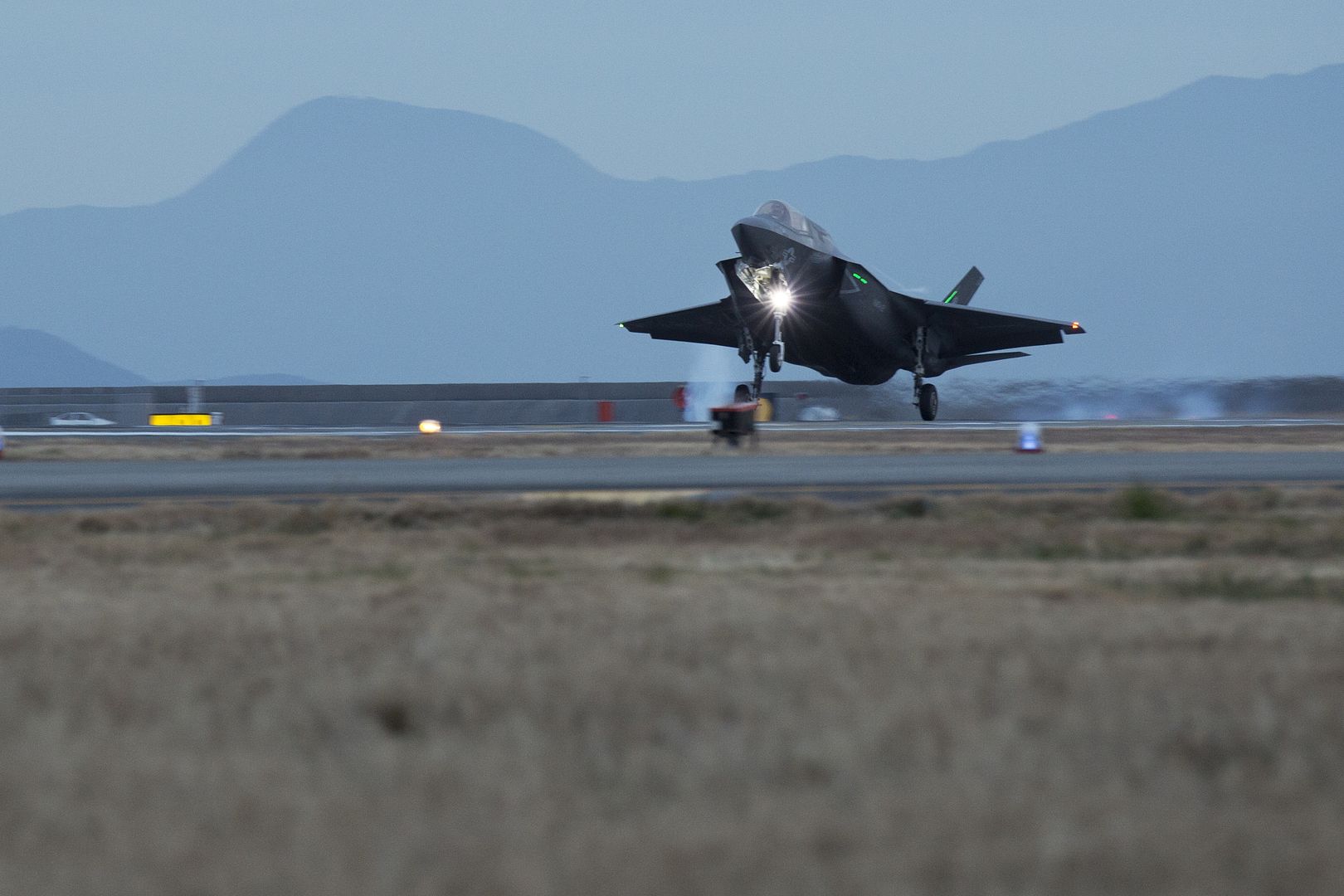
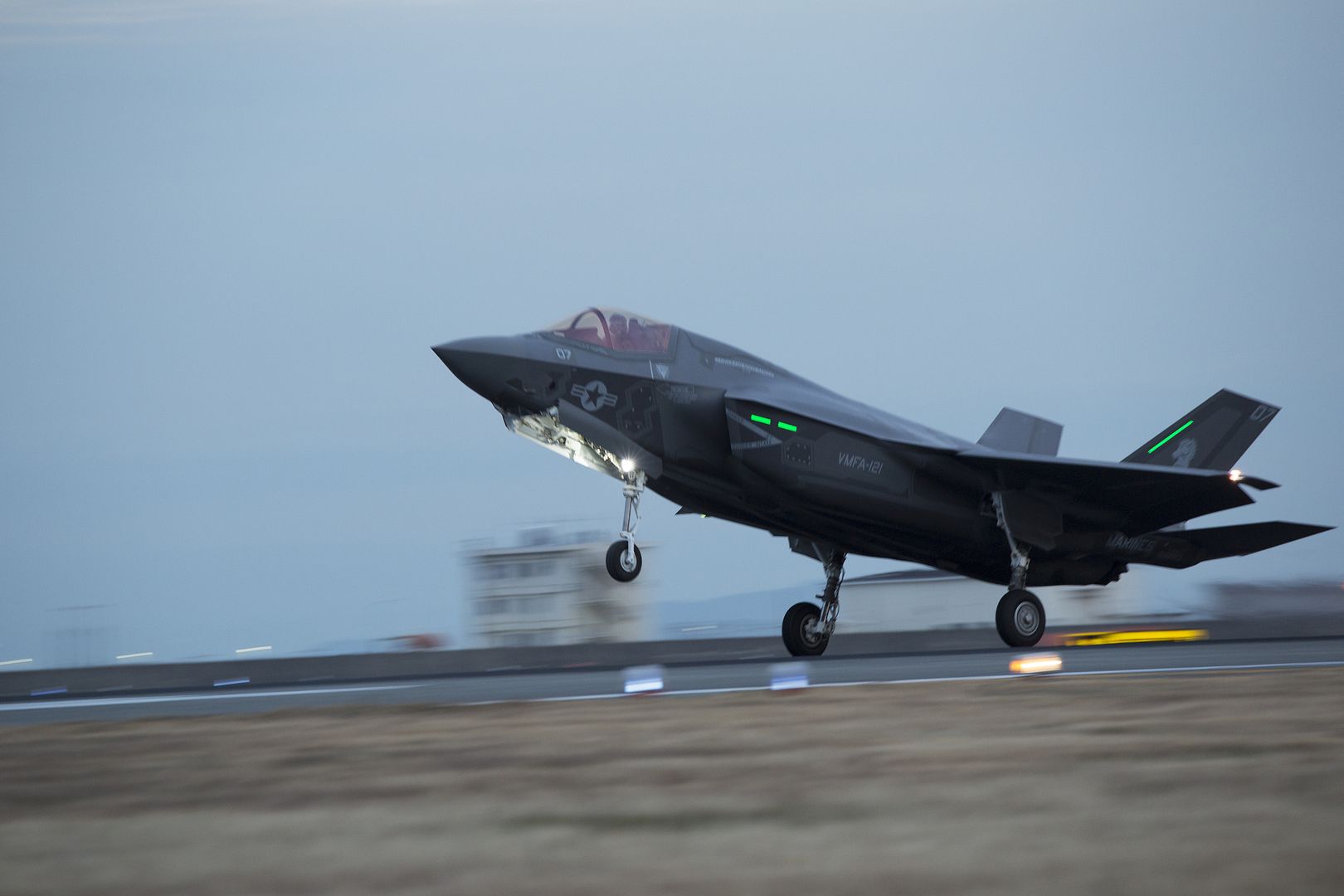
U.S. Marine Corps Lt. Col. J. T. Bardo, commanding officer of Marine Fighter Attack Squadron (VMFA) 121, emerges from an F-35B Lightning II upon arrival at Marine Corps Air Station Iwakuni, Japan, Jan. 18, 2017. VMFA-121 conducted a permanent change of station to MCAS Iwakuni, from MCAS Yuma, Ariz., and now belongs to Marine Aircraft Group 12, 1st Marine Aircraft Wing, III Marine Expeditionary Force. The F-35B Lightning II is a fifth-generation fighter, which is the world?s first operational supersonic short takeoff and vertical landing aircraft. The F-35B brings strategic agility, operational flexibility and tactical supremacy to III MEF with a mission radius greater than that of the F/A-18 Hornet and AV-8B Harrier II in support of the U.S. ? Japan alliance. (U.S. Marine Corps photo by Cpl. Nathan Wicks)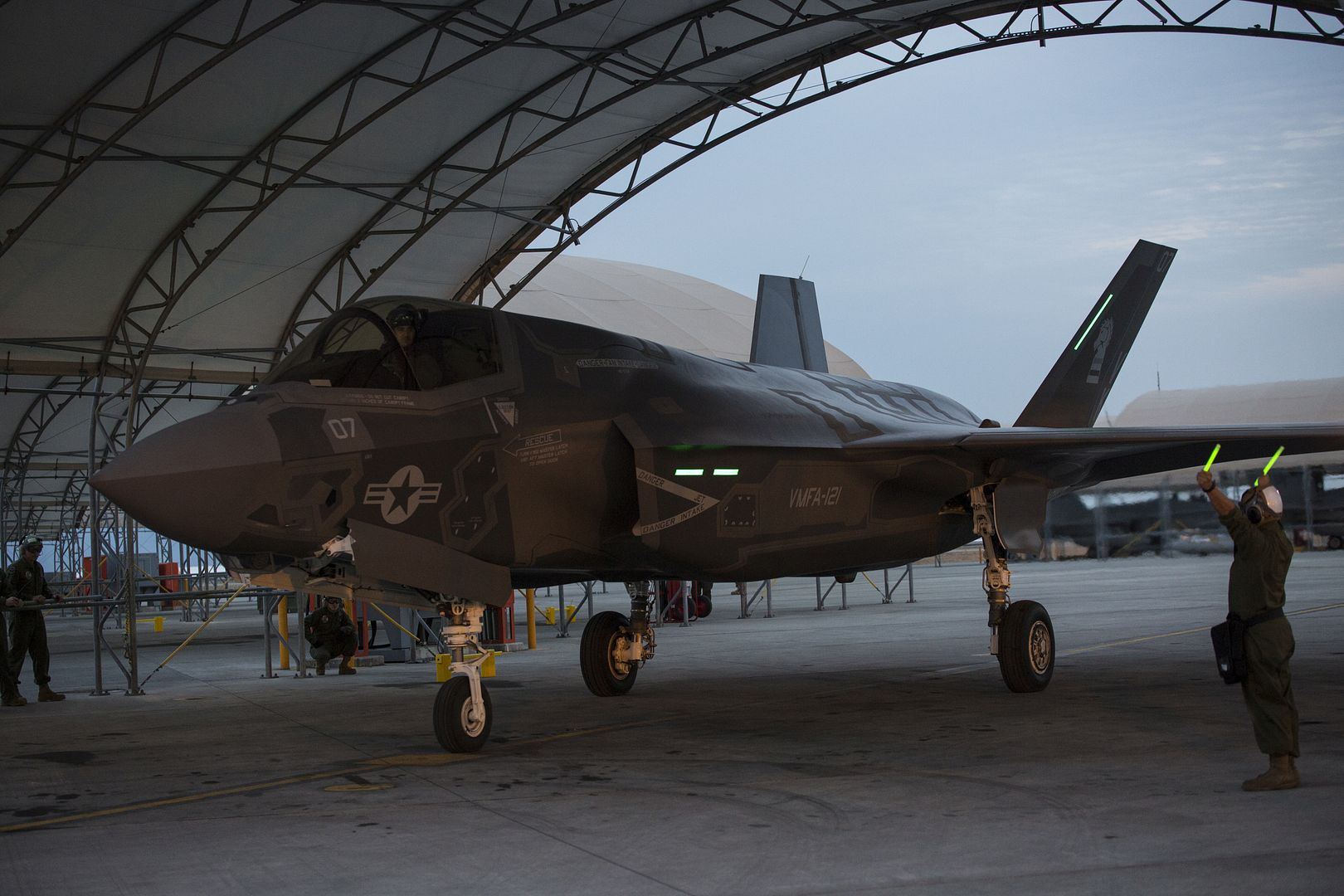
An EC-130H Compass Call takes off from an airfield Jan. 18, 2017 at an undisclosed location in Southwest Asia. The Compass Call is engaged in operations jamming Da?esh communications in order to confuse and disorient enemy fighters. (U.S. Air Force photo/Capt. Casey Osborne)
An F/A-18E Super Hornet assigned to the Strike Fighter Squadron (VFA) 192 makes an arrested landing on the flight deck of the aircraft carrier USS Carl Vinson (CVN 70). The Carl Vinson Carrier Strike Group will report to U.S. 3rd Fleet, headquartered in San Diego, while deployed to the western Pacific as part of the U.S. Pacific Fleet-led initiative to extend the command and control functions of 3rd Fleet into the region. U.S. Navy photo by Mass Communication Specialist 3rd Class Kurtis A. Hatcher (Released)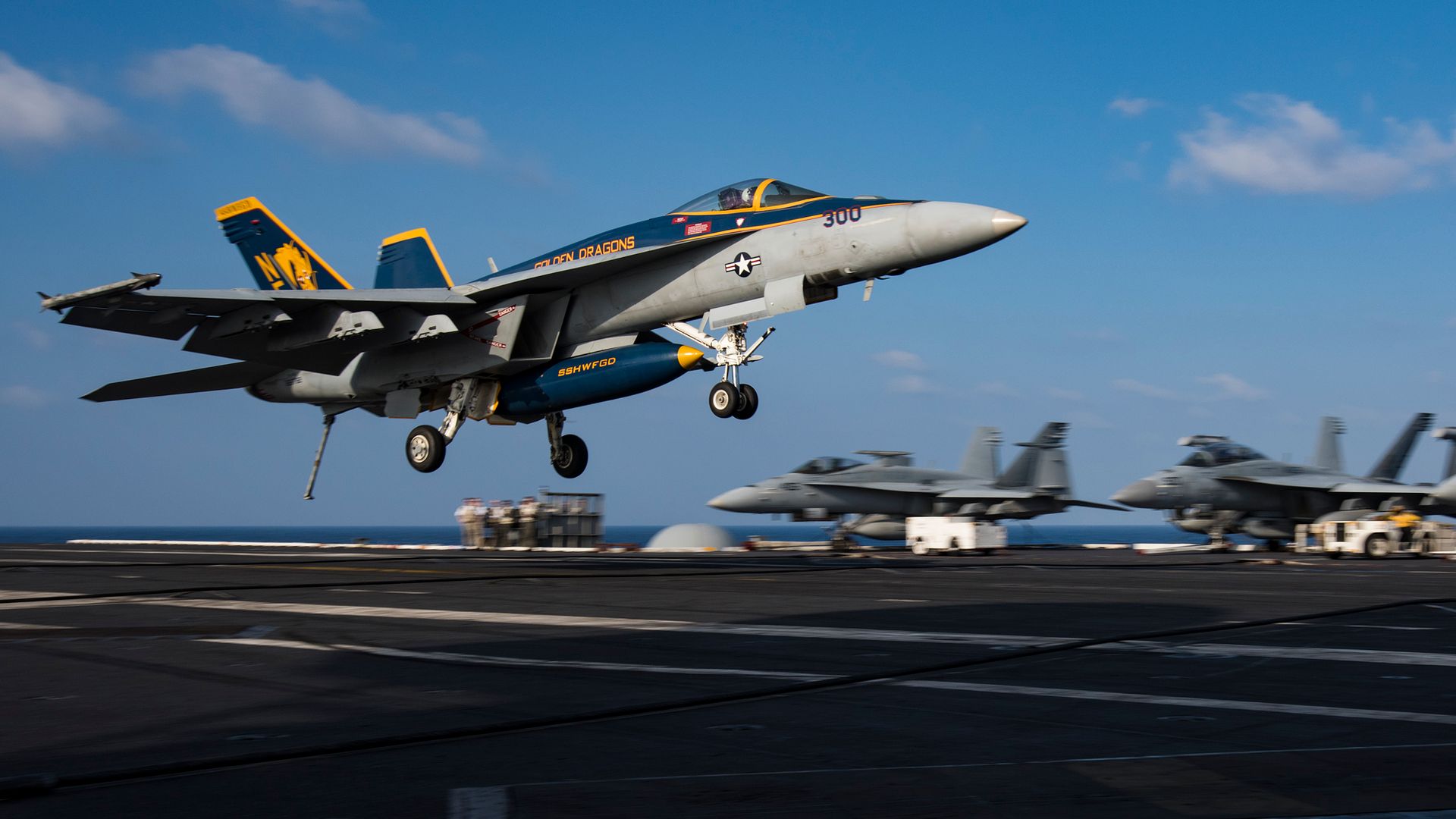
Taiwan has commenced local work to upgrade 144 Lockheed Martin F-16 A/B fighters to the new F-16V standard.
Four aircraft were flown to the Taichung production facility of Aerospace Industry Development Corporation (AIDC), according to local media reports quoting the Taiwanese air force.
The upgrade work, which was due to have started in 2016, will see the entire fleet upgraded within five years.
The work will see the implantation of upgrades to the mission computer, airframe, cockpit instruments, and electronic warfare system. The jets will also receive an active electronically scanned array (AESA) radar in the form of Northrop Grumman?s Scalable Agile Beam Radar.
The project involves AIDC essentially installing a kit originally developed by Lockheed Martin.
The upgrade is an important step for Taipei given the age of its fleet as well as the rapid growth of Beijing?s military capabilities in recent years.
Originally, Taipei wanted both the upgrade programme as well as an additional 66 F-16 C/Ds.
The Obama administration ruled out the sale of new aircraft.
President-elect Donald Trump, however, has taken a far more confrontational tone with Beijing, even questioning the sanctity of the ?One China? policy, which regards Taiwan as a part of China.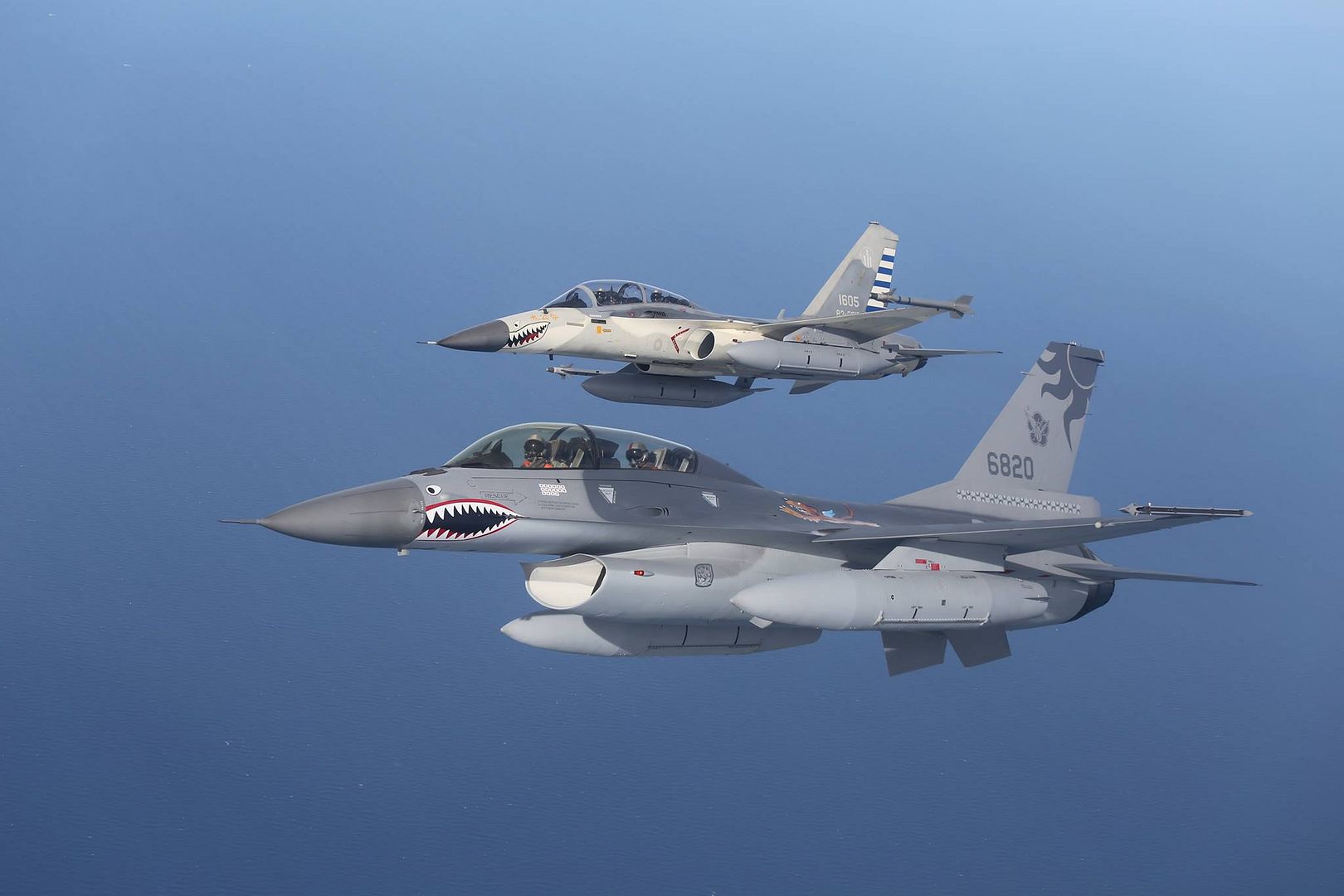
-
 Main AdminCurrent and former members of the 211th Rescue Squadron, Alaska Air National Guard, bid farewell to the last of their HC-130N aircraft (tail number 2106) Jan. 17 as it departed here for Patrick Air Force Base, Florida. The HC-130 variants of the C-130 family of aircraft are designed for long-range search-and-rescue missions. They are set up to provide command and control, airdrop of pararescue personnel and equipment, and perform air-refueling missions for helicopters like the HH-60 Pave Hawk helicopters flown by the 211th?s sister unit, the 210th Rescue Squadron. The older HC-130N?s are scheduled to be replaced with four new HC-130J ?Combat King II? aircraft which are currently being manufactured at Lockheed Martin in Georgia. (U.S. Air National Guard photo by Staff Sgt. Edward Eagerton/released)
Main AdminCurrent and former members of the 211th Rescue Squadron, Alaska Air National Guard, bid farewell to the last of their HC-130N aircraft (tail number 2106) Jan. 17 as it departed here for Patrick Air Force Base, Florida. The HC-130 variants of the C-130 family of aircraft are designed for long-range search-and-rescue missions. They are set up to provide command and control, airdrop of pararescue personnel and equipment, and perform air-refueling missions for helicopters like the HH-60 Pave Hawk helicopters flown by the 211th?s sister unit, the 210th Rescue Squadron. The older HC-130N?s are scheduled to be replaced with four new HC-130J ?Combat King II? aircraft which are currently being manufactured at Lockheed Martin in Georgia. (U.S. Air National Guard photo by Staff Sgt. Edward Eagerton/released)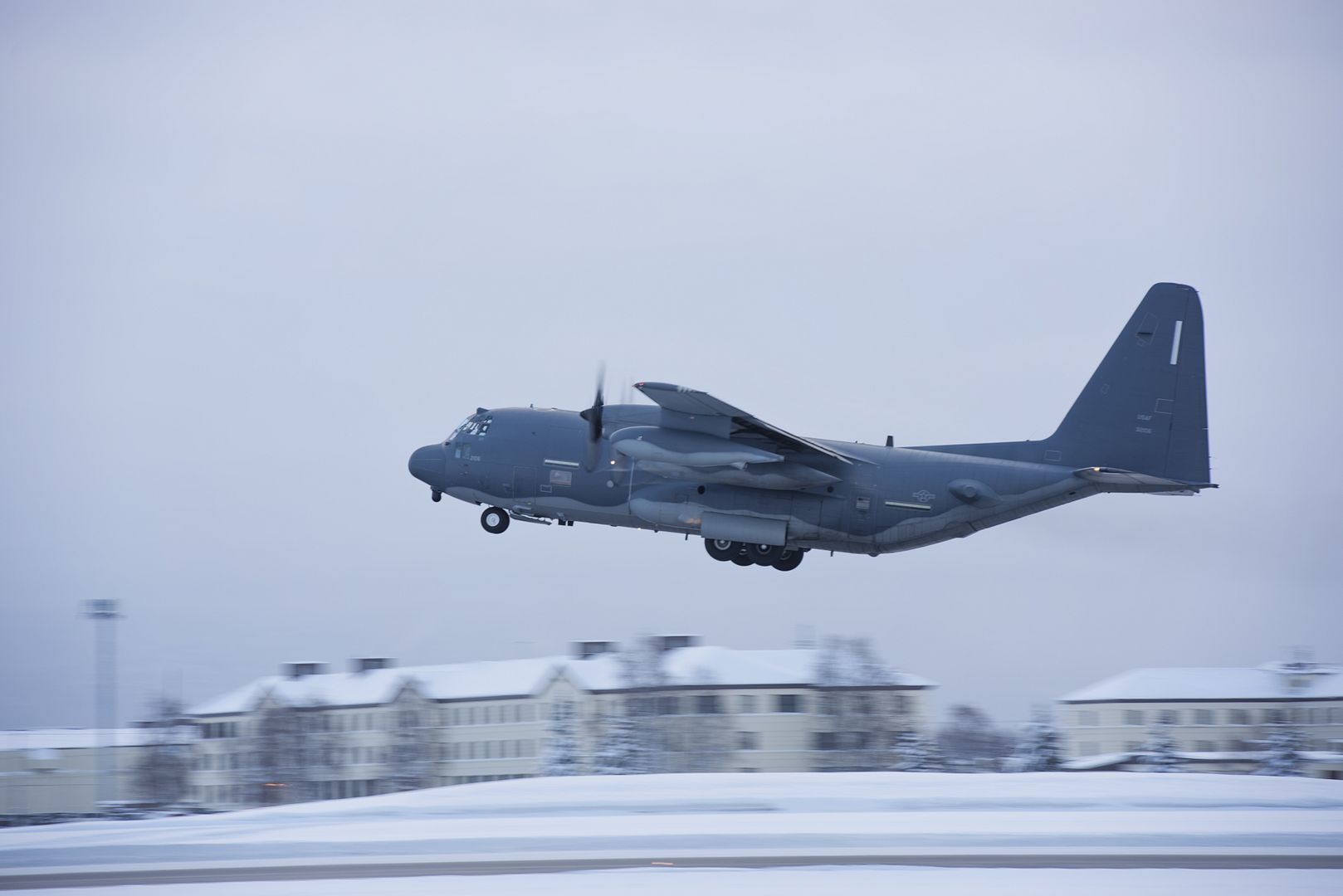
U.S. Marine Corps Gen. Joseph F. Dunford, Jr., chairman of the Joint Chiefs of Staff, aboard a C-40B, departs Brussels, Belgium, Jan. 18, 2017. Gen. Dunford attended meetings with other military commanders at the North Atlantic Treaty Organization headquarters. (DoD Photo by U.S. Army Sgt. James K. McCann)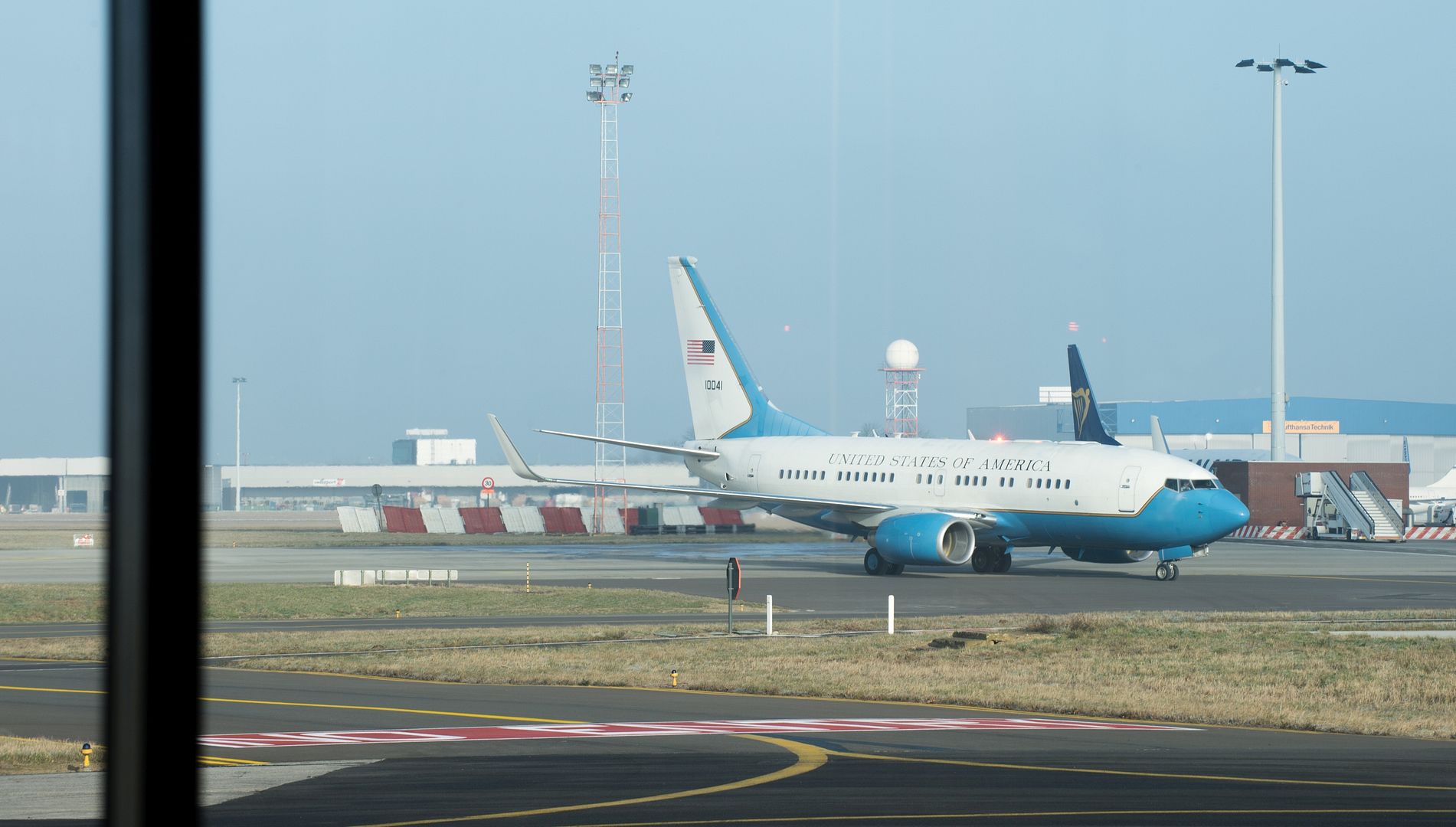
CAMP PENDLETON, Calif. -- Camp Pendleton tests its flight line capabilities for the F-35B Lighting II fix wing jet at Marine Corps Air Station Camp Pendleton, Jan. 18. (Marine Corps Photos by Lance Cpl. Emmanuel Necoechea/Released)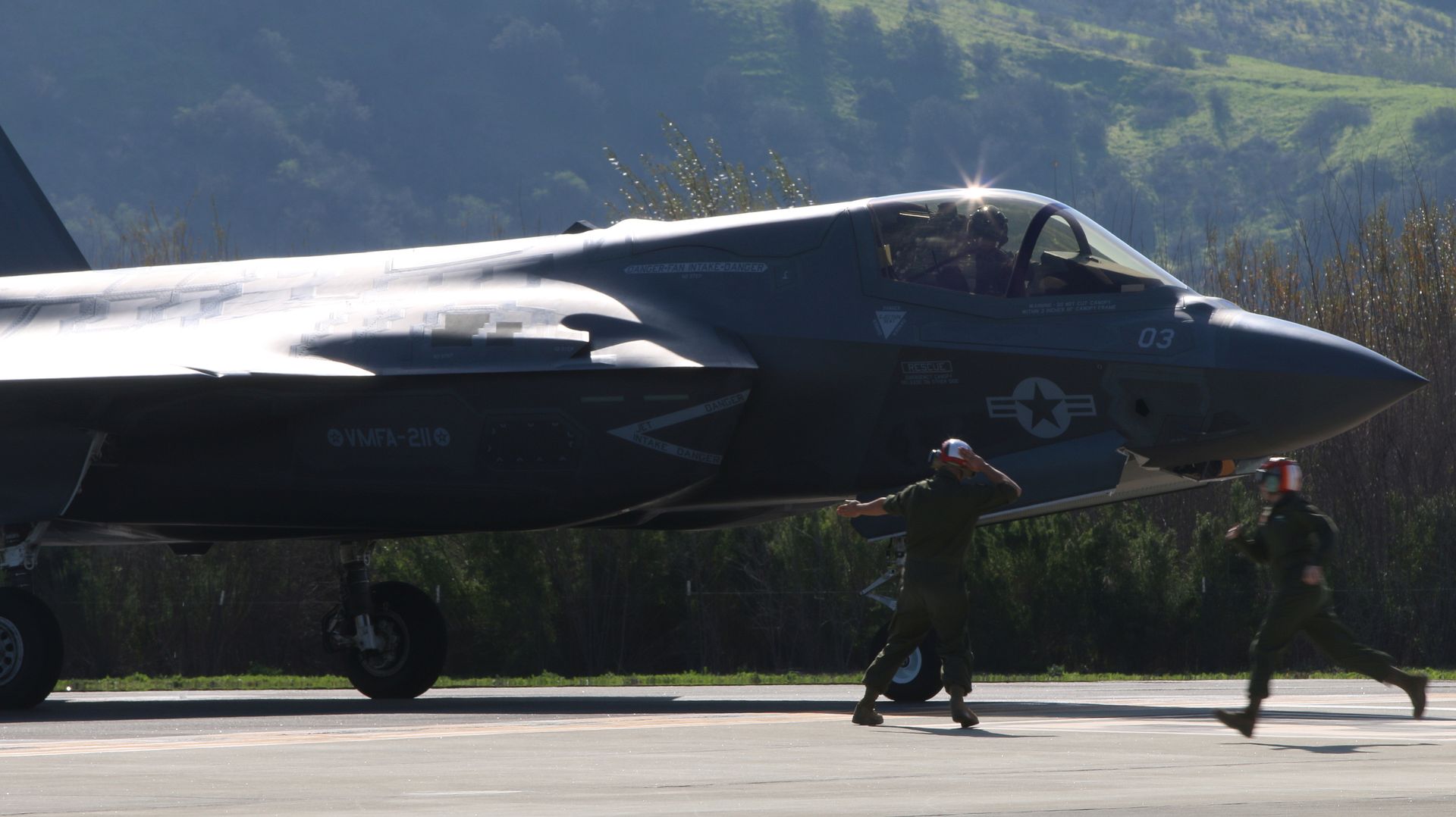


A UH-60 Black Hawk lands outside of the 1st Stryker Brigade Combat Team, 25th Infantry Division Tactical Operations Center (TOC) at the National Training Center, Ft. Irwin, CA., Jan. 18, 2017. The National Training Center conducts tough, realistic, Unified Land Operations with our United Action Partners to prepare Brigade Combat Teams and other units for combat while taking care of Soldiers, Civilians, and Family members. (U.S. Army Sgt. Michael Spandau/Released)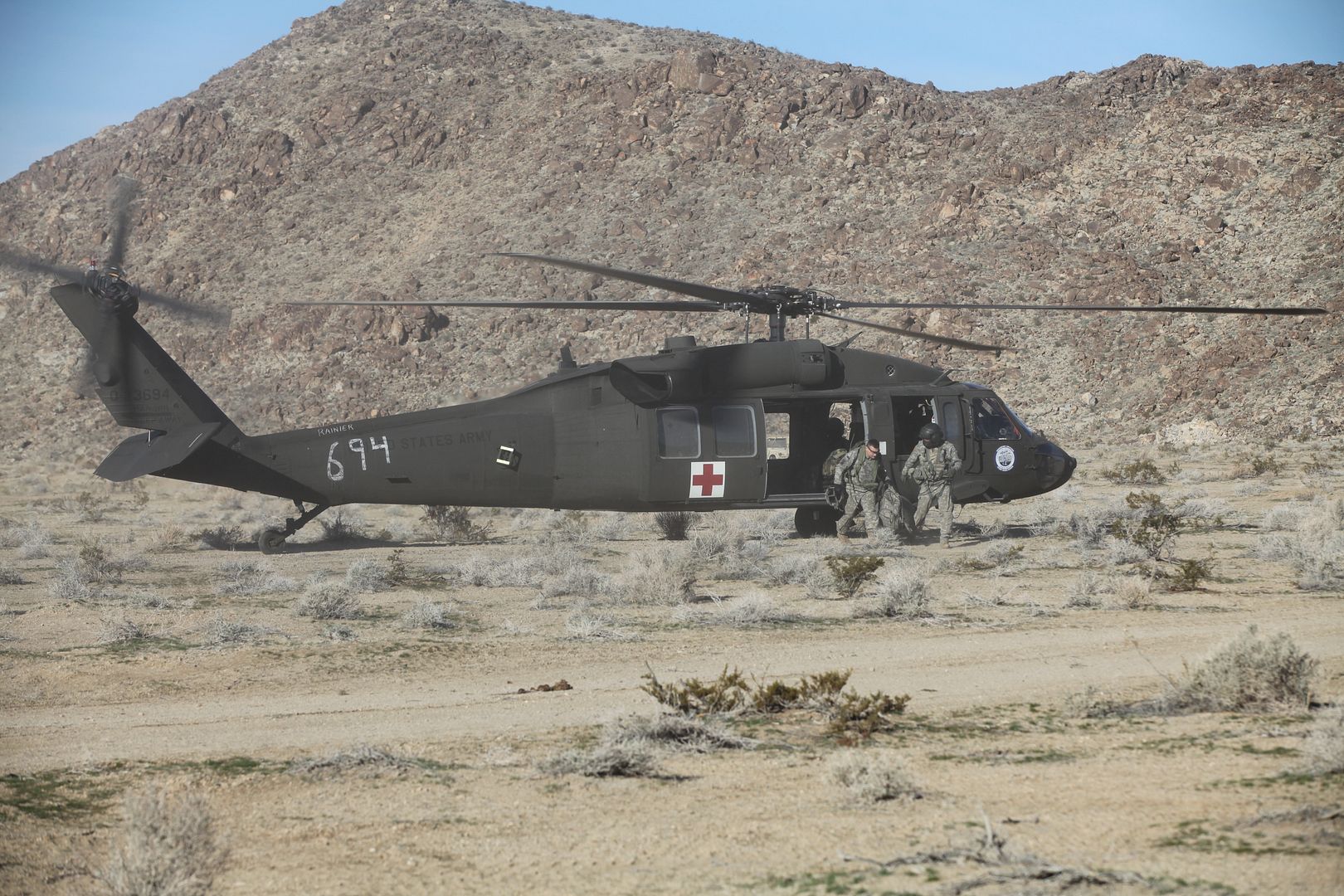
An F-35B Lightning II with Marine Fighter Attack Squadron (VMFA) 121, prepares to land at Marine Corps Air Station Iwakuni, Japan, Jan. 19, 2017. VMFA-121 conducted a permanent change of station to MCAS Iwakuni, from MCAS Yuma, Ariz., and now belongs to Marine Aircraft Group 12, 1st Marine Aircraft Wing, III Marine Expeditionary Force. The F-35B Lightning II is a fifth-generation fighter, which is the world?s first operational supersonic short takeoff and vertical landing aircraft. The F-35B brings strategic agility, operational flexibility and tactical supremacy to III MEF with a mission radius greater than that of the F/A-18 Hornet and AV-8B Harrier II in support of the U.S. ? Japan alliance. (U.S. Marine Corps photo's by Cpl. Aaron Henson)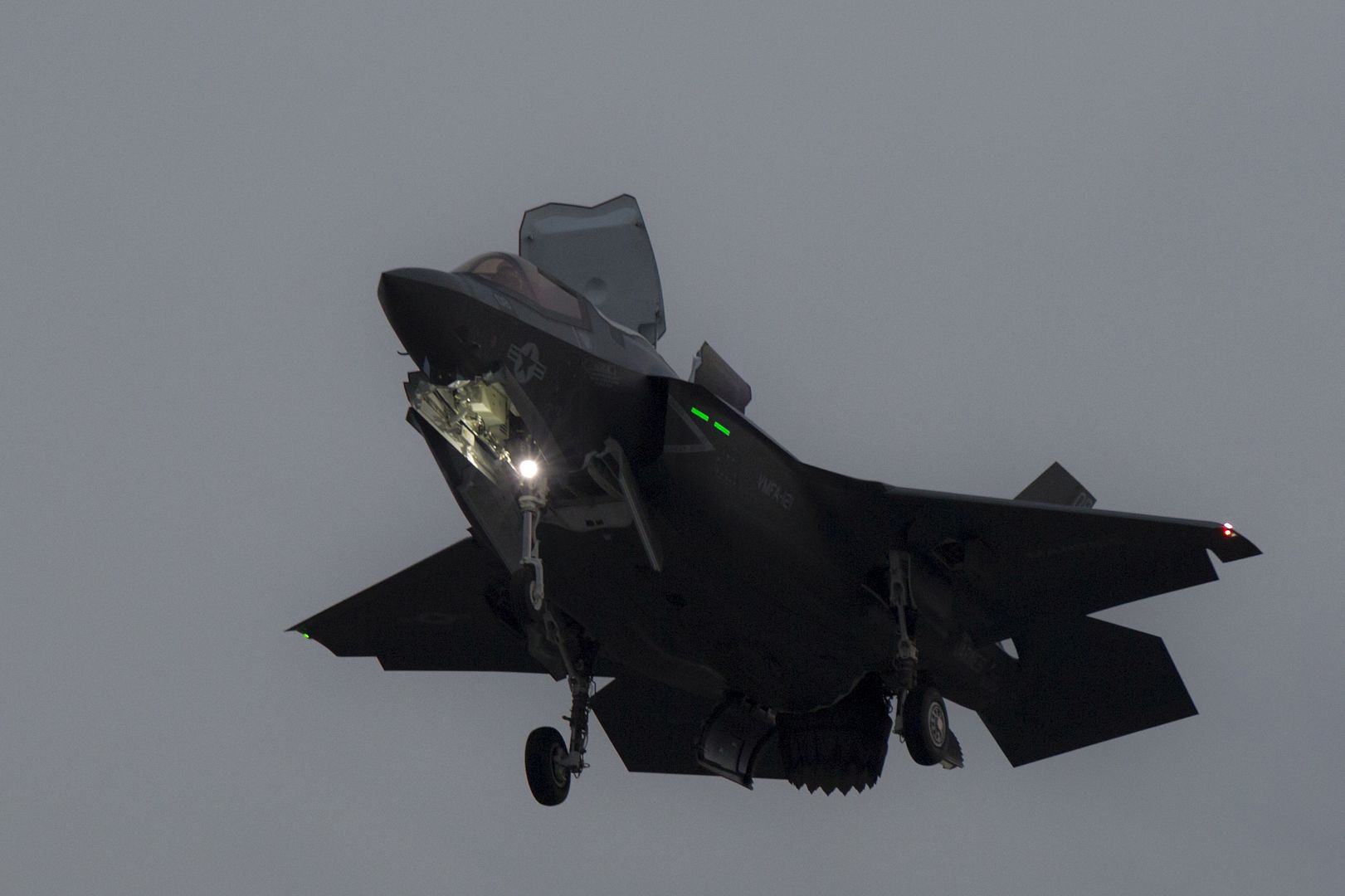
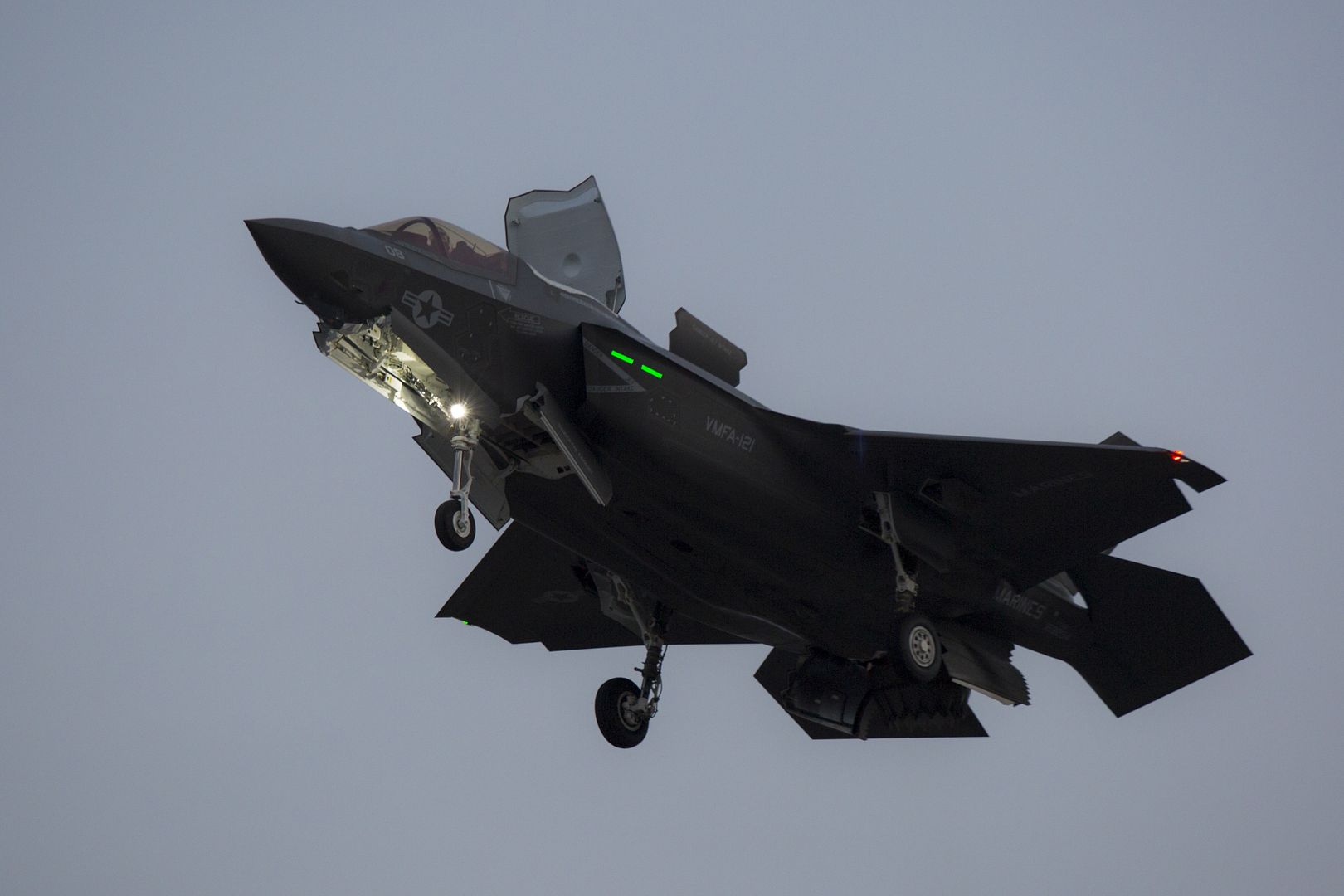
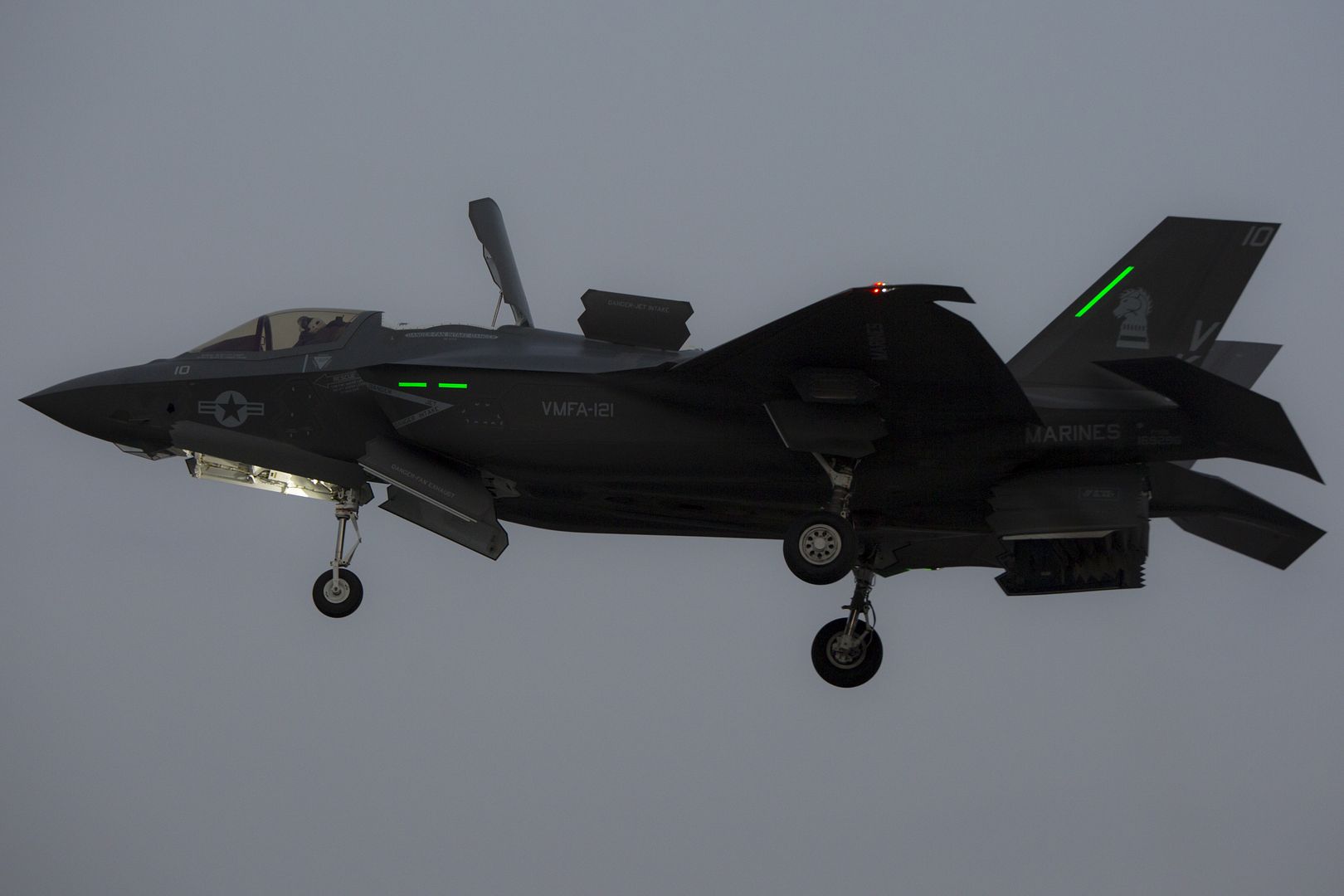
SOUTHWEST ASIA (AFNS) -- Winning the fight against an adversary requires much more than just dropping bombs on targets and taking out key leaders. It requires coordinating the precise movement of necessary supplies to arrive at the right location at the right time; which is why logistics plays such an important role in the war-fighting effort.
Luckily, within the Air Force alone, Air Mobility Command has many aircraft at its disposal to perform logistical missions, but one aircraft in particular proves to be valuable not only for its capacity but also for the speed at which it gets supplies downrange: the C-17 Globemaster III.
C-17s are used frequently in the U.S. Air Force Central Command area of responsibility to get everything from clothing to bombs to a variety of locations around the region.
As a 386th Air Expeditionary Wing tenant unit, the 5th Expeditionary Air Mobility Squadron flies its Globemasters an average of 2,500 sorties a year from the wing?s flightline. These sorties are responsible for moving 180,000 personnel and 80,000 tons of cargo, said Capt. John Goodwin, 5th EAMS Aircraft Maintenance Unit officer in charge.
The 5th EAMS is a geographically separated unit that falls under the 521st Air Mobility Operations Wing at Ramstein Air Base, Germany. They perform their mission not only from the flightline here, but also from a second location.
The squadron consists of more than 60 maintenance personnel who are responsible for ensuring their C-17s remain safe and operational to continue flying these important sorties throughout the AOR. They also fly the same amount of sorties as other expeditionary air mobility squadrons, but with nearly half the typical crew size, Goodwin said.
Since it is such a small crew, the few crew chiefs in the squadron rely on the help of specialists such as electricians and communication-navigation experts to help out with inspections, explained Staff Sgt. Derek Barrett, a 5th EAMS aircraft electrical and environment systems technician.
?If a jet comes down with a specific career field problem like electrical work, we?ll go out there and manage those problems,? Barrett said.
And there are a lot of these inspections. The process of degrading adversaries in Iraq and Afghanistan requires a steady movement of goods to various locations, which means these C-17s and others perform several sorties on a regular basis.
?We could have upwards of eight to 10 sorties or airlift operations for that day that can be coming in or leaving,? Goodwin said. ?We could also be doing transient (aircraft), which don?t belong to us but they may be coming into this location for supplies. If anything goes wrong, we provide maintenance for those units that may need it.?
Many of these sorties require landing in austere environments which can cause wear and tear on the aircraft, especially the tires, which usually return with gashes, gouges and other forms of damage, Goodwin said.
Maintaining aircraft that are used at such a high operational tempo can itself be challenging, but coordinating between two different locations can bring another facet of difficulty to managing the spread-out squadron.
?The biggest challenge for me is to make sure that we?re in touch with both locations,? Goodwin said. ?We do service C-5 (Galaxies) at one base and C-17s at another, so the diversity in what aircraft we?re servicing can also play a part.?
To combat this challenge, Goodwin said the squadron focuses on maintaining good communication to ensure everyone is on the same page and performing their maintenance safely, which is important as it means the aircraft can fly its mission effectively to get the necessary supplies downrange. This also serves as a point of pride for the 5th EAMS maintainers whose job it is to ensure the aircraft keeps flying these important missions.
?As we see the cargo go out and the passengers, I know that the work that we do will make a direct impact to missions in Iraq and all over the world,? Barrett said.
-
 Main AdminJOINT BASE LANGLEY-EUSTIS, Va. (AFNS) --
Main AdminJOINT BASE LANGLEY-EUSTIS, Va. (AFNS) --
Four Air Force fighter jets practiced for the inauguration flyover at Joint Base Langley-Eustis, Virginia, Jan. 19, 2017.
Two generations of fighter aircraft are scheduled to fly in a close formation during the inauguration of President-elect Donald J. Trump at the Capitol in Washington, D.C., Jan. 20, 2017.
The aircraft performing the flyover are the F-15 Strike Eagle from Seymour Johnson Air Force Base, North Carolina, the F-16 Fighting Falcon from Shaw AFB, South Carolina, the F-22 Raptor from JB Langley-Eustis, and the F-35 Lightning II from Eglin AFB, Florida.
?Our mixed formation of fourth generation fighters along with our fifth generation fighters truly represents how the [Air Force] fights,? said Lt. Col. John Echols, the 94th Fighter Squadron commander and formation lead. ?Symbolically, it?s appropriate that the F-22 is out front as it is the world?s most capable fifth generation fighter aircraft.?
According to Echols, the F-22 and F-35 are more survivable in contested airspace and complement each other in their role to establish and maintain air superiority. Gaining air superiority enables the fourth generation fighters, whether that?s an F-15 or F-16 in this case, to employ their substantial capabilities against any enemy.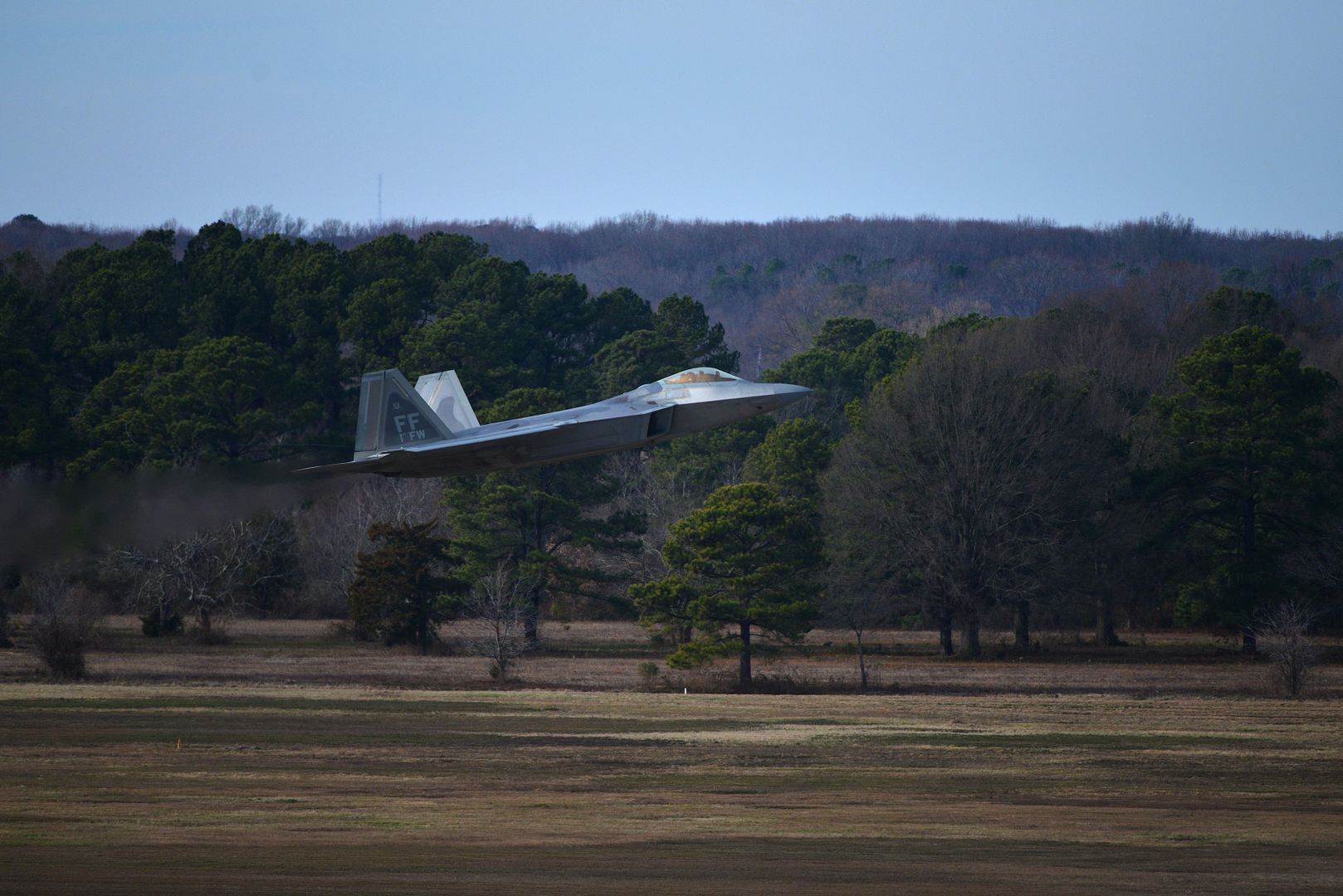
?Our team [at JB Langley-Eustis] is well trained and very focused on accomplishing any mission we are given, whether this is in combat, training or a high-visibility flyover,? said Echols. ?At the end of the day, we just want to represent our Air Force and the American people to the best of our ability. We want to make them proud.?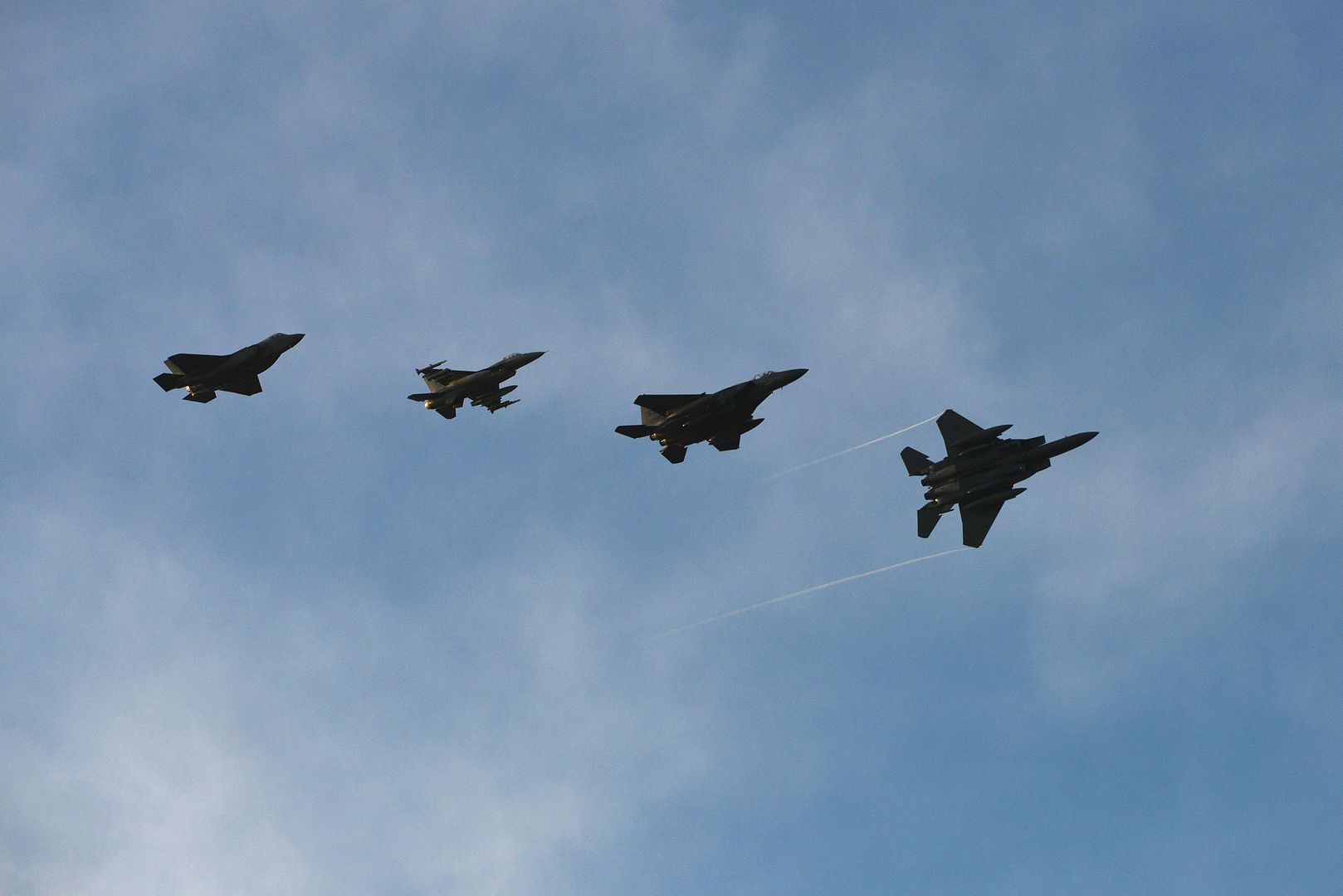
A B-2 Spirit stealth bomber from the 590th Bomb Wing at Whiteman Air Force Base prepares to take off in support of operations near Sirte, Libya. In conjunction with the Libyan Government of National Accord, the U.S. military conducted precision airstrikes Jan. 18, 2017 destroying two Daesh camps 45 kilometers southwest of Sirte. (U.S. Air Force Photo by Senior Airman Joel Pfiester)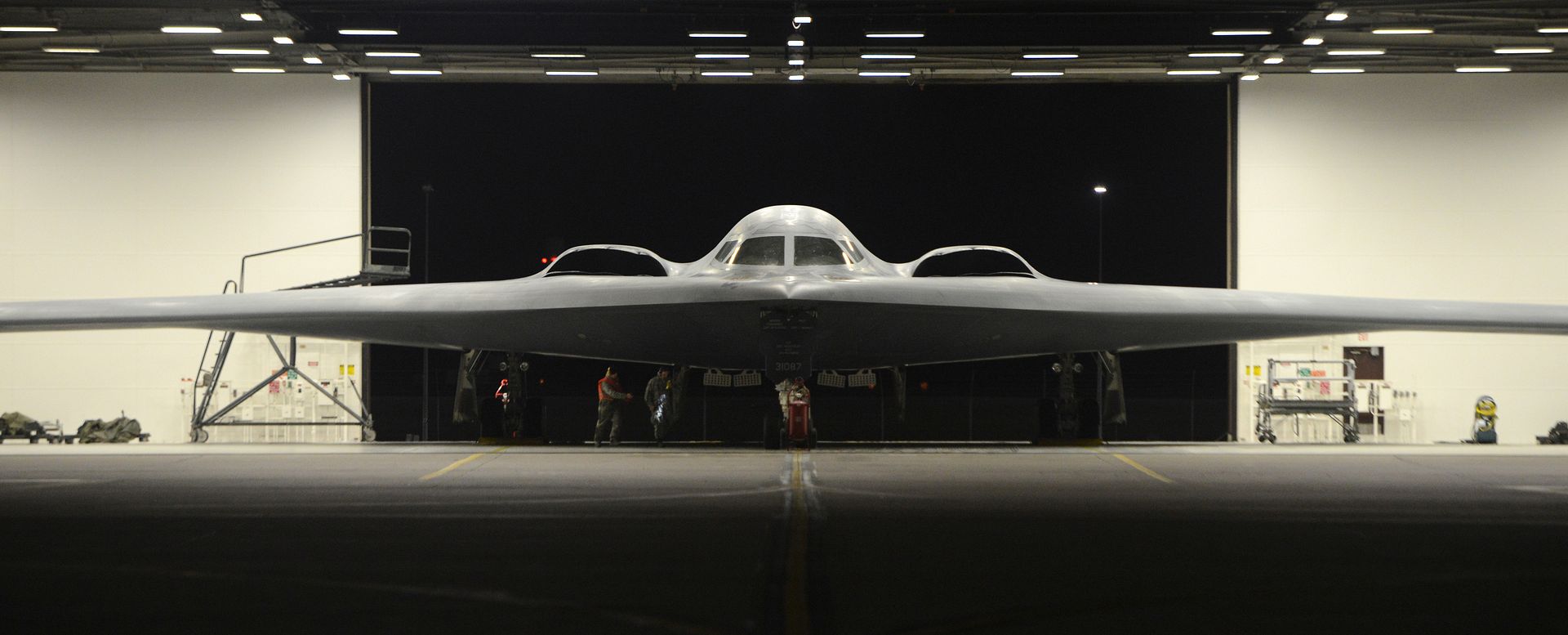
A B-2 spirit stealth bomber from the 509th Bomb Wing at Whiteman Air Force Base takes off in support of operations near Sirte, Libya. In conjunction with the Libyan Government of National Accord, the U.S. military conducted precision airstrikes Jan. 18, 2017 destroying two Daesh camps 45 kilometers southwest of Sirte. (U.S. Air Force photo by SrA Jovan Banks)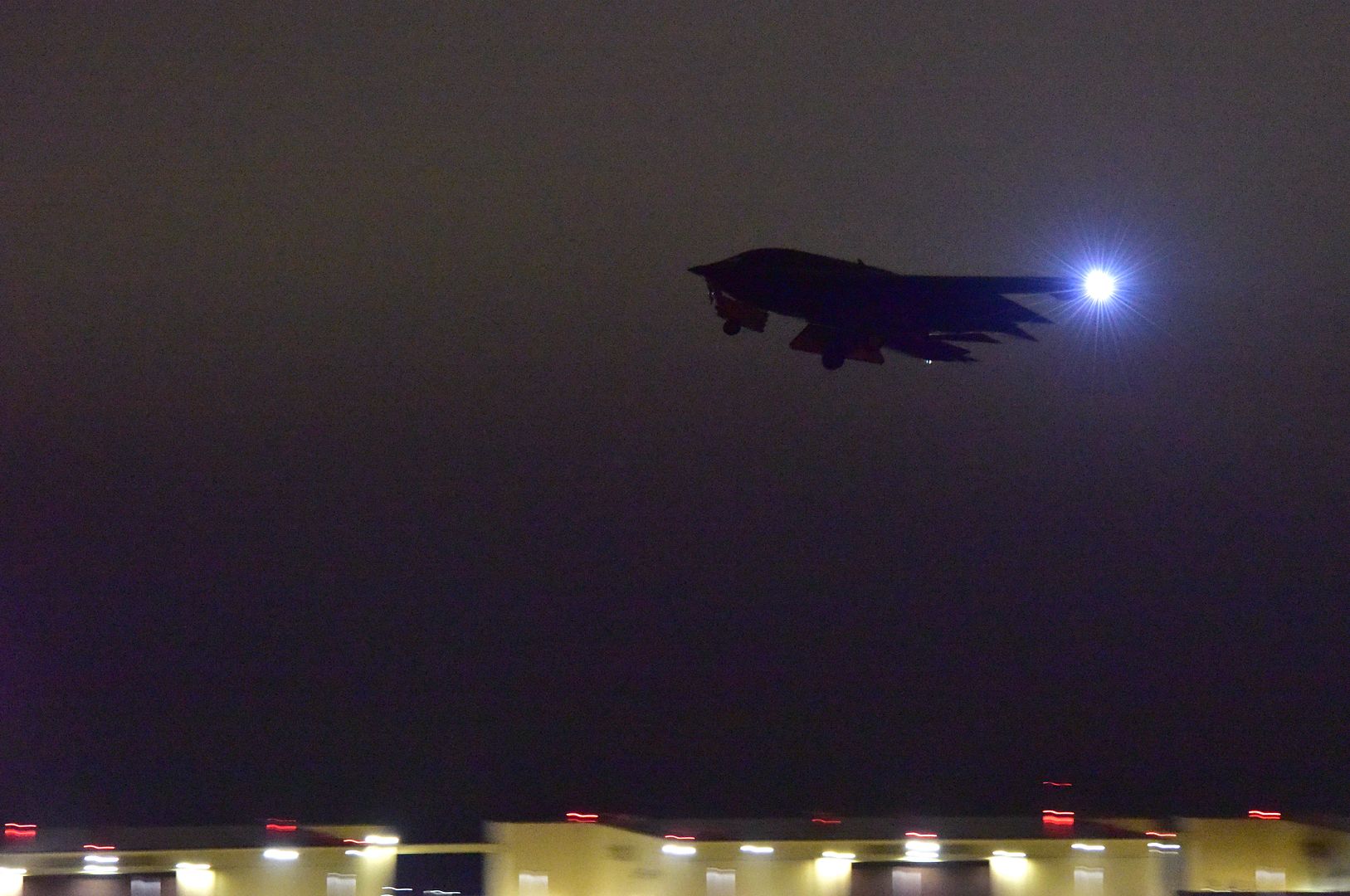
A B-2 Spirit stealth bomber lands at Whiteman Air Force Base, Mo., Jan. 19, 2017. Two B-2s returned after an approximate 30-hour sortie in support of operations near Sirte, Libya. In conjunction with the Libyan Government of National Accord, the U.S. military conducted precision airstrikes Jan. 18, 2017, destroying two Daesh camps 45 kilometers southwest of Sirte. (U.S. Air Force photo by Senior Airman Joel Pfiester)
Capt. Skyler Collins and Maj. Caleb Edmondson, 335th Fighter Squadron F-15E Strike Eagle pilot and weapons system officer, fly a practice route, Jan. 19, 2017, in the skies over Seymour Johnson Air Force Base, North Carolina, in preparation for the official fly-over of the 58th Presidential Inauguration. The 335th FS F-15E Strike Eagle will fly in a four-ship formation alongside a 94th FS F-22 Raptor from Langley AFB, Virginia; a 58th FS F-35 Lightning II from Eglin AFB, Florida; and a 55th FS F-16 Fighting Falcon from Shaw AFB, South Carolina, during President-Elect Donald Trump's inauguration ceremony in Washington, Jan. 20, 2017. (U.S. Air Force photo by Airman Shawna L. Keyes)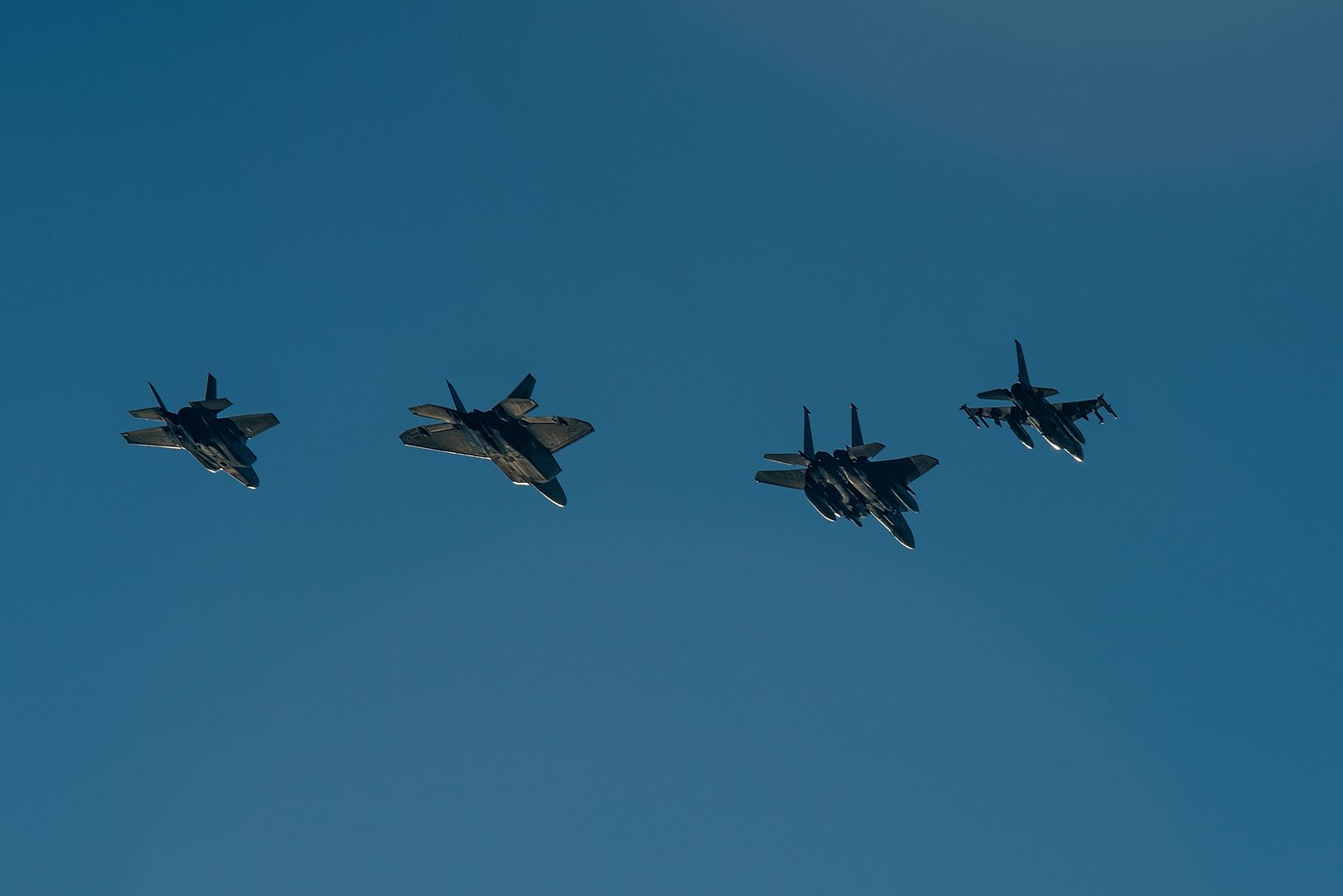
U.S. Marine Corps Maj. Gen. Russell A. Sanborn, commanding general of 1st Marine Aircraft Wing (MAW), addresses the audience during the welcoming ceremony of Marine Fighter Attack Squadron (VMFA) 121 at Marine Corps Air Station Iwakuni, Japan, Jan. 20, 2017.VMFA-121 conducted a permanent change of station to MCAS Iwakuni, from MCAS Yuma, Ariz., and now belongs to Marine Aircraft Group 12, 1st Marine Aircraft Wing, III Marine Expeditionary Force. The F-35B Lightning II is a fifth-generation fighter, which is the world?s first operational supersonic short takeoff and vertical landing aircraft. The F-35B brings strategic agility, operational flexibility and tactical supremacy to III MEF with a mission radius greater than that of the F/A-18 Hornet and AV-8B Harrier II in support of the U.S. ? Japan alliance. (U.S. Marine Corps photo by Cpl. Nathan Wicks)
Joint Base Elmendorf-Richardson, Alaska -- On any given day at Joint Base Elmendorf-Richardson, you can hear sound of freedom as the F-22 Raptors circle the mountains and come in for a landing. There was a different tone to that sound Jan. 9 as the Marine F-35B Lightning II fighter jets joined the orchestra.
?There aren?t a lot of firsts in the world; they happen once and that?s it and it?s always amazing when you see it first-hand,? said 477th Fighter Group Commander Col. Christopher Ogren.
JBER got the rare opportunity to be part of one of those historic moments last week when the crew from Marine Fighter Attack Squadron 121 stopped by with their F-35Bs while transitioning from Yuma, AZ to Japan.
?This operation is good for the F-35 and its crew to experience the harsh environment of Alaska,? said Marine Staff Sgt. Andre Villanueve, F-35B maintenance control member. ?Joint Base Elmendorf-Richardson is a great base, the Air Force took care of our crew and our aircraft.?
?This is a first for an operational F-35 squadron in Alaska,? said Marine Staff Sgt. Cassidy Cleinmark, an F-35 avionics maintenance control Marine. ?This is an unprecedented movement for the F-35 operational unit.?
The F-35 is the newest fighter jet, and fifth-gen fighters aren?t new to JBER. The last time a new aircraft entered the JBER airspace was August 2007, when the base became the first Pacific Air Forces installation to receive the F-22 Raptor which joined the 3rd Wing and Air Force Reserve Command?s 477th FG.
Master Sgt. Mark Ling, who works as an F-22 expediter for the 90th Aircraft Maintenance Unit, was one of the first 477th Fighter Group aircraft crew chiefs who worked on the Raptor.
?In 2007, the F-22 Raptor was the aircraft maintainer?s top choice to learn and work on,? he said. ?It was a new jet that we all knew would change the fighter world forever. Even ten years later, it is still an exciting, state-of-the-art aircraft to work with.?
Fast-forward to 2017 and JBER can add the F-35B transition pit-stop as another aviation first.
?As a plane captain, I make sure the aircraft is safe for flight, including the fuel systems, propulsion, pre-flight inspection and aircraft marshaling,? said Marine Cpl. Alexander Noonan, a powerline Marine, similar to an Air Force crew chief mechanic. ?I like the F-35; it is relatively easy to work on, with good contractor support. The capabilities of the F-35 are impressive, it combine?s legacy aircraft into one.?
While most crew chiefs in the Air Force, and across the military, work on legacy aircraft that have accomplished many missions, those working on the new fighters have a different perspective. Cleinmark, who has eight years of experience with Marine avionics and maintenance control, said he enjoys working with the F-35, getting to see the big picture of where the future of aviation is going.
?The F-35 is tenfold better to work with than any aircraft I?ve been assigned to; maintenance is less in-depth than legacy aircraft and more innovative.?
The transition to Marine Corps Air Station Iwakuni marks a significant milestone in the F-35B program as the United States continues to lead the way in stealth fighter attack aircraft advancement.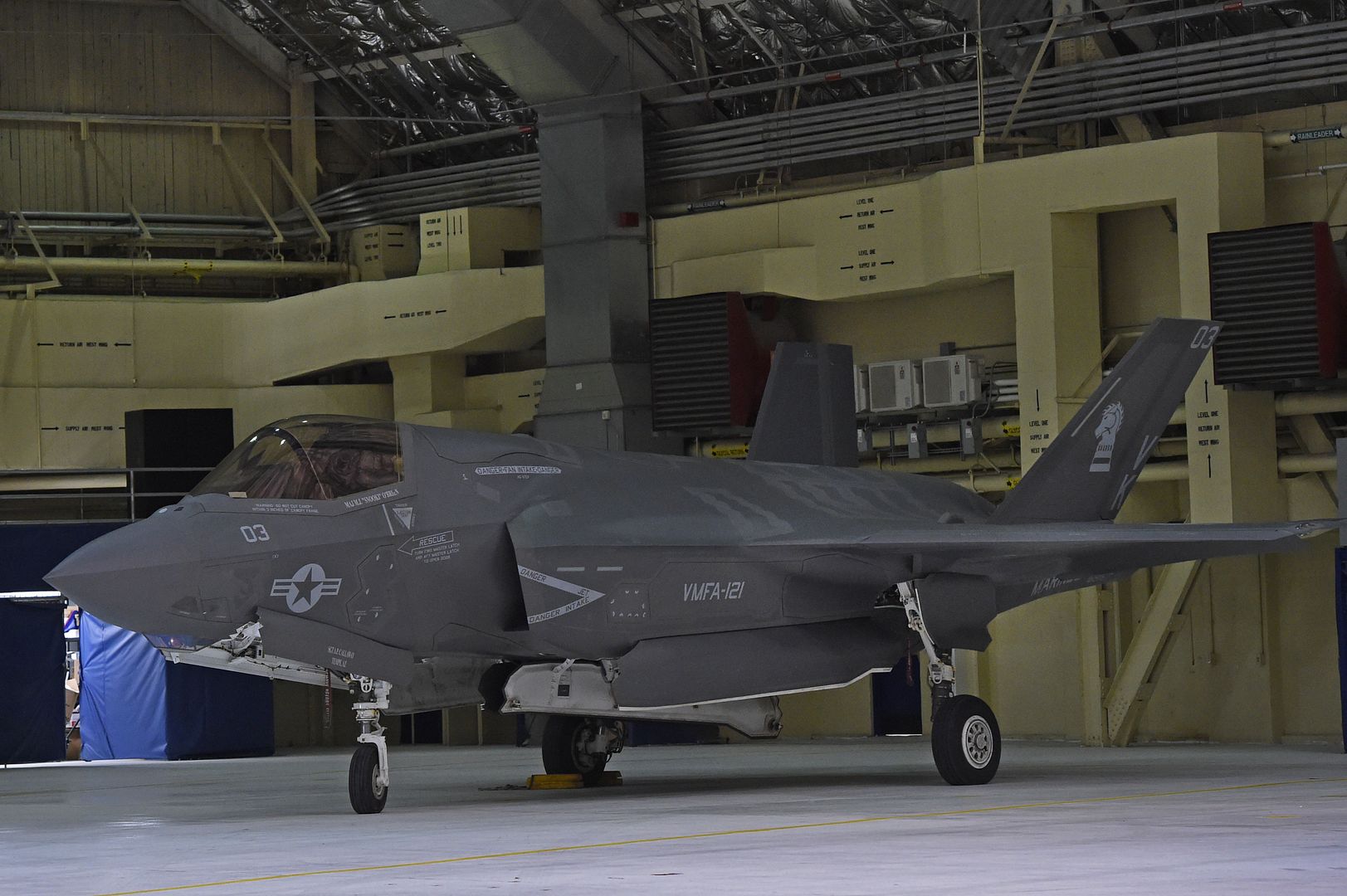
Amsterdam, The Netherlands, January 19, 2017 ? Airlink, Southern Africa?s largest independent regional airline, is joining the E-Jet operator?s family. The airline is acquiring five E-Jets - three E170s and two E190s, from ECC Leasing, a wholly-owned Embraer subsidiary. Airlink will start to receive the aircraft in the first half of 2017.
Airlink already operates a large fleet of ERJ aircraft ? last December, the airline started to add 11 further ERJ 140 jets to its fleet. By the end of the fourth quarter of 2017, the airline will be operating 30 ERJs, comprising all three types - ERJ 135, ERJ 140 and the ERJ 145.
Rodger Foster, CEO of Airlink, said, ?This is the beginning of the implementation of a well planned growth and modernization strategy for Airlink that includes replacing our current fleet of Avro RJ85s over the next three years. The strategy calls for a total of 13 E-Jets, and we are in the process of sourcing the balance of the fleet requirement ? an additional 8 E190s ? from the market. The unique performance characteristics of the E-Jet family will enable Airlink to operate within the challenging environment of the region, including short field and ?hot and high? operations, while managing capacity and providing for growth.?
Foster continued, ?the E190?s ETOPS (Extended Twin Engine Operations) capability and range presents Airlink with new market opportunities to address isolated destinations that were previously beyond our reach and in some instances that have never enjoyed the privilege of reliable scheduled air services. Embraer has proven to be an excellent partner for Airlink on our ERJ fleet, and we look forward to the continuation of superb customer support as we enter a new chapter of growth with the E-Jets.?
?Welcoming another operator to the E-Jet Family is always a great endorsement of our aircraft and the Embraer experience?, said Simon Newitt, Vice President, Africa, Latin America & Portugal, Embraer Commercial Aviation. ?We are very proud that Airlink will now become the first South African operator of the type.?
Embraer aircraft have been operating in Africa since 1978, when the first Bandeirante turboprop arrived on the continent. Currently, there are 127 Embraer aircraft in operation with 39 airlines in 19 African countries, performing a vital role in connectivity.
Embraer is the world?s leading manufacturer of commercial jets with up to 130+ seats. The Company has 100 customers from all over the world operating the ERJ and the E-Jet families of aircraft. For the E-Jets program alone, Embraer has logged more than 1,700 orders and over 1,300 deliveries, redefining the traditional concept of regional aircraft by operating across a range of business applications.
About Airlink
Airlink is the largest independent regional airline in southern Africa, linking more passengers to the smaller towns, cities and regional centers than any other local airline. Airlink connects 36 destinations in 9 African countries.
The airline currently carries more than 1.4m passengers on 44,800 flights annually. Airlink has shown growth in every single year of its existence. Our passenger profile represents approximately 30% leisure and 70% business.
Airlink?s business destinations include: several State Capital Cities such as Antananarivo, Lusaka, Harare; multiple provincial Capital cities such as Pietermaritzburg, Polokwane, Bloemfontein, Kimberley and Nelspruit; Industrial towns such as Upington, Phalaborwa, Ndola, Tete, Sishen, Nampula, Beira, Pemba and Bulawayo. Additionally, airlink offers some exotic tourist destinations such as Cape Town, Mthatha, George, Windhoek, Okavango Delta (Maun), Chobe River (Kasane), Livingston, Skukuza, Vilanculos, and Nosy Be.
Airlink?s main hub is Johannesburg where our schedule is aimed at addressing the complexities of market demand and is specifically designed to satisfy point to point travel requirements whilst also optimizing interline connectivity, particularly with the arrivals and departures of our franchise partner of twenty years, South African Airways, and all other IATA member airlines.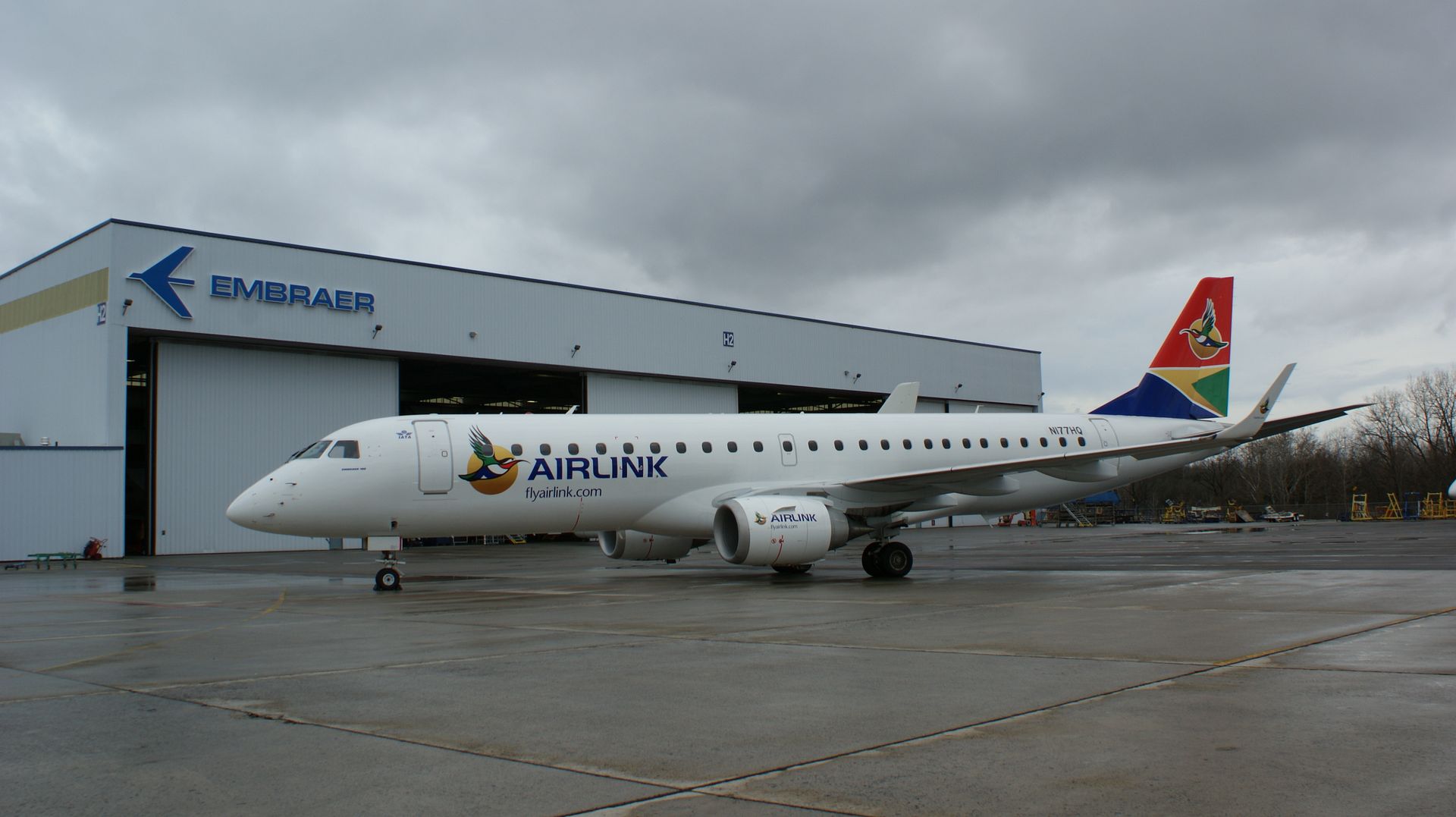
The Royal New Zealand Air Force?s 2017 Air Tattoo is turning out to be a fighter jet extravaganza, with two F-15SG aircraft added to the line-up for the event on February 25 and 26.
The Air Tattoo promises to be one of the most exciting events of the summer and the confirmation of the F-15SGs from the Republic of Singapore Air Force (RSAF) for the ground display complements the Royal Australian Air Force?s F-18 Hornets and the United States Air Force?s F-16 Fighting Falcons in the flying display at RNZAF Base Ohakea.
Ohakea Base Commander Group Captain Nick Olney says the latest confirmation for the two-day festival of military aircraft will thrill aircraft enthusiasts around the country.
?We?re really excited about the RSAF confirmation and it?s a great addition to the already excellent line-up we have for the public,? he says.
Other confirmed militaries attending are the Royal Air Force, Royal Canadian Air Force, New Caledonia Armed Forces and Japan Air Self-Defense Force.
?We will also have all the RNZAF aircraft out to show to the public and give demonstrations. It?s going to be an action-packed way to celebrate our 80th anniversary,? Group Captain Olney says.
?I want to remind people that they will not be able to drive up and buy a ticket at the gate on the day so they need to buy their tickets early to avoid disappointment. This is also to help alleviate any traffic issues.?
Tickets are limited for the 2017 Air Tattoo and are on sale now through Ticketek.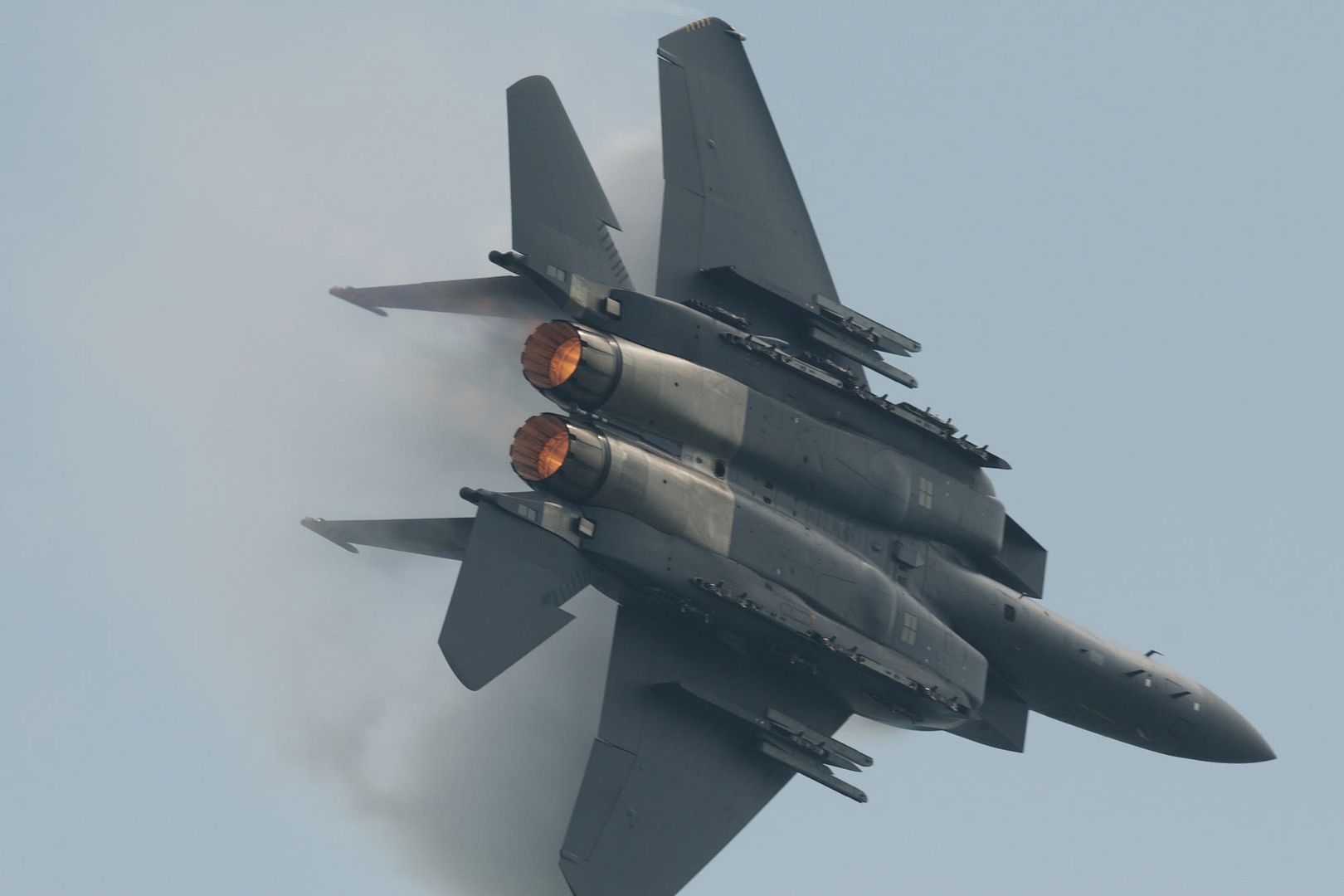
-
 Main AdminAn F-15 Eagle taxis onto the runway at Nellis Air Force Base, Nevada Jan. 21, 2017. Airmen from the 125th Fighter Wing deployed for 3 weeks to Nellis AFB for Red Flag 17-1, the first Red Flag training exercise to integrate the F-35s. (Air National Guard photo's by Master Sgt. William J. Buchanan/Released)
Main AdminAn F-15 Eagle taxis onto the runway at Nellis Air Force Base, Nevada Jan. 21, 2017. Airmen from the 125th Fighter Wing deployed for 3 weeks to Nellis AFB for Red Flag 17-1, the first Red Flag training exercise to integrate the F-35s. (Air National Guard photo's by Master Sgt. William J. Buchanan/Released)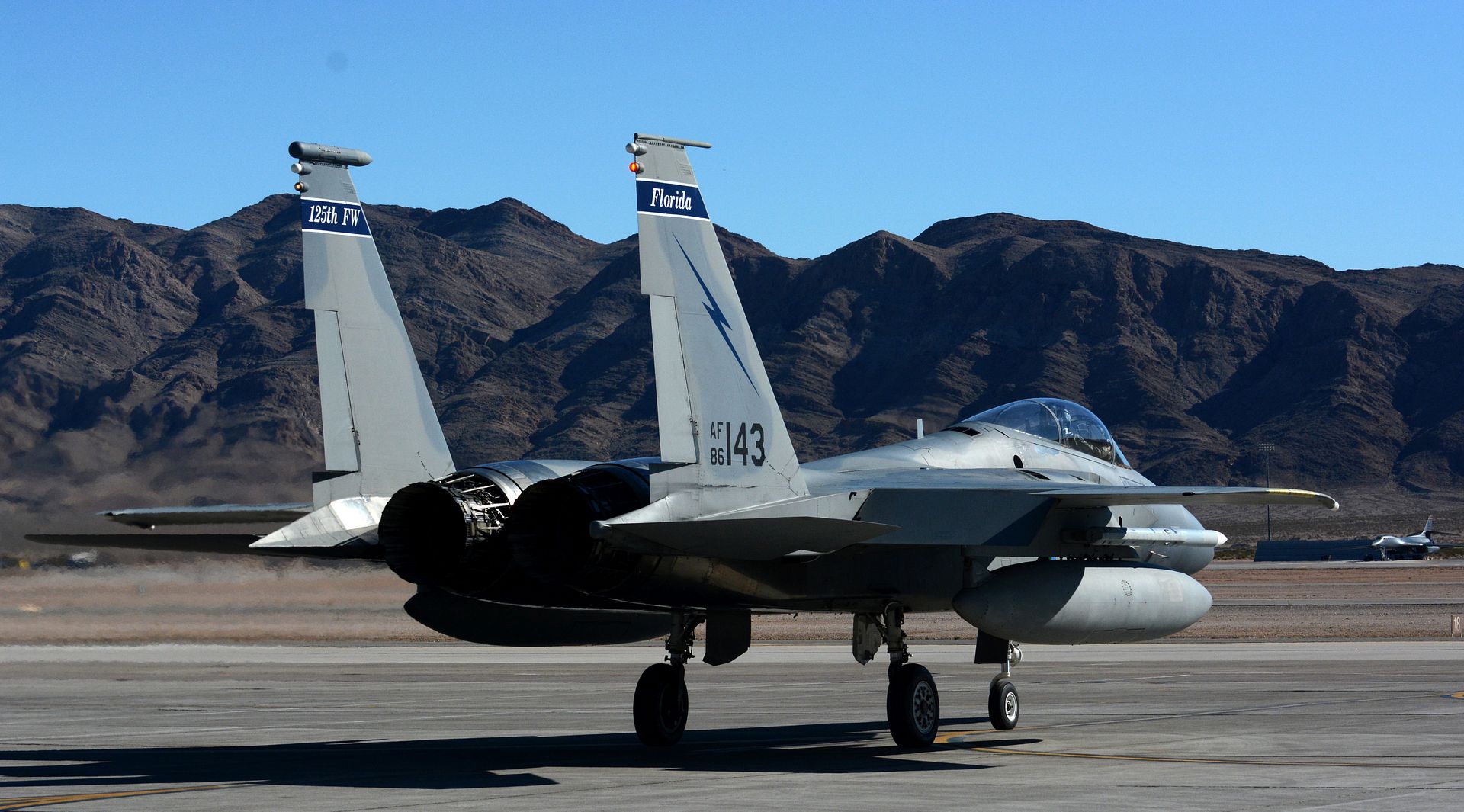
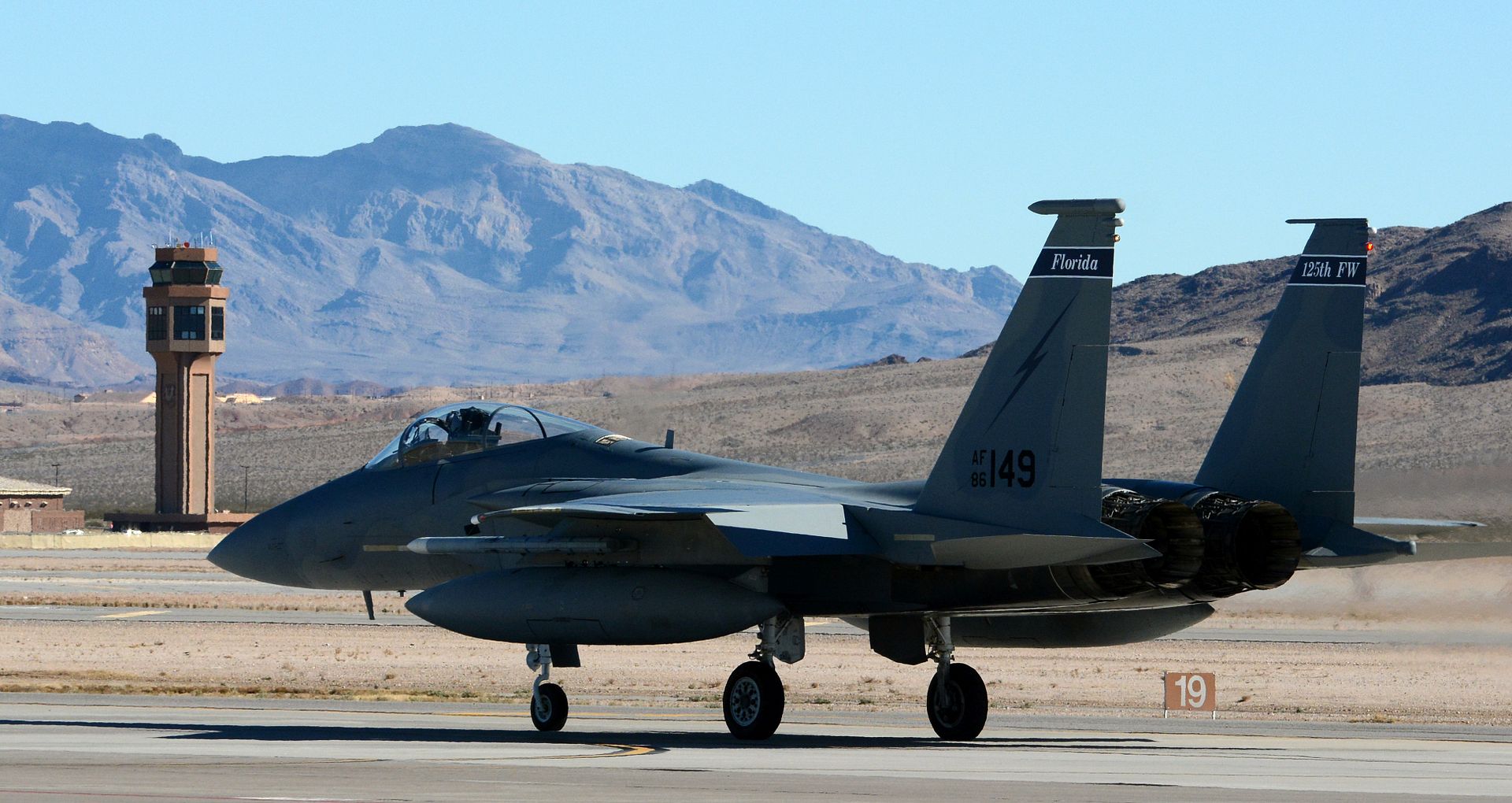
An F-15 Eagle takes off from the runway at Nellis Air Force Base, Nevada Jan. 21, 2017. Airmen from the 125th Fighter Wing deployed for 3 weeks to Nellis AFB for Red Flag 17-1, the first Red Flag training exercise to integrate the F-35s. (Air National Guard photo by Master Sgt. William J. Buchanan/Released)
A Florida Air National Guard F-15 Eagle contrasts with the mountains surrounding Nellis Air Force Base, Nevada Jan. 19, 2017. Airmen from the 125th Fighter Wing deployed for 3 weeks to Nellis AFB for Red Flag 17-1, the first Red Flag training exercise to integrate the F-35A. (Air National Guard photo by Master Sgt. William J. Buchanan/Released)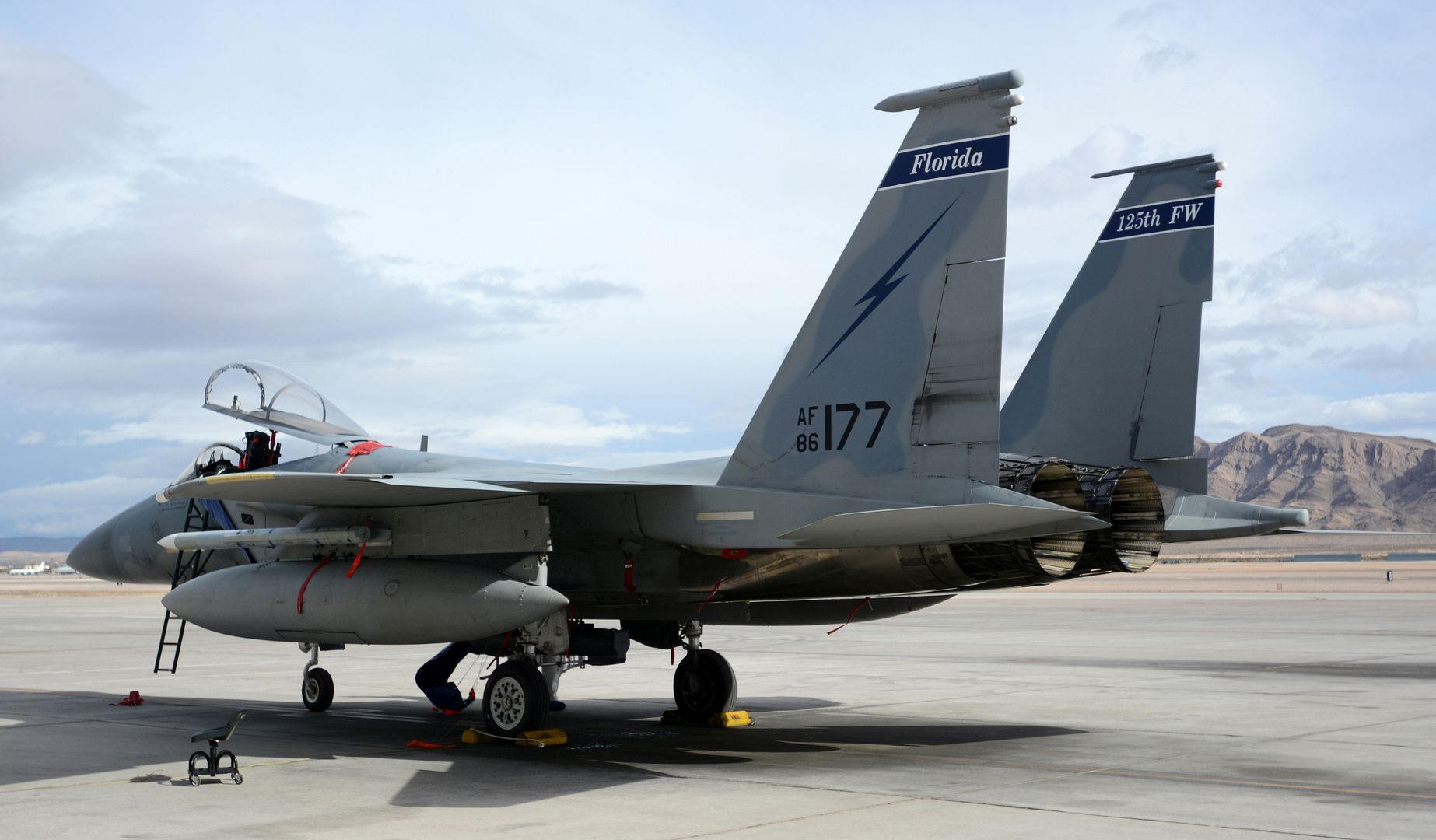
KIRTLAND AIR FORCE BASE, N.M. (AFNS) -- Air Force B-52H Stratofortress aircrews recently tested three unarmed AGM-86B air-launched cruise missiles, demonstrating the bomber force?s ability to configure, load, fly and deliver the nation?s only nuclear cruise missile.
The B-52H aircrews departed Minot Air Force Base, North Dakota, for the Utah Test and Training Range, about 80 miles west of Salt Lake City, and launched the unarmed ALCMs during three separate sorties.
The ALCM is a key air component of the nuclear triad, providing the nation a strategic capability to assure our allies and deter potential adversaries. It provides a clear, visible and tailorable deterrent effect, and denies geographic sanctuaries to potential adversaries.
The AGM-86B is designed to deliver a nuclear payload on target, destroying it on impact. As a standoff weapon, the ALCM can be launched from outside the combat area, allowing aircrews to strike distant targets with a high degree of accuracy without exposing themselves to potentially deadly enemy fire. A B-52H can carry six ALCMs on each of the two externally mounted pylons and eight internally on a rotary launcher, giving the B-52H a maximum capacity of 20 missiles.
The ALCM sustainment program is managed by the Air Force Nuclear Weapons Center and the tests were conducted under Air Force Global Strike Command?s Nuclear Weapon System Evaluation Program, part of the Air Force?s ongoing effort to test weapons systems in training missions and prepare aircrews for future mission requirements. The integrated test team also included personnel, assets and aircraft from AFGSC's 5th Bomb Wing at Minot AFB; its 2nd BW at Barksdale AFB, Louisiana; and Air Combat Command's 53rd Wing at Eglin AFB, Florida.
The ALCM was initially designed with a 10-year life span but has been in use for about 35 years, largely due to successful sustainment programs. While the current ALCM remains a safe, secure, effective and viable nuclear capability, it faces increasing sustainment and operational challenges against emerging threats as it continues to age. The Long Range Stand Off weapon is being developed to replace the ALCM, which the Air Force expects to start fielding by 2030.
?The LRSO will be a critical element of the United States? nuclear deterrence strategy, but we must continue to support the ALCM program until it is fielded and these recent tests are clear indicators of the ALCM?s effectiveness and reliability,? said Maj. Gen. Scott Jansson, the AFNWC commander and Air Force program executive officer for strategic systems.
The LRSO weapon system will be a cost-effective force multiplier for B-52, B-2 Spirit and B-21 Raider to credibly deter adversaries and assure U.S. allies of our deterrent capabilities. Currently in source selection, up to two LRSO contracts are expected to be awarded in the fourth quarter of fiscal year 2017.
About 200 personnel in AFNWC?s Air-Delivered Capabilities Directorate deliver, sustain and support air-delivered nuclear weapon systems. The directorate is located at Kirtland AFB and oversees locations at Tinker AFB, Oklahoma; Eglin AFB, Florida; Joint Base San Antonio, Texas; Ramstein AB, Germany; Robins AFB, Georgia; and Wright-Patterson AFB, Ohio. The ALCM sustainment program is managed at the Tinker AFB location.
The AFNWC is responsible for synchronizing all aspects of nuclear materiel management on behalf of Air Force Materiel Command in direct support of AFGSC. Headquartered at Kirtland AFB, the center has about 1,000 personnel assigned at 17 locations worldwide.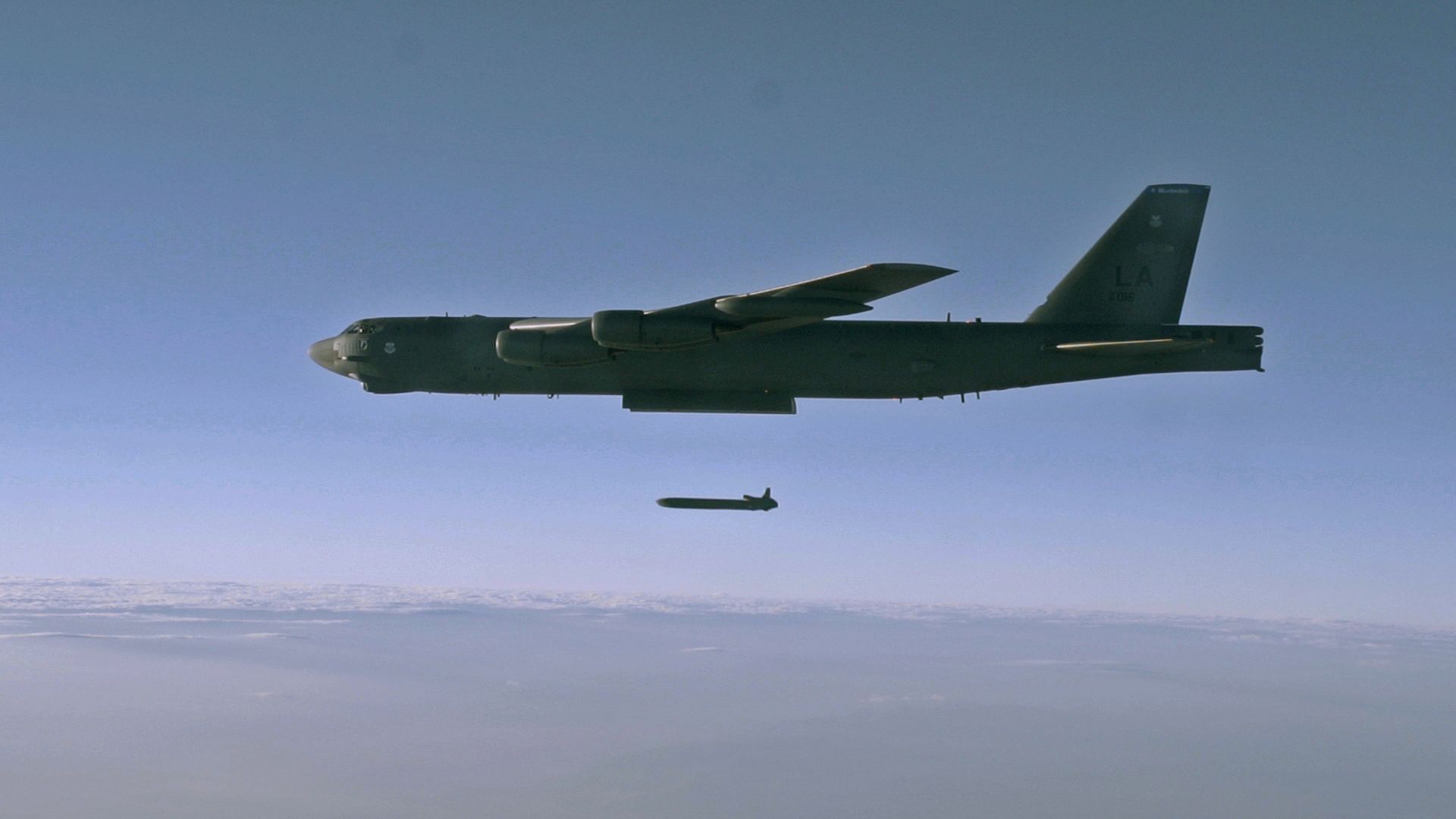
EGLIN AIR FORCE BASE, Fla. -- The 33rd Fighter Wing loaded and released the Air Education and Training Command?s first live bombs from an F-35A here, January 17.
In total, six aircraft were loaded with armed GBU-12s, and two bombs were released over the Eglin's range.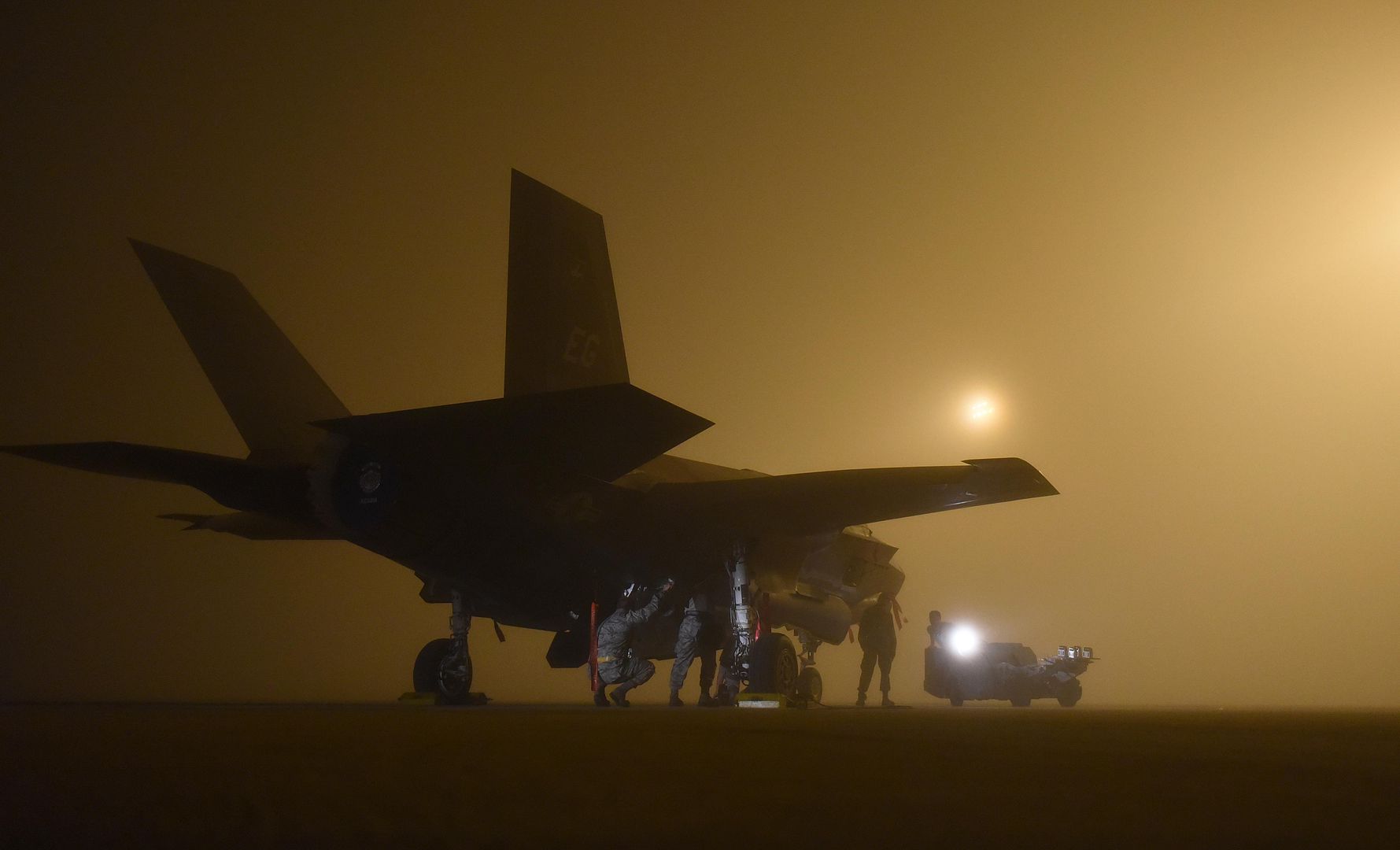
The GBU-12 is a 500-pound laser guided general-purpose bomb. The F-35 can carry a combined payload of 2.3K pounds of air-to-air and air-to-ground munitions internally, with an extended capacity of munitions on each wing.
?I?m incredibly proud of our maintainers and pilots for successfully loading and releasing bombs on the range this week,? said Col. Lance Pilch, 33rd FW commander. ?This further proves our Airmen and Sailors are the lethality behind this weapons system.?
While this is the first live bomb to be loaded into an F-35A here, weapons personnel also regularly load the 2,000-pound GBU-31 Joint Direct Attack Munition and the AIM-120 missile as part of their training and readiness.
?It?s no accident that our load crews are good at what they do,? said Senior Master Sgt. Jennifer Dunn, 33rd FW wing weapons manager, ?Each weapons loader hones their loading skills under the scrutiny of evaluators, strict adherence to technical orders and up against stringent time standards on a monthly basis. I am very proud of every weapons loader in the 33rd FW. Each and every one played an integral role in making this weeks? events successful. They worked hard for this achievement and they all earned it.?
The first F-35A weapons load crews here were certified just over two years ago. For several of the former students, who are as young as 21 years, this was their first time loading live munitions on any aircraft platform.
?It feels great to have been here for two years and see the program develop and grow,? said Airman 1st Class Jacob Chandler, 33rd Aircraft Maintenance Squadron aircraft armament systems journeyman. ?It?s awesome to be a part of this and it?s possible because of the training we receive.?
Much of the success in loading these live weapons is due to the in-depth training that load crews receive. However, their leadership accredits it to these Airmen?s drive and vision.
?This is almost second nature to them,? said Technical Sgt. Zachary Watts, 33rd Maintenance Group loading standardization crew member. ?They are fully prepared to execute their mission and it shows. It speaks to the type of Airmen we are getting in today?s Air Force. They want to work hard, they try hard and they do what they are supposed to. They have initiative and prove we are moving in a good direction.?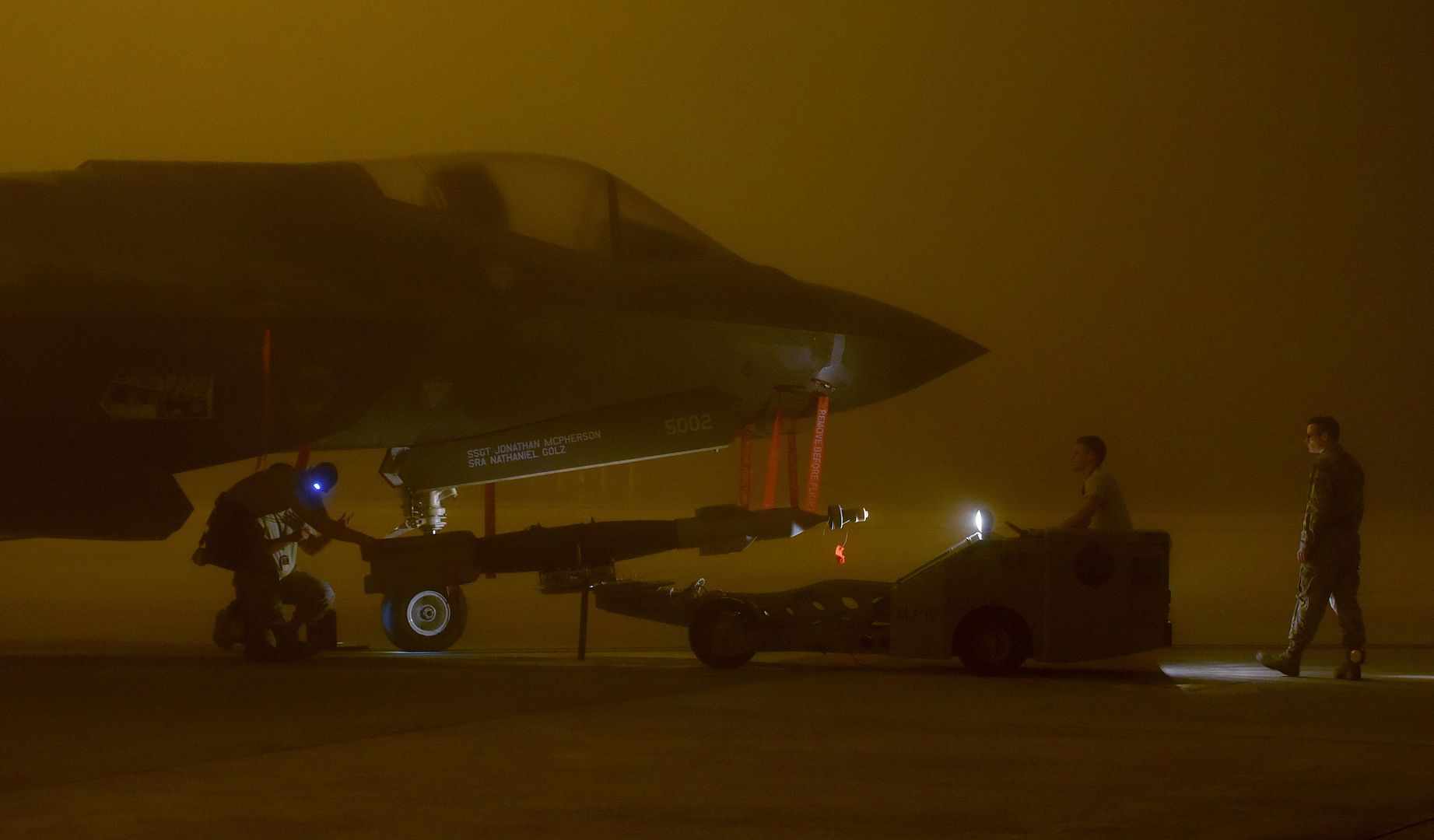
-
 Main AdminA CH-53E Super Stallion with Marine Heavy Helicopter Squadron (HMH) 464 flies near Brunswick, Maine, Jan. 22, 2017. HMH-464 conducted the exercise to increase the squadron?s operational readiness in extreme conditions. (U.S. Marine Corps photo's by Lance Cpl. Jered T. Stone)
Main AdminA CH-53E Super Stallion with Marine Heavy Helicopter Squadron (HMH) 464 flies near Brunswick, Maine, Jan. 22, 2017. HMH-464 conducted the exercise to increase the squadron?s operational readiness in extreme conditions. (U.S. Marine Corps photo's by Lance Cpl. Jered T. Stone)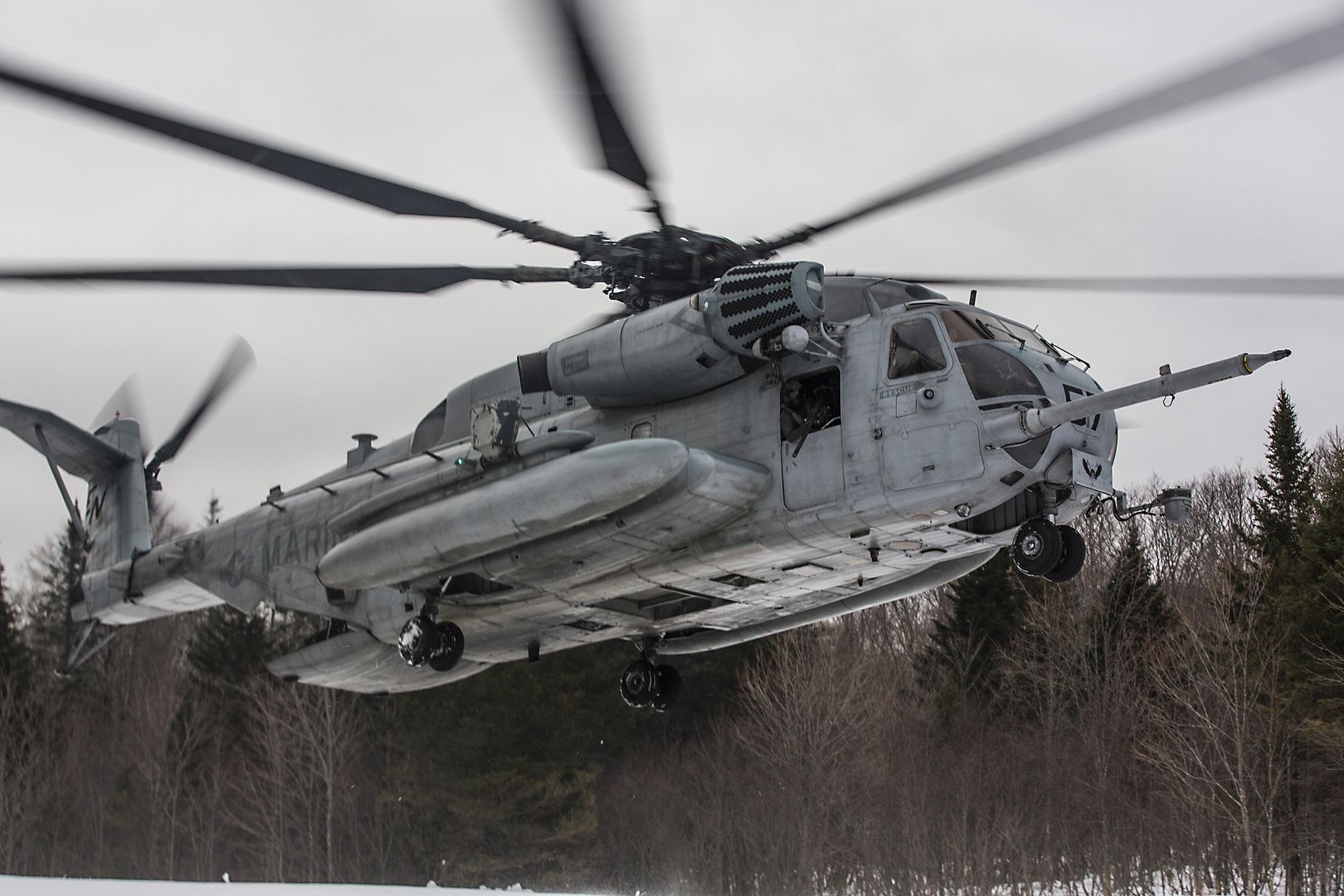
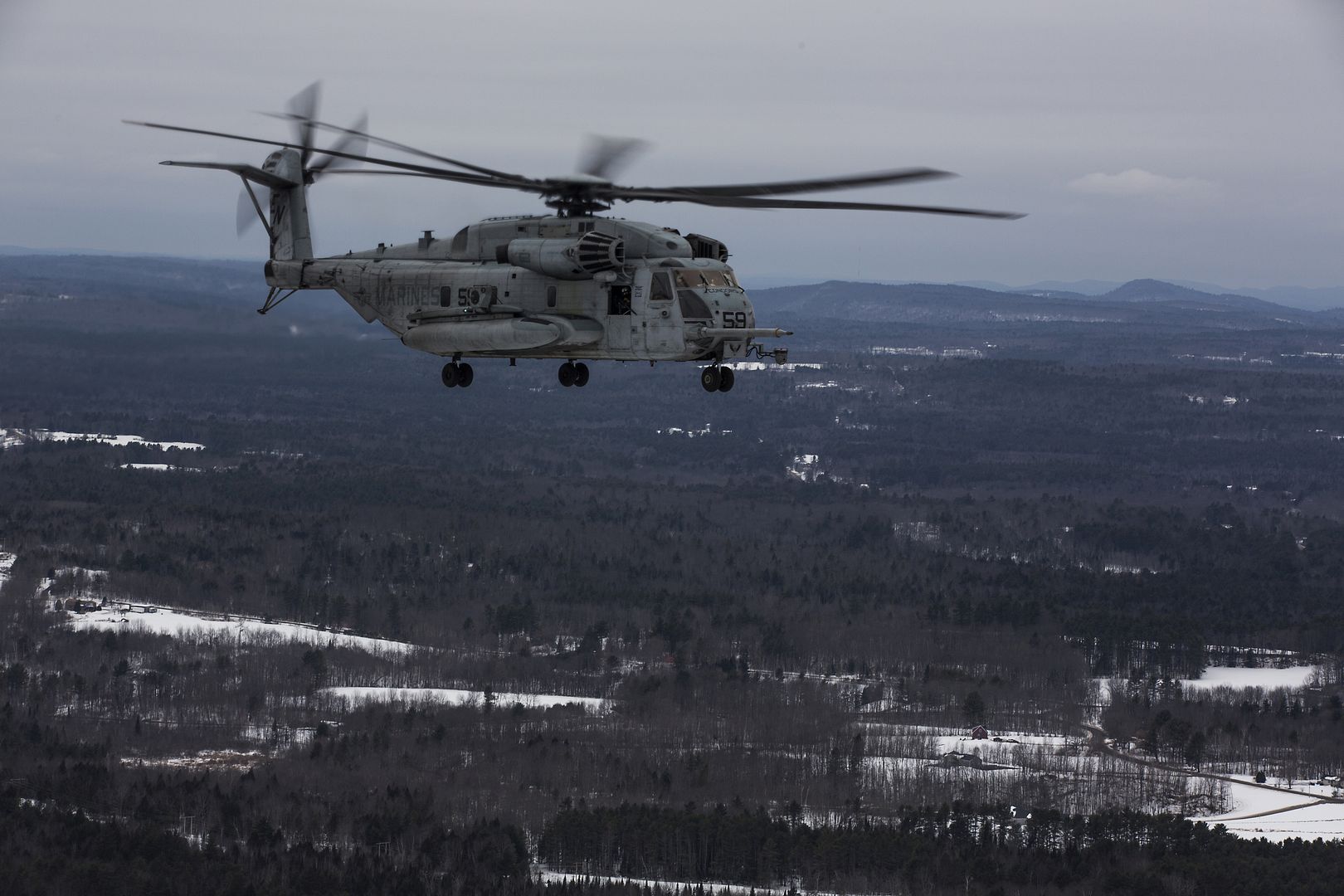
SCOTT AIR FORCE BASE, Ill. -- KC-135 Stratotanker and KC-10 Extender crews from five bases on three continents provided aerial refueling support during the B-2 bomber mission which struck two Daesh training camps in Libya Jan. 18, 2017.
Two B-2 Spirit bombers dropped 500-pound GPS-guided bombs on the camps, which were being used to plan and train for attacks against U.S. and allied interests in North Africa and Europe.
A total of 15 tankers participated in the operation, enabling the B-2s to fly the more than 30 hours round-trip to the target from their home base at Whiteman AFB, Missouri. Planners at 18th Air Force and the 618th Air Operations Center at Scott AFB coordinated the tanker mission, ensuring the refueling aircraft were at the right place at the right time to get the bombers to and from the Daesh training camps.
?Our goal was to find the aircraft to do the mission,? said Lt. Col. James Hadley, 18th Air Force operations planner. ?The mobility enterprise flexed to put tankers from the U.S., U.S. European and U.S. Central Commands toward this effort. Everybody had a part in making this work, and it was very successful.?
The 305th Air Mobility Wing at Joint Base McGuire-Dix-Lakehurst, New Jersey, was one of the units that contributed tankers to the refueling mission. Col. Darren Cole, the 305th AMW commander, said several units had to come together from different locations and commands and function together as a team to make this mission happen.
?It?s a big team that has to execute things on time to make it work right,? he said. ?It?s pretty impressive to be able to hit a target globally at a moment?s notice with so many people participating.?
Making sure the tankers and bombers meet at the right place and time is like choreographing a Broadway production, Hadley said.
?When you get the request, you have to look at the whole enterprise,? he said. ?Some tankers may already be in the right spot, some may have to be moved. The speed of the aircraft are completely different, so they won?t all take off at the same time, and it takes several mid-air refuelings to make an air bridge. If one person is off, the whole mission can go awry.?
Col. Clint Zumbrunnen, 305th Operations Group commander, said the 305th AMW keeps two aircraft on continuous alert just in case such a mission should come up. He said that, coupled with an efficient operations team, made sure the 305th would fly on time.
?The crews grow up here being conditioned for short-notice missions, to show up, plan and get the fuel to the fight,? Zumbrunnen explained. ?Our Current Operations team is also particularly skilled at making operations happen on short notice. It makes us particularly well-equipped to do this sort of mission.?
Hadley said the stakes can be high.
?If a tanker fell out you might have seen on the news how a couple of bombers had to land somewhere in Europe,? he said. ?Or even worse, you might have seen a news report about two bombers lost in the North Atlantic. Our tanker fleet enables them to do what they do.?
Using tankers sends a message to friend and foe alike, said Hadley.
?They affect things on a global scale,? he said. ?They tell our forces that we can support them where ever they are, and it tells our adversaries that we can find you and touch you on a moment?s notice.?
Cole said he?s proud of the role his Airmen played in this mission.
?As always, they do an outstanding job when their nation calls upon them to do the tough tasks,? he said. ?And it came off extremely well. It?s air refueling that puts the ?global? in ?global strike.??
The Libya strike is just one example of how the command facilitates the tanker war against Daesh, said Brig. Gen. Lenny Richoux, 18th AF vice commander.
"The air bridge our planners and tanker crews create enable U.S. and allied strike aircraft to continuously hit Daesh, or any enemy, no matter where they hide," Richoux said.
"Missions like this one are merely one of many executed every day,? he added. ?The mobility enterprise conducts a massive amount of planning every single day, and we coordinate with customers around the globe for each mission. America's air refueling tanker capability are one of the key missions that set us apart from every other Air Force in the world. Everyone needs air refueling and we deliver it."
(Source: French Defence Staff; issued Jan 20, 2017)
On January 16, 2017, a Rafale patrol flying from France?s advanced air base in the Middle East again hit Daech, destroying a tactical command center on the outskirts of Mosul and reducing its capabilities to harass Iraqi security forces.
The mission, carried out in conjunction with six other coalition fighter aircraft, was to destroy buildings occupied by the terrorist organization. This site included artillery pieces, armored vehicles filled with explosives and a tactical staff on the southern outskirts of Mosul.
Each attacking Rafale carried a 1000 kg laser-guided bomb with enhanced penetration capability on its centerline pylon. Thanks to their high degree of interoperability, the Allied fighters destroyed their targets and neutralized enemy military assets.
This air strike, the 1,105th by French fighter planes in the Levant since the beginning of Operation Chammal, was carried out while continuing the air support and artillery missions conducted in parallel for the takeover of Mosul. Thus, in a coordinated and comprehensive effort, Iraqi forces and their allies were able to advance to the shores of the Tigris.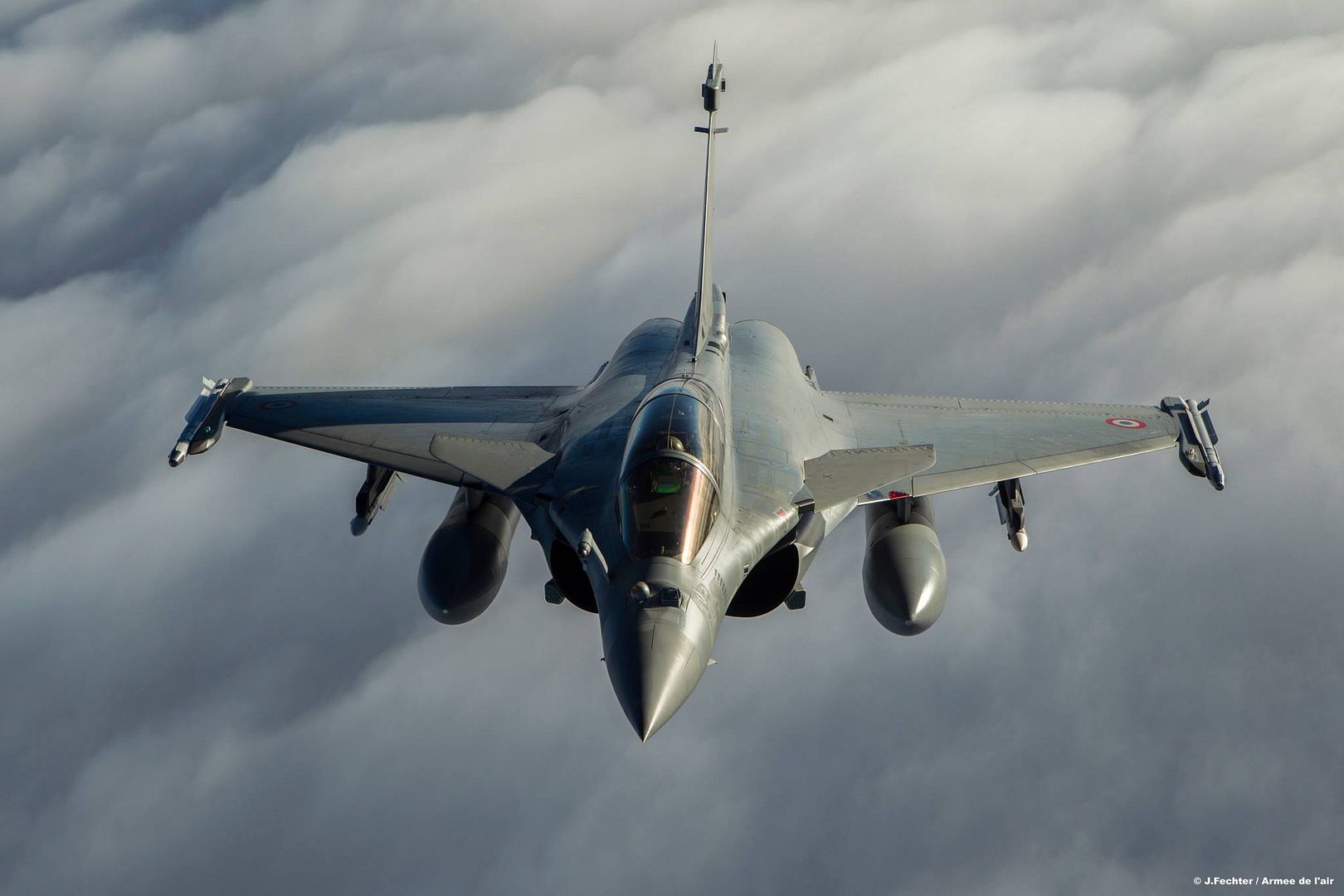
January 24, 2017 Montr?al Commercial Aircraft, Press Release
Aircraft to be operated by CityJet in the Scandinavian Airlines network
Bombardier Commercial Aircraft today announced that Dublin-based regional carrier, CityJet has signed a conditional purchase agreement for six CRJ900 aircraft and has also taken options on an additional four aircraft. This purchase agreement is expected to go firm on January 31, 2017. Upon delivery, the aircraft will operate wet lease services on behalf of Scandinavian Airlines (SAS).
Based on the list price of the CRJ900 aircraft, the conditional order is valued at approximately
US $280 million and could increase to US $467 million, should CityJet exercise all its options.
?CityJet has become one of our largest European CRJ900 aircraft advocates in a short period of time and we are delighted that they continue to put their confidence in Bombardier and its products,? said Ryan DeBrusk, Vice President, Sales, Europe, Russia & Commonwealth of Independent States, Bombardier Commercial Aircraft. ?The CRJ900 aircraft is ideally suited to growing markets across Europe and is creating excellent value for a wide variety of operators with its superior performance, economics and enhanced cabin amenities.?
?The reputable, modern CRJ900 aircraft offers great passenger comfort while maintaining cost effectiveness and operational flexibility; both important factors in our business model,? said Pat Byrne, Executive Chairman, CityJet. ?We have been very satisfied with the performance of the CRJ900 regional jets which have proven themselves to be the ideal and most efficient aircraft for our contract flying with Scandinavian Airlines.?
CityJet currently owns a fleet of eight CRJ900 aircraft which are on wet lease service with SAS. The airline will also take delivery of four new CRJ900 aircraft in early 2017 as per Bombardier?s order announcement on April 25, 2016, bringing CityJet?s owned fleet of CRJ900 aircraft to 12. As part of its acquisition of Cimber A/S, a regional airline in Denmark and a former wholly owned subsidiary of SAS, CityJet will operate Cimber?s fleet of 11 CRJ900 aircraft also on wet lease service with SAS. These aircraft will be replaced by up to 10 additional CRJ900 aircraft that were announced today.
About CityJet
CityJet is an Irish-based regional airline with its headquarters in Swords, Dublin. The airline was established in 1993 to operate services between Dublin and London City Airport and today operates ten routes from across Europe to London City, where it currently holds approximately 30% of the airport slots. CityJet also has a significant wet lease business, including services on behalf of Air France and SAS and operates a wide range of ad hoc charters on behalf of sports groups, the entertainment industry, tour operators and corporate customers.
In March 2016, CityJet was purchased by an investment group led by Executive Chairman Pat Byrne. The airline is now focused on delivering a strategy which sees it consolidate its scheduled business and grow its position as a leading provider of wet lease services to customer airlines. www.cityjet.com
About CRJ aircraft
Every 10 seconds a CRJ Series regional jet takes off somewhere in the world. The CRJ Series family of aircraft has transported almost 1.6 billion passengers to become the world?s most successful regional jet program -- linking people and communities like no other. The CRJ Series regional jets have revolutionized aviation with their proven efficiency, reliability and profitability.
The CRJ Series regional jets share commonality benefits that provide flexibility to operators and allow them to optimize their fleets to meet specific market demands. No other regional aircraft deliver this capability. Optimized for medium-haul regional routes, these aircraft can provide up to 10 per cent cash operating cost advantage over competing jets.
Each of the CRJ aircraft models offers its own distinct advantages. The CRJ200 regional jet offers outstanding ownership cost, ideal for opening new routes and markets. The CRJ700 regional jet is the lightest aircraft in its category, delivering impressive efficiency, performance and fuel burn savings, while the CRJ900 regional jet offers tremendous flexibility and is ideally suited for growing markets. The CRJ1000 regional jet, which has the highest passenger capacity in the family, delivers the lowest seat-mile cost in the regional jet market and burns up to 13 per cent less fuel than its competitors.
Since its launch, the CRJ Series family of regional jets has stimulated the regional jet market. In North America alone, it accounts for over 20 per cent of all jet departures. Globally, the family operates more than 200,000 flights per month.
The CRJ Series aircraft family includes over 100 owners and operators in 49 countries, and the worldwide fleet has logged more than 45 million flight hours. To date, Bombardier has booked firm orders for 1,902 CRJ Series aircraft.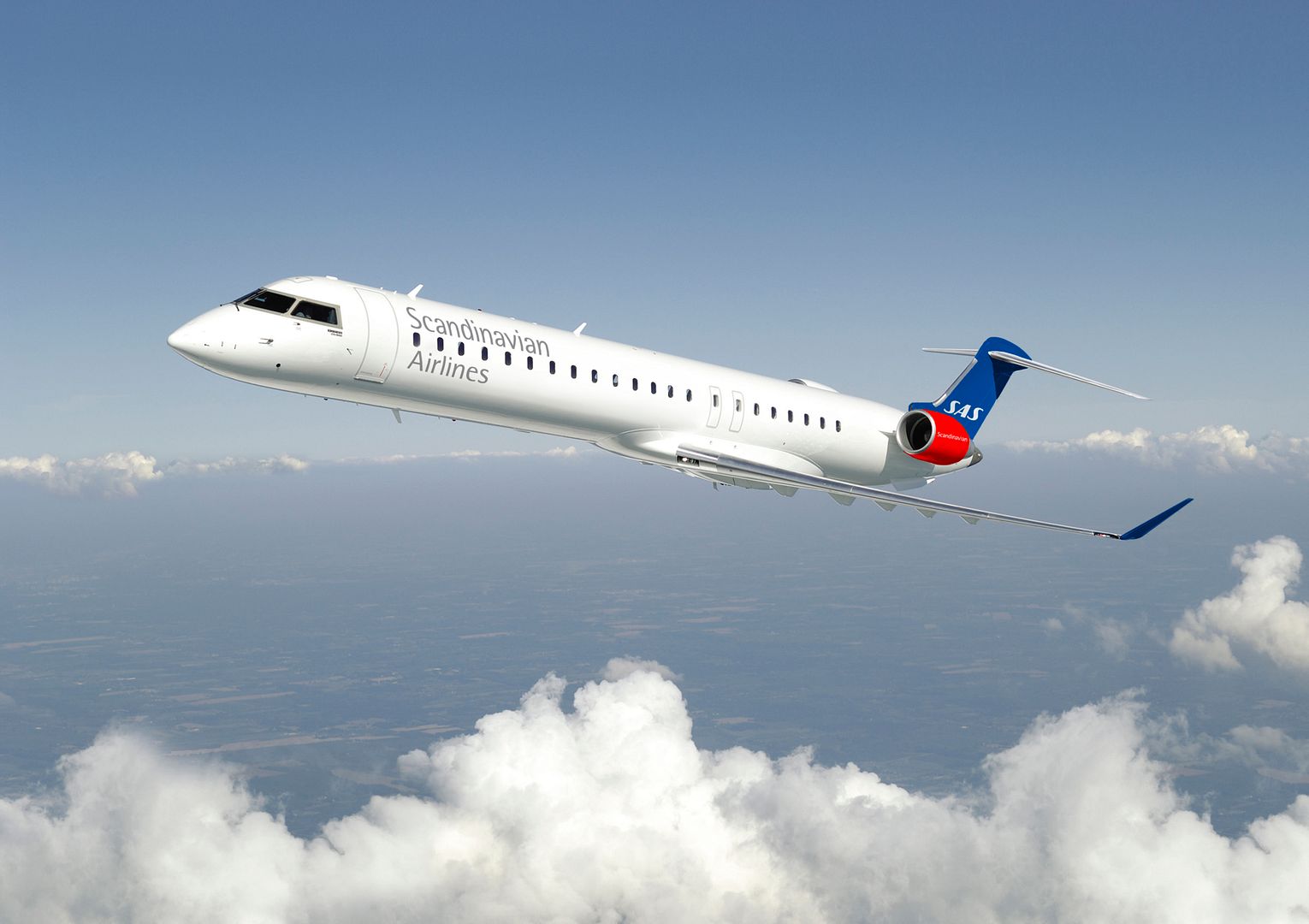
-
 Main AdminU.S. Army AH-64E Apache helicopter pilots assigned to 16th Combat Aviation Brigade conduct a training flight at Joint Base Lewis-McChord, Wash., Jan. 23, 2017. Aviators hone their skills during many hours in the simulator and on flights to build and maintain readiness.
Main AdminU.S. Army AH-64E Apache helicopter pilots assigned to 16th Combat Aviation Brigade conduct a training flight at Joint Base Lewis-McChord, Wash., Jan. 23, 2017. Aviators hone their skills during many hours in the simulator and on flights to build and maintain readiness.
A KC-135 Stratotanker from the Arizona Air National Guard?s 161st Air Refueling Wing departs for a Flying Training Deployment from Aviano Air Base, Italy on Jan. 21, 2016. The KC-135 joined fourteen F-16 Fighting Falcons and 280 Aviano Airmen in Souda Bay, Greece to participate in the training. (U.S. Air Force photo by Staff Sgt. Krystal Ardrey)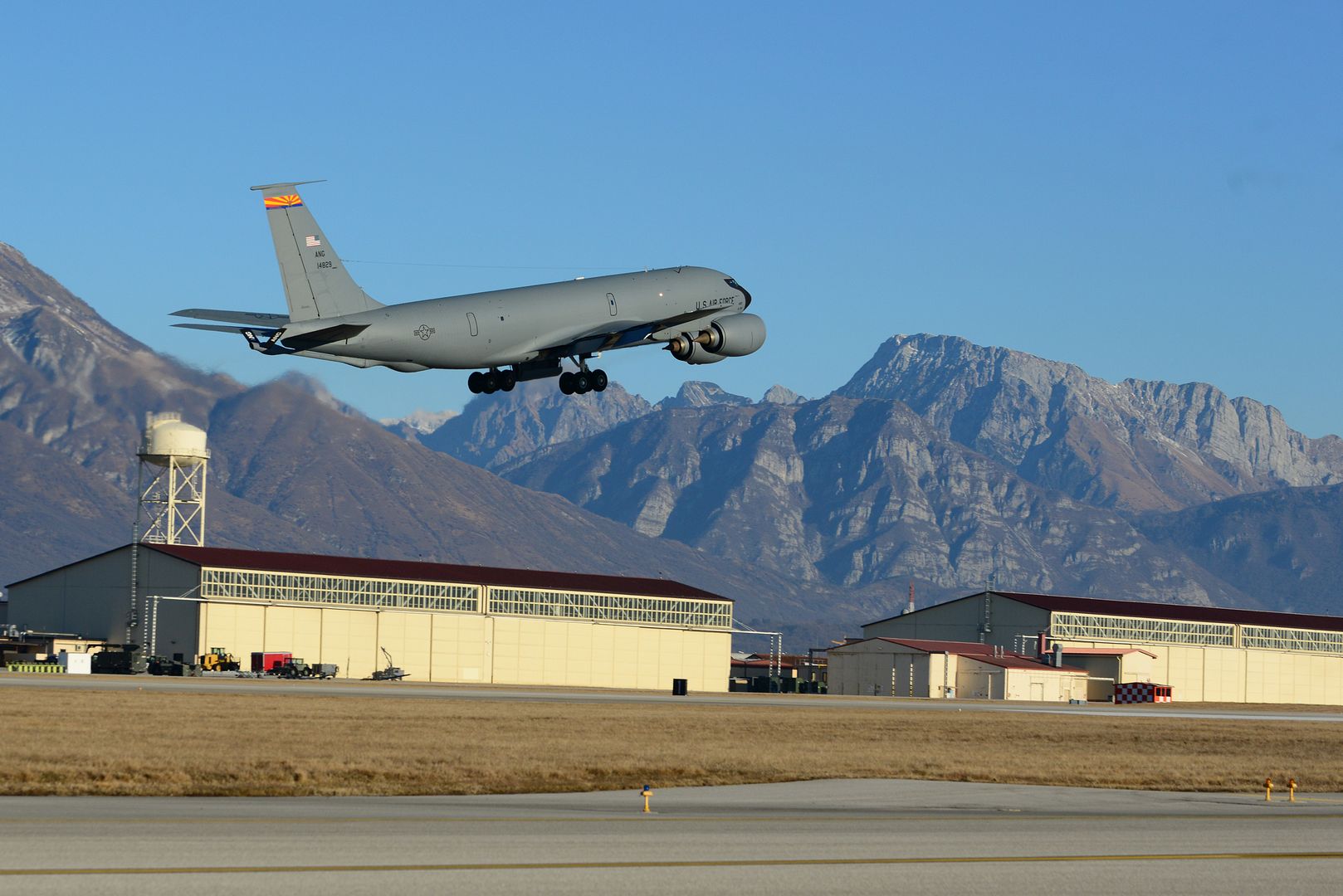
A 555th Fighter Squadron F-16 Fighting Falcon departs for a Flying Training Deployment from Aviano Air Base, Italy on Jan. 21, 2016. Fourteen F-16 Fighting Falcons, one KC-135 Stratotanker from the Arizona Air National Guard?s 161st Air Refueling Wing and 280 Airmen deployed to Souda Bay, Greece to train with Greece?s Hellenic air force. (U.S. Air Force photo by Staff Sgt. Krystal Ardrey)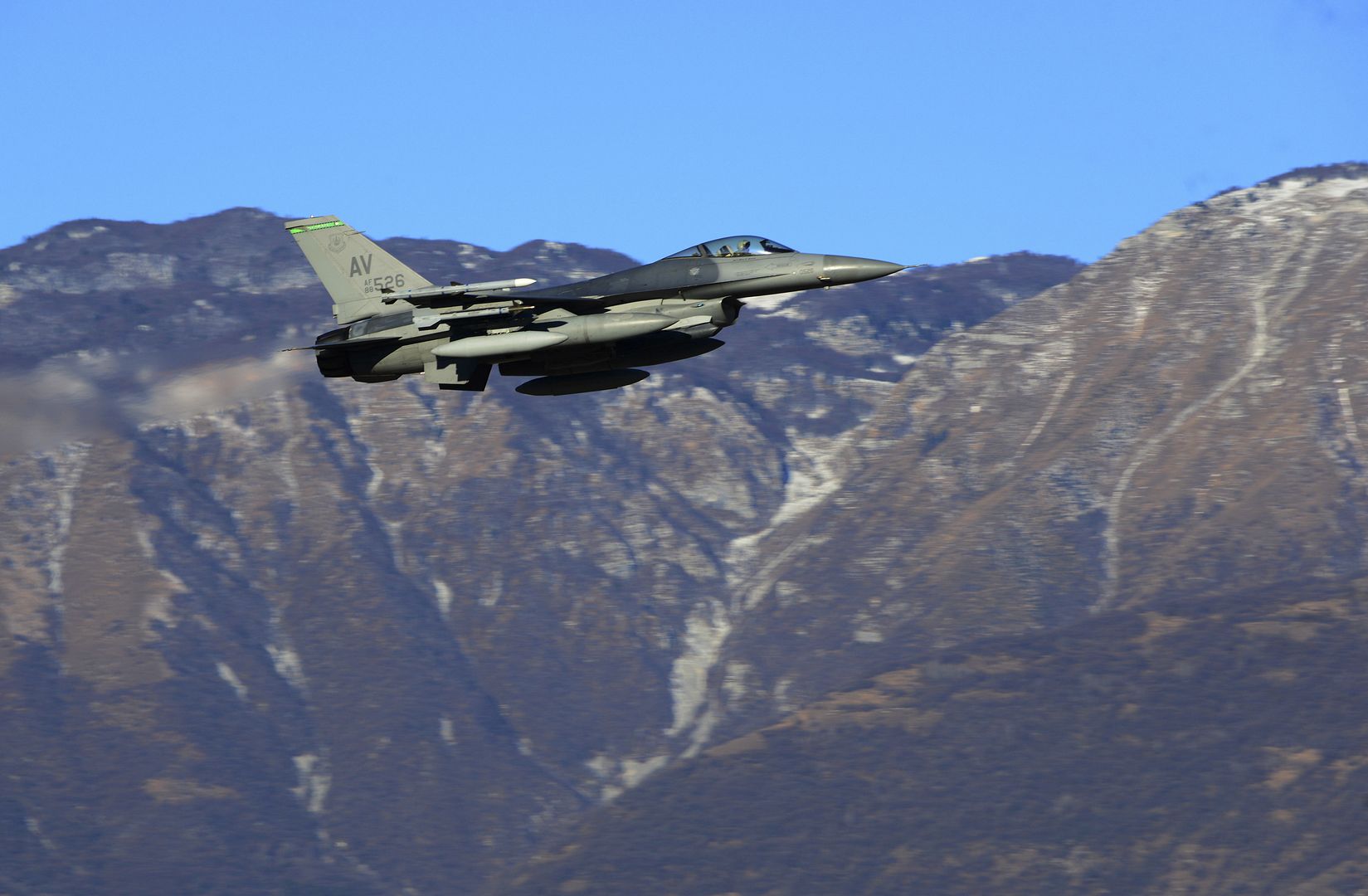
A 555th Fighter Squadron F-16 Fighting Falcon departs from Aviano Air Base, Italy on Jan. 21, 2016 to support a flying training deployment in Souda Bay, Greece. Fourteen F-16s, one KC-135 Stratotanker from the Arizona Air National Guard?s 161st Air Refueling Wing, and 280 Airmen deployed to Souda Bay to train with Greece?s Hellenic air force. (U.S. Air Force photo by Tech. Sgt. R.J. Biermann)
RAF personnel are taking part in Red Flag, the world's largest and most complex air combat exercise at Nellis Air Force Base in the United States.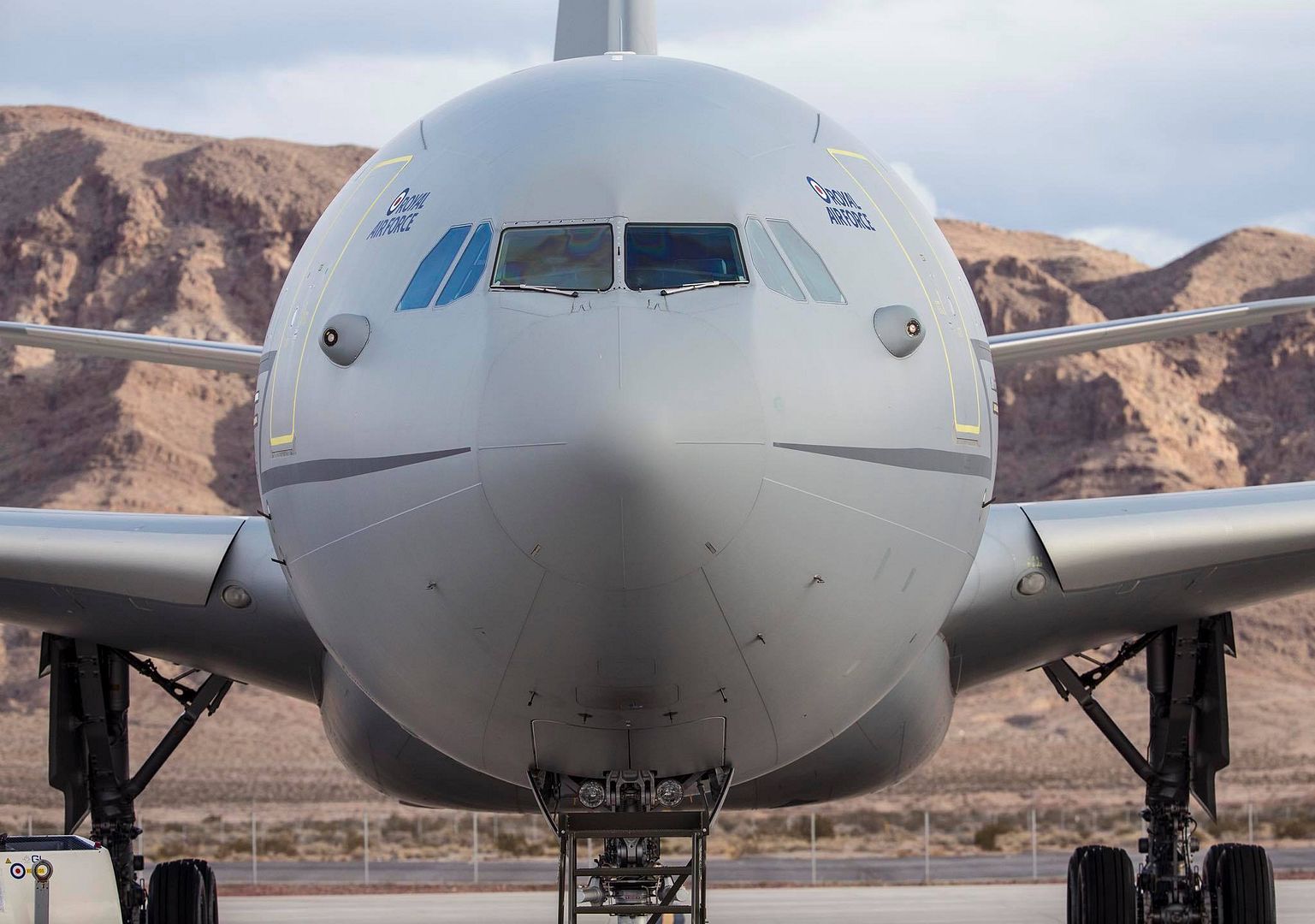
The three-week exercise pits friendly 'Blue' forces against hostile 'Red' aggressors, simulating air-to-air, air-to-ground and space and cyber warfare.
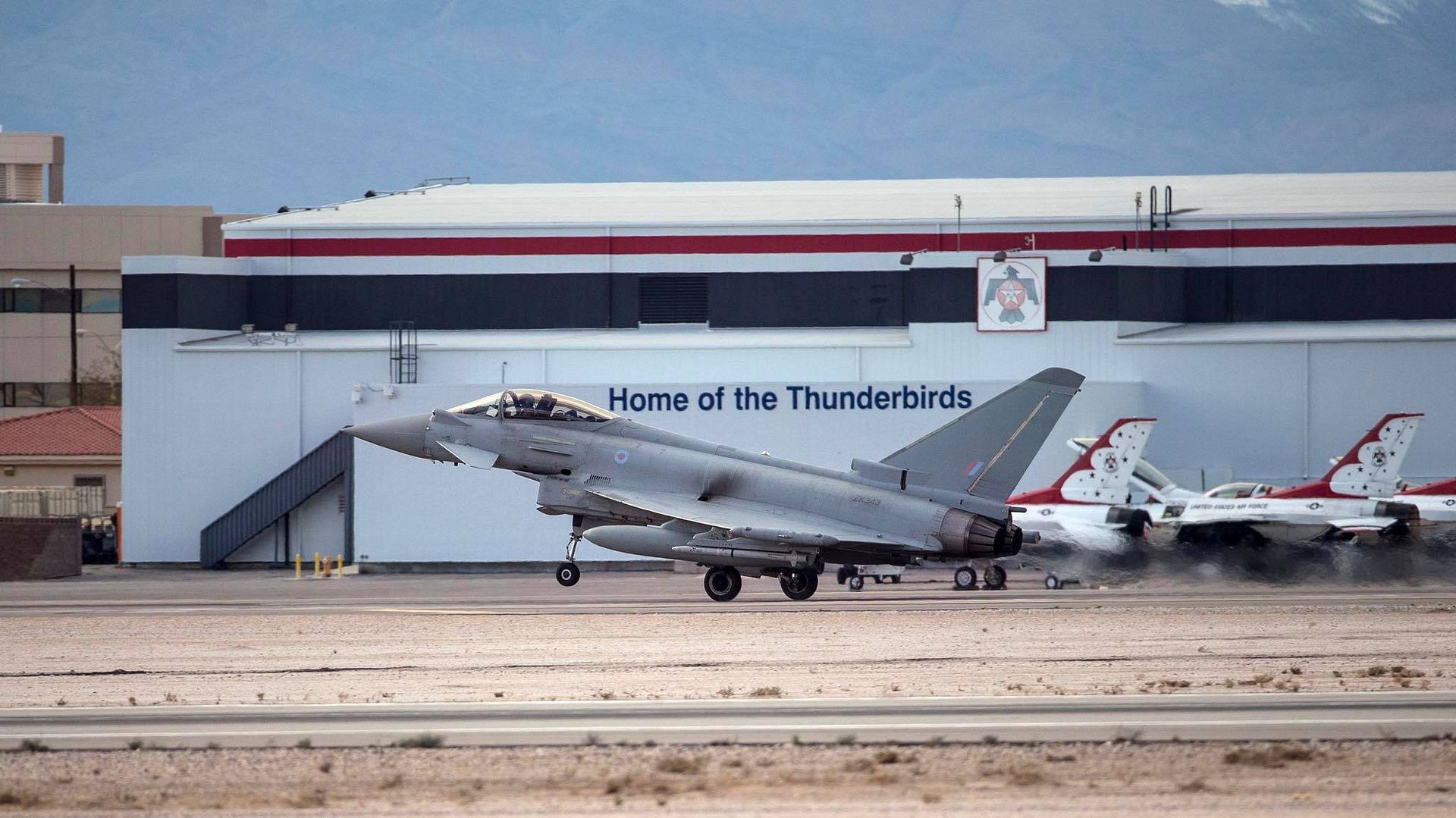
Images: Sgt Neil Bryden, Cpl Graham Taylor
-
 Main AdminPACIFIC OCEAN (Jan. 24, 2017) An MH-60S Sea Hawk helicopter assigned to the "Black Knights" of Helicopter Sea Combat Squadron (HSC) 4, lands on the flight deck of Ticonderoga-class guided-missile cruiser USS Lake Champlain (CG 57). Lake Champlain is on a regularly scheduled Western Pacific deployment with the Carl Vinson Carrier Strike Group as part of the U.S. Pacific Fleet-led initiative to extend the command and control functions of the U.S. 3rd Fleet in the Indo-Asia-Pacific region. Navy aircraft carrier strike groups have patrolled the Indo-Asia-Pacific regularly and routinely for more than 70 years. (U.S. Navy photo by Mass Communication Specialist 2nd Class Nathan K. Serpico/Released)
Main AdminPACIFIC OCEAN (Jan. 24, 2017) An MH-60S Sea Hawk helicopter assigned to the "Black Knights" of Helicopter Sea Combat Squadron (HSC) 4, lands on the flight deck of Ticonderoga-class guided-missile cruiser USS Lake Champlain (CG 57). Lake Champlain is on a regularly scheduled Western Pacific deployment with the Carl Vinson Carrier Strike Group as part of the U.S. Pacific Fleet-led initiative to extend the command and control functions of the U.S. 3rd Fleet in the Indo-Asia-Pacific region. Navy aircraft carrier strike groups have patrolled the Indo-Asia-Pacific regularly and routinely for more than 70 years. (U.S. Navy photo by Mass Communication Specialist 2nd Class Nathan K. Serpico/Released)
PACIFIC OCEAN (Jan. 24, 2017) An F/A-18F Super Hornet, assigned to the Mighty Shrikes of Strike Fighter Squadron (VFA) 94, is secured to the flight deck of the aircraft carrier USS Theodore Roosevelt (CVN 71). The ship is off the coast of Southern Calif. conducting carrier qualifications. (U.S. Navy Photo by Mass Communication Specialist Seaman Rachael Treon/Released)
Republic of Korea (Jan. 25, 2017) An MH-53E Sea Dragon assigned to the Vanguards of Helicopter Mine Countermeasures Squadron (HM) 14, Detachment 2A, lands on a training ground in Pohang. HM-14 maintains a worldwide 72-hour airborne mine countermeasure (AMCM) rapid deployment, a two aircraft forward deployed AMCM and vertical onboard delivery capability in the 7th fleet area of responsibility. (U.S. Navy photo by Mass Communication Specialist 2nd Class Jermaine M. Ralliford)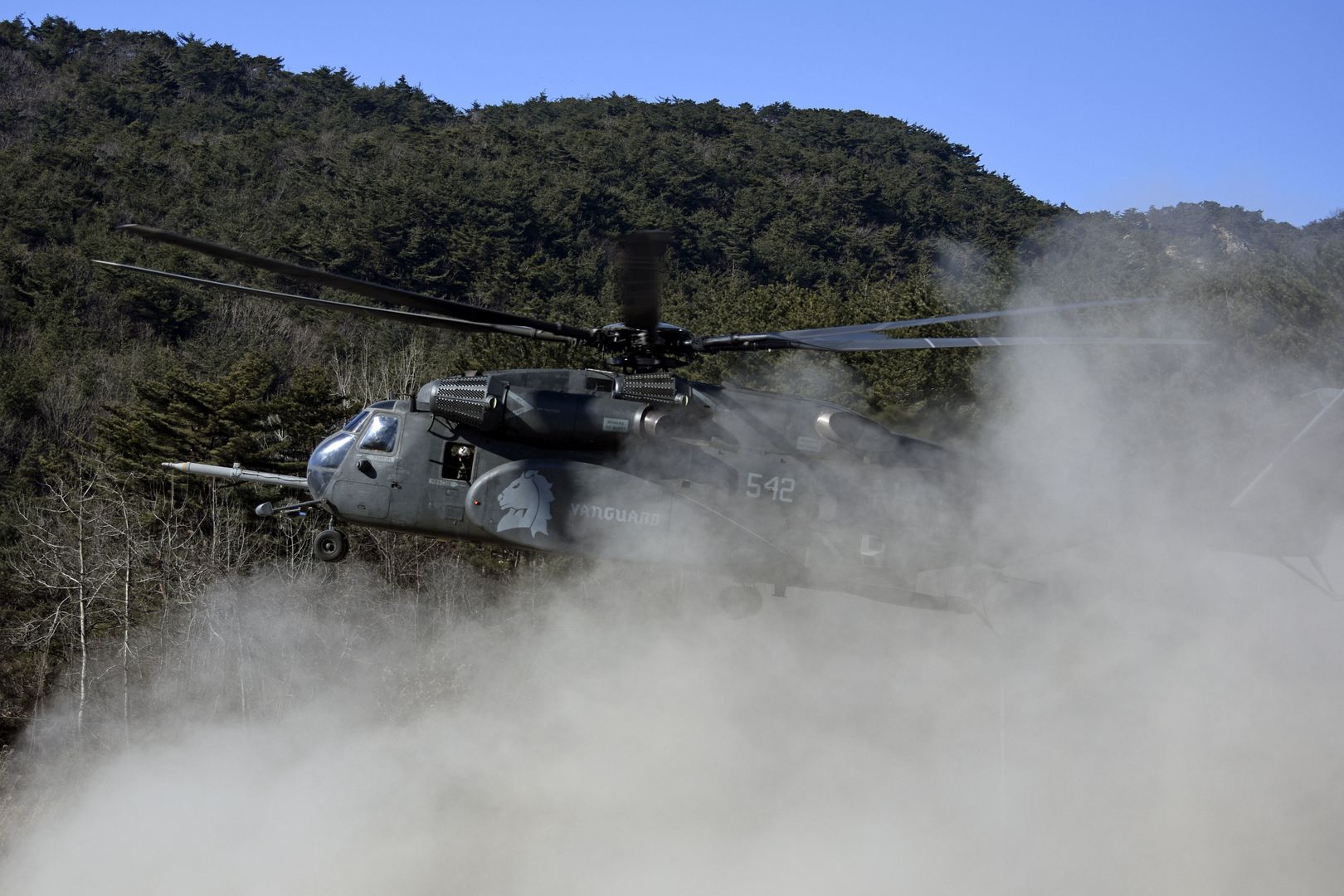
LEMOORE, Calif. (Jan. 25, 2016) Four F-35C Lightning II joint strike fighters fly in formation over Naval Air Station Lemoore. The F-35C will enhance the flexibility, power projection, and strike capabilities of carrier air wing and joint task forces. (U.S. Navy photo by Mass Communication Specialist 3rd Class Zachary Eshleman/Released)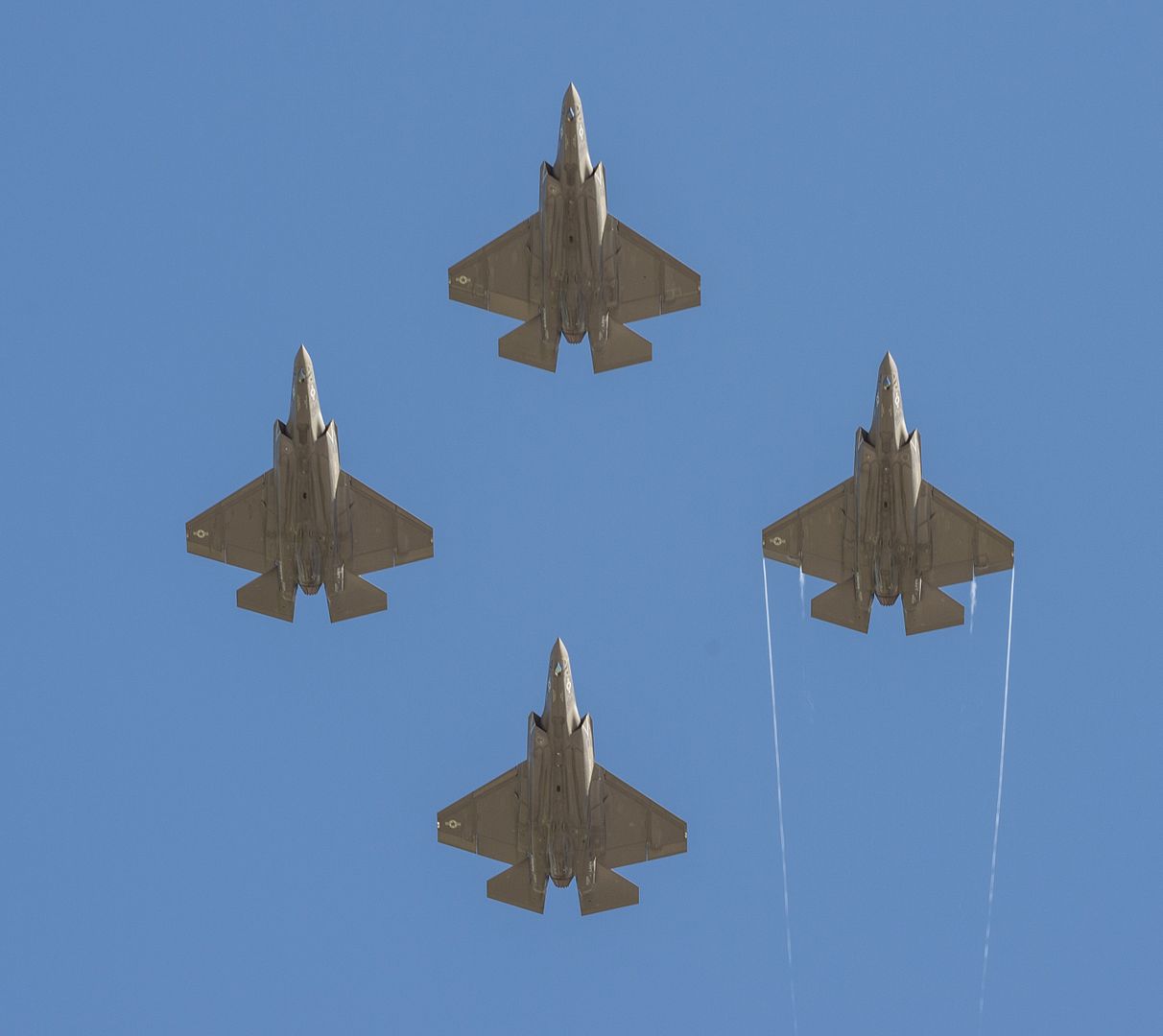
LEMOORE, Calif. (Jan. 25, 2016) F-35C Lightning II joint strike fighter aircraft taxi across the flight line at Naval Air Station Lemoore. The F-35C will enhance the flexibility, power projection, and strike capabilities of carrier air wings and joint task forces. (U.S. Navy photo by Mass Communication Specialist 3rd Class Zachary Eshleman/Released)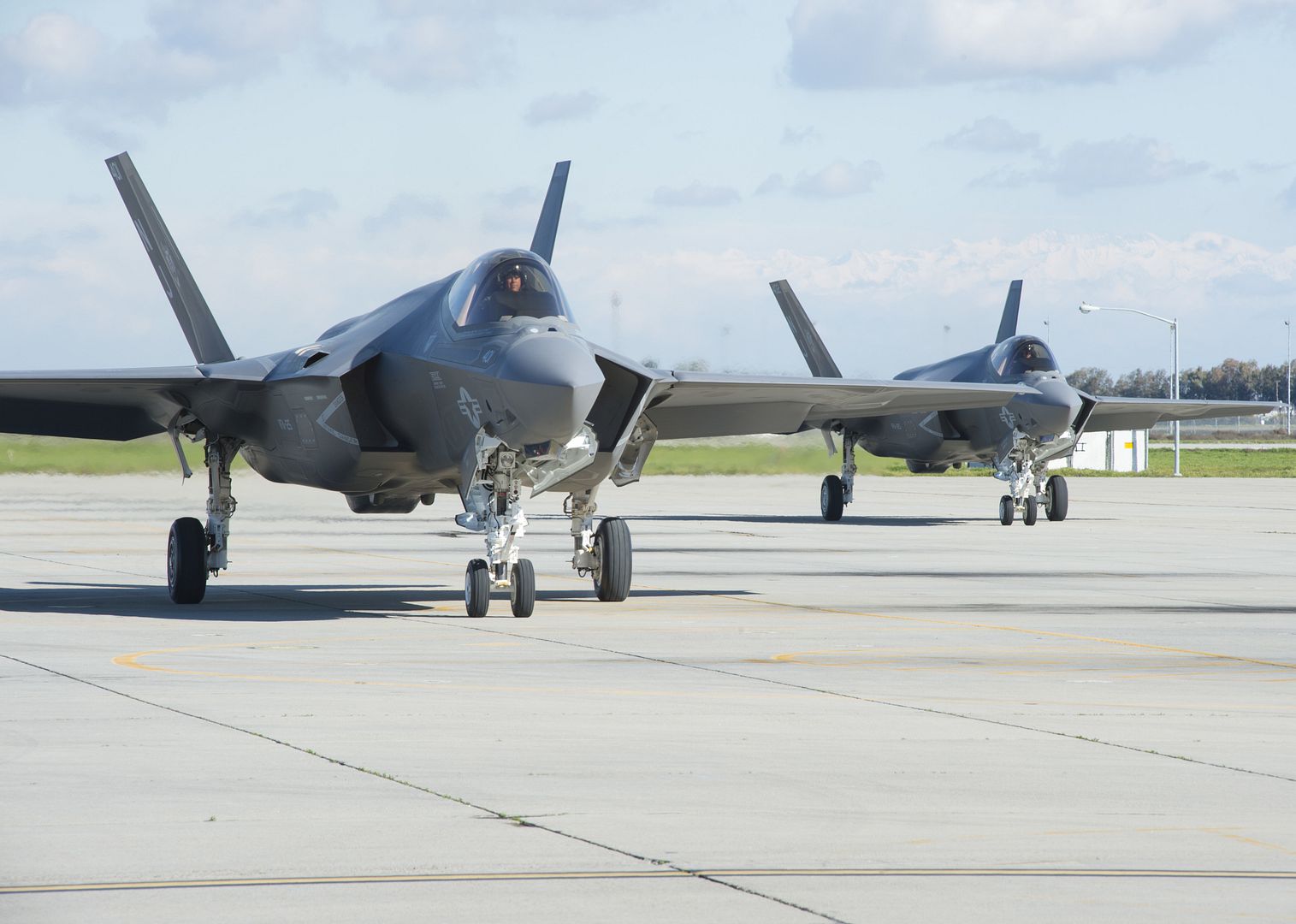
An A-10 Thunderbolt II assigned to the 25th Fighter Squadron is run through a final check before takeoff at Osan Air Base, Republic of Korea, Jan. 25, 2017. Several A-10s were flown in the mission, which was part of Exercise Pacific Thunder 17-1 and also the first night mission in the history of the exercise. (U.S. Air Force photo by Senior Airman Victor J. Caputo)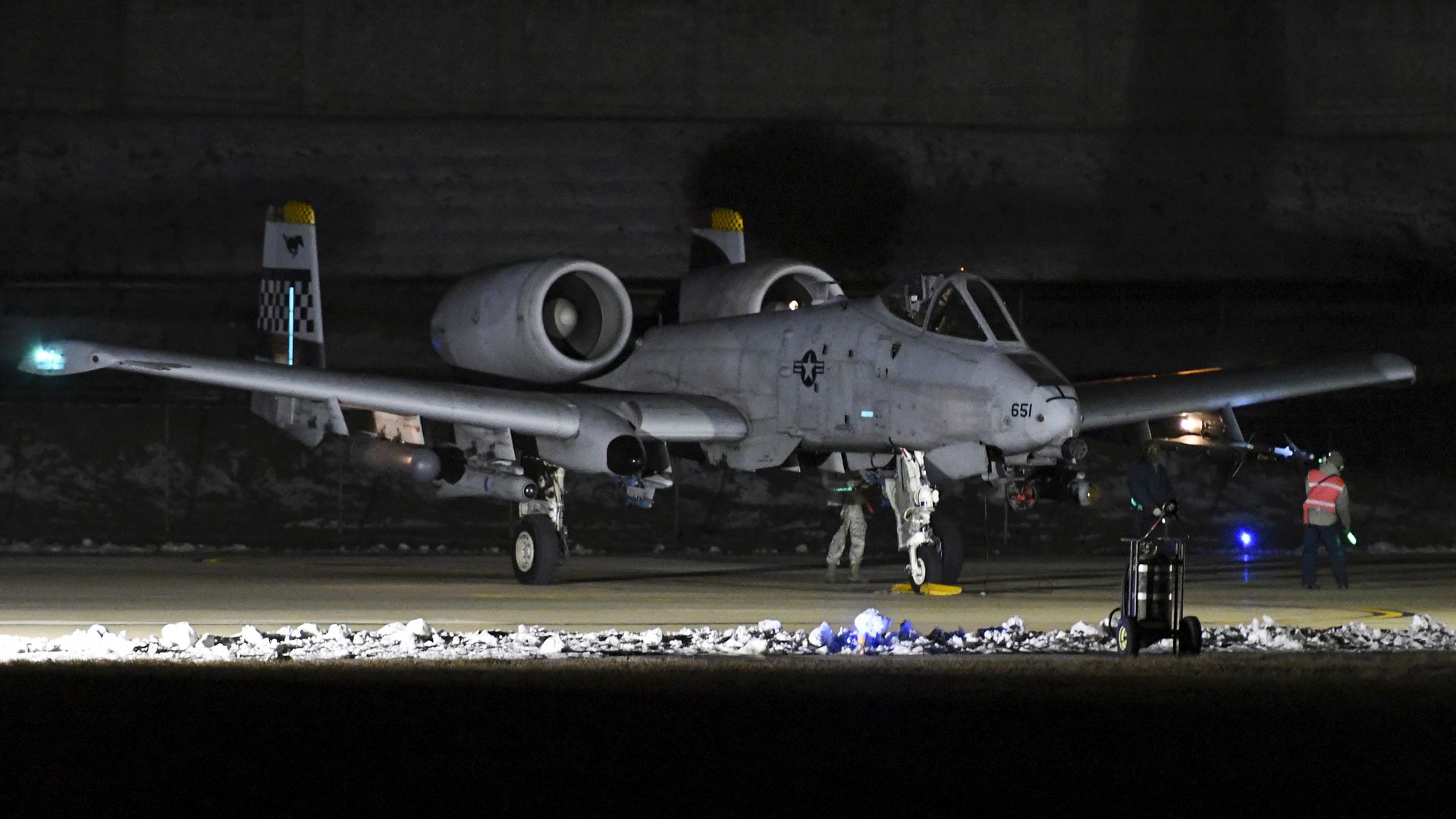
TINKER AIR FORCE BASE, Okla. (AFNS) -- The KC-135 Block 45 upgrade program reached a milestone by closing out 2016 with the 45th aircraft in the modification line here.
Block 45 completely remodels the inside of the flight deck with new liquid crystal displays, radio altimeter, autopilot, digital flight director and other computer module updates, according to information provided by the Legacy Tanker Division located here.
Reaching milestone number 45 can be attributed, in part, to innovations taking place in the back-shops of the 564th Aircraft Maintenance Squadron. Belinda Schantz, Block 45 unit chief, said her people helped improve the process. ?One person started it. Then everyone started getting ideas.?
?This is the capstone modification that takes your 1950s/1960s-era tanker and makes it a 21st century asset that?s as modern as any flight deck we have in the Air Force,? said Col. Mark Mocio, the Legacy Tanker Division commander with the Air Force Life Cycle Management Center. ?It enables us to meet all the global rules we have on air traffic navigation now and for a long time to come.?
Innovations have taken place from the ground up through empowered workers who established a speedline to shave off 30 program days.
The speedline has been the key to success as it removes a large portion of work that took place on the aircraft in cramped, poorly lit spaces while trying to work around others and brings it into well-lit shops where a majority of the work can be done in a ?kitting? process.
The $910 million program began almost seven years ago as part of the Air Force?s continuing efforts to keep the aging C/KC-135 series aircraft, the last of which were delivered in 1961, viable for many years to come. The Block 45 modification enhances the previous PACER CRAG cockpit and fuel management systems upgrade accomplished between 1997 and 2001.
In 2015 the Legacy Tanker Division within the Air Force Life Cycle Management Center in conjunction with the Oklahoma City Air Logistics Complex, both headquartered at Tinker AFB, returned outsourced modification work to the OC-ALC workforce where the concentrated experience for the C/KC-135 aircraft is located. This move enhanced OC-ALC?s ability to produce by leveraging the fact a majority of maintenance, repair and overhaul functions were already taking place at the base. Just moving the modification program back to Tinker AFB saved an estimated five production days.
Upon moving the modification work to Tinker AFB and the 564th AMXS, low rate initial production (LRIP) I began where efficiencies were realized as they began using the ?Art of the Possible? to innovate through the speedline described earlier.
Once the Block 45 modification work was given to OC-ALC and the 564th AMXS, they began innovating with the establishment of a speedline. ?Moving it from the contractor to here, we were confident we could reduce the flow days,? Mocio said. However, he said he recognized ?a lot of innovation had to be done to allow for that. There was kitting and technical innovation which allowed the maintenance folks to get it from the 120 days down to below 50 days. That initiative is pretty incredible. It?s a challenge.?
Lee explained another advantage of the speedline was to include small business in the process. ?They installed a speedline that takes kits from Rockwell Collins and various small business contractors. Then we do it here organically. About 50 flow days to install using the 50/50 rule, 50 percent organic with 50 percent contracted out.?
The modification is time consuming. The Block 45 modification is intensive, frustrating work fraught with opportunities for mistakes, Schantz explained. During LRIP I most of the actual work took place on the aircraft in cramped spaces with poor lighting.
?Gutting old wiring and then reinstalling new kits, liquid crystal display screens and supporting equipment is a multi-person job,? Schantz said. ?Complicating the installation is having to work around installed controls such as the throttle quadrant and trim wheel located in the middle of the flight deck.?
The avionics rack presents its own challenges because it is a four-shelf rack with important components mounted on the shelves and the sides with thousands of wire connections. Schantz summed up the biggest challenge of working onboard the aircraft. ?It was just a tangled mess.?
?Art of the possible? empowered Block 45 avionics technicians, mechanics and even supply personnel to find ways to innovate. The 564th AMXS now builds kits using supplies from the prime contractor and small businesses in their back shops. Here they can complete a majority of the work with ease while making thousands of connections which are also tested and verified before the entire thing is bundled and kitted for delivery to the airplane. Once at the jet, the kit ensures a relatively quick installation and allows the technicians to move on to the next step in the process.
Lt. Joshua Neace, the KC-135 program manager, said he feels the word is getting out to the operators of the fleet of tankers which are always in high demand. ?They?re hungry. We work with Air Mobility Command, the Air National Guard, and Air Force Reserve Command and there are people who decide which aircraft are coming to us and when. It?s a huge integrated process. Everybody wants it.?
The Block 45 modification upgrades or replaces 63 items such as analog instruments which are considered high-maintenance or obsolete altogether, Neace said.
6 Squadron Typhoons, from RAF Lossiemouth, are spending Burns Night 2017 flying missions during Red Flag, the world's largest and most complex air combat exercise.
While one of the Squadron's day jobs is to protect UK airspace through Quick Reaction Alert, Red Flag - held at Nellis Air Force Base in Nevada - sees the jets fight their way into target areas and conduct precision ground strikes before fighting their way out again.
Images: Sgt Neil Bryden, Cpl Graham Taylor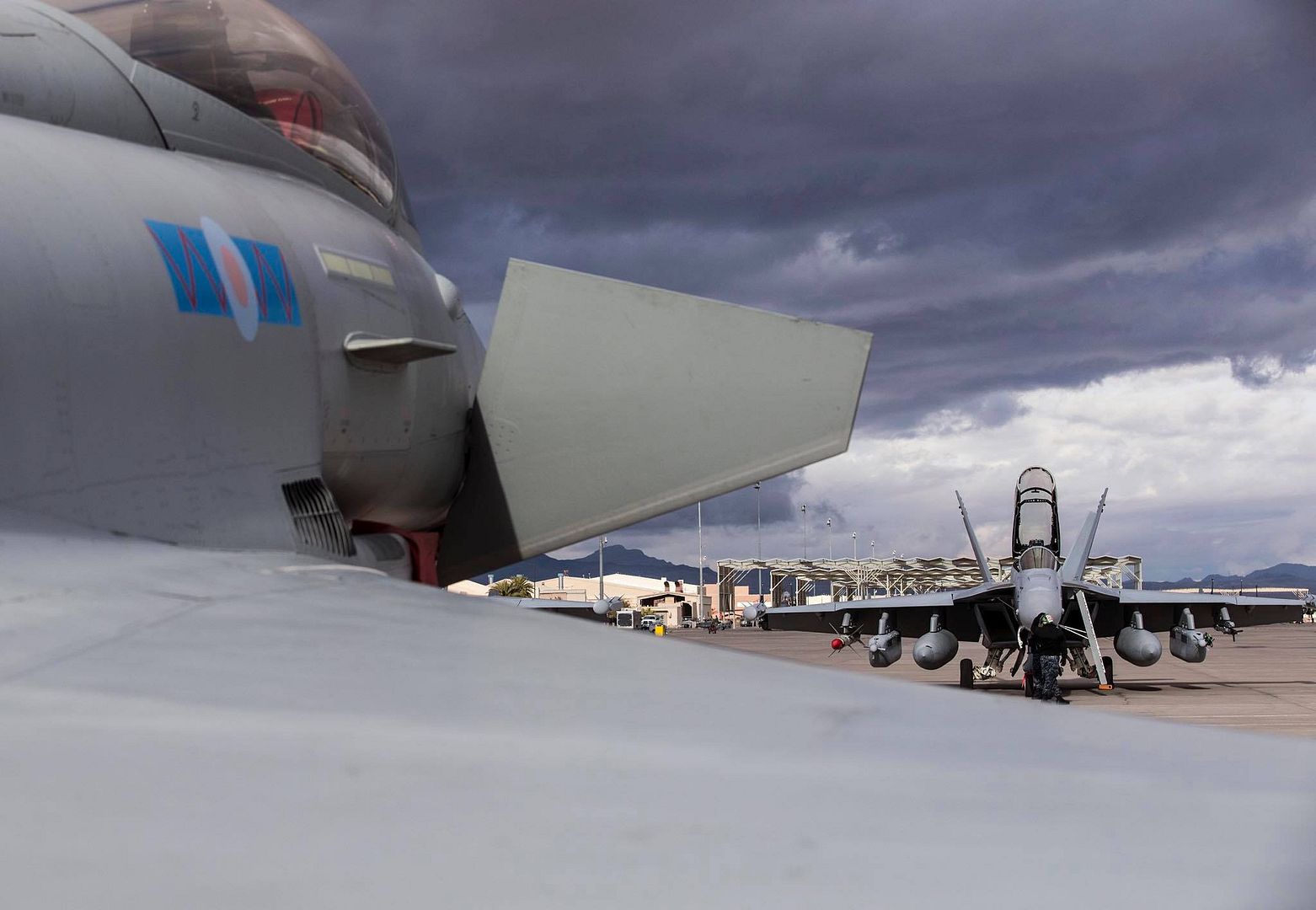


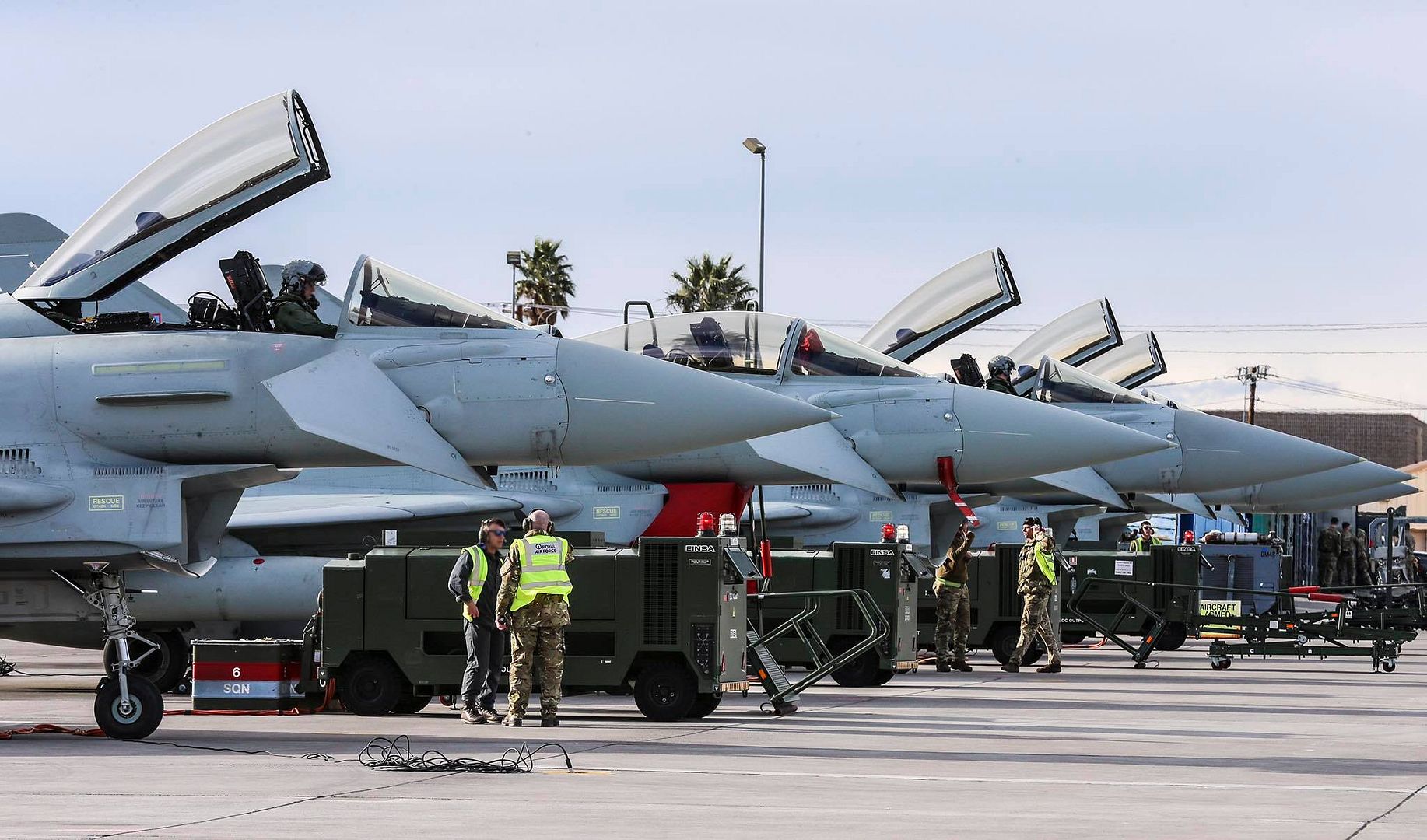
News Article / January 25, 2017
The Government of Canada has extended the contract with CAE for the NATO Flying Training in Canada (NFTC) program for an additional two years.
Previously contracted for 21 years and scheduled to expire in 2021, the NFTC program will now run until at least 2023. The modification also includes a one-year option to extend the contract through to 2024.
?The NATO Flying Training in Canada program delivers world-class pilot training to Canada and participating allied nations,? said Lieutenant-General Mike Hood, commander of the Royal Canadian Air Force. ?In modifying the operating period of this NTFC contract, we will ensure that this essential pilot training system continues until a new program is up and running.?
This modification will allow the time necessary to determine the RCAF?s future aircrew training requirements. The increase in contract value associated with this amendment is valued at more than $300 million.
?The ability to provide operational training units with sufficient numbers of suitably trained aircrew is fundamental to the Royal Canadian Air Force and to its ability to provide Canada with a capability that is vital to the defence of our country,? said Defence Minister Harjit Sajjan.
Under the current NFTC program, CAE provides flight training services including serviced aircraft, simulator instruction, flight simulators, classroom instruction, training courseware and other support services in support of flying training at flight training units at 15 Wing Moose Jaw, Saskatchewan, and 4 Wing Cold Lake, Alberta.
This project will provide avenues of economic development for the local community by creating and sustaining middle class jobs?.
?Canadians know that their defence personnel are strong, professional and assiduous in doing the difficult jobs we ask of them all of the time,? added Minister of Public Safety and Emergency Preparedness Ralph Goodale. ?This announcement is an important step to ensure the Royal Canadian Air Force has the support it requires to protect Canada and its sovereignty, while also growing the local economy.?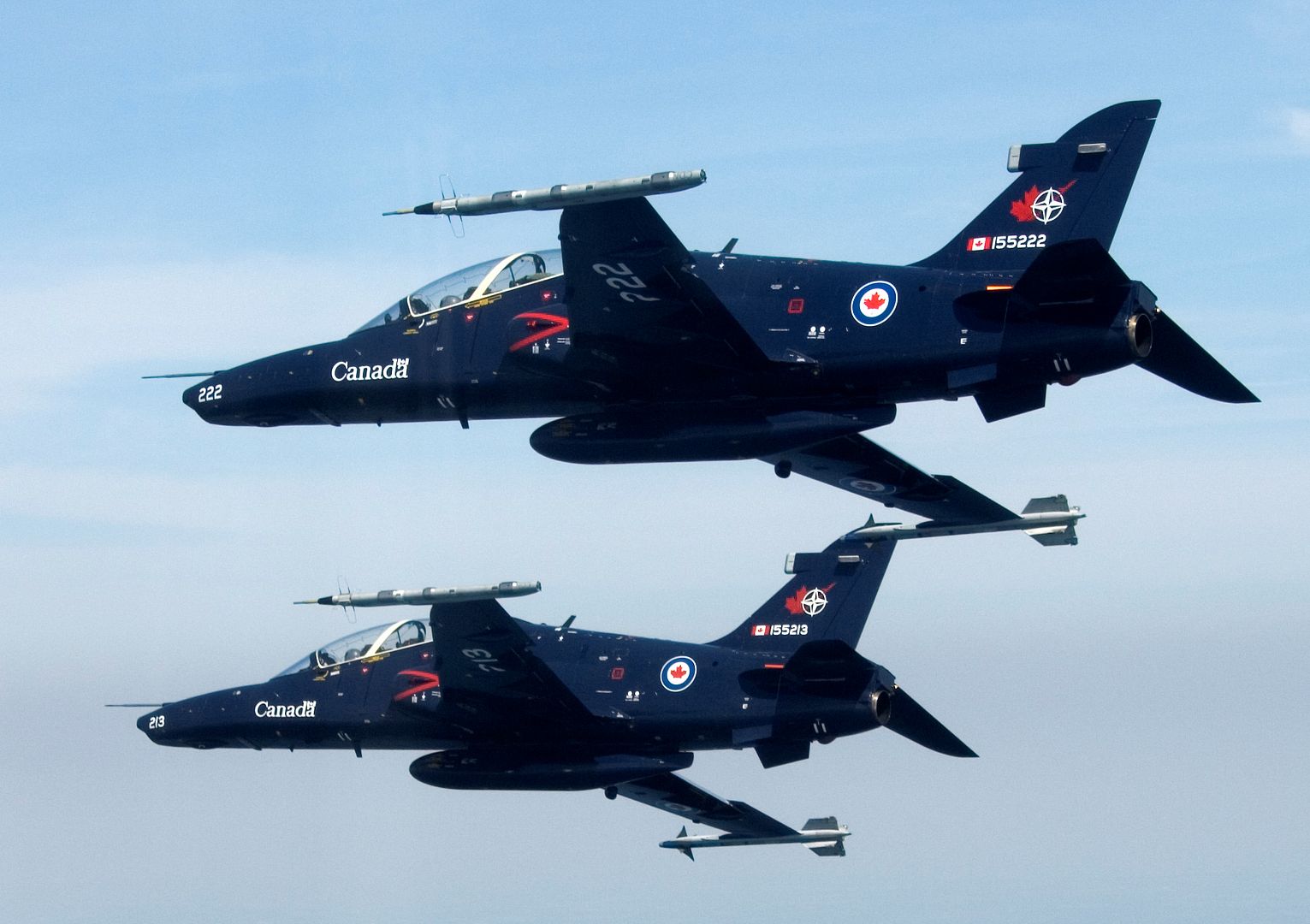
-
 Main AdminCapt. Derek Kirkwood, 34th Fighter Squadron F-35A Lightning II pilot, Hill Air Force Base, Utah, prepares for take-off during Red Flag 17-1 on Nellis Air Force Base, Nev., January 24, 2017. The F-35A is a fifth generation strike fighter. Its design is optimized to leverage specific capabilities and effectively accomplish a wide variety of mission sets. (U.S. Air Force photo by Staff Sgt. Kristin S. High/Released)
Main AdminCapt. Derek Kirkwood, 34th Fighter Squadron F-35A Lightning II pilot, Hill Air Force Base, Utah, prepares for take-off during Red Flag 17-1 on Nellis Air Force Base, Nev., January 24, 2017. The F-35A is a fifth generation strike fighter. Its design is optimized to leverage specific capabilities and effectively accomplish a wide variety of mission sets. (U.S. Air Force photo by Staff Sgt. Kristin S. High/Released)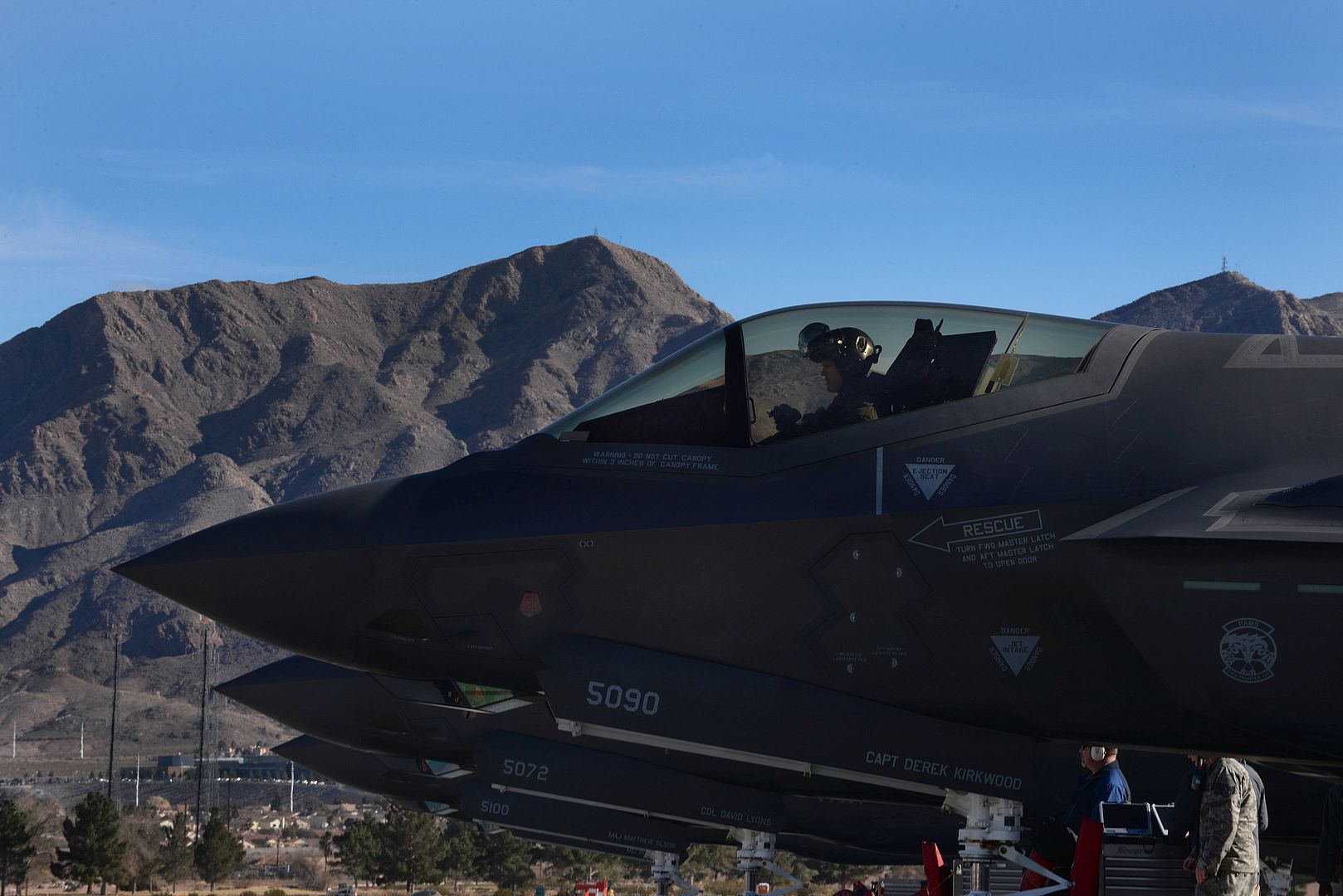
PACIFIC OCEAN (Jan. 25, 2017) An F/A-18F Super Hornet from the ?Bounty Hunters? of Strike Fighter Squadron (VFA) 2 takes off from the aircraft carrier USS Carl Vinson (CVN 70) flight deck. The Carl Vinson Carrier Strike Group is on a regularly scheduled Western Pacific deployment as part of the U.S. Pacific Fleet-led initiative to extend the command and control functions of U.S. 3rd fleet. U.S Navy aircraft carrier strike groups have patrolled the Indo-Asia-Pacific regularly and routinely for more than 70 years. (U.S. Navy photo by Mass Communication Specialist 2nd Class Sean M. Castellano/Released)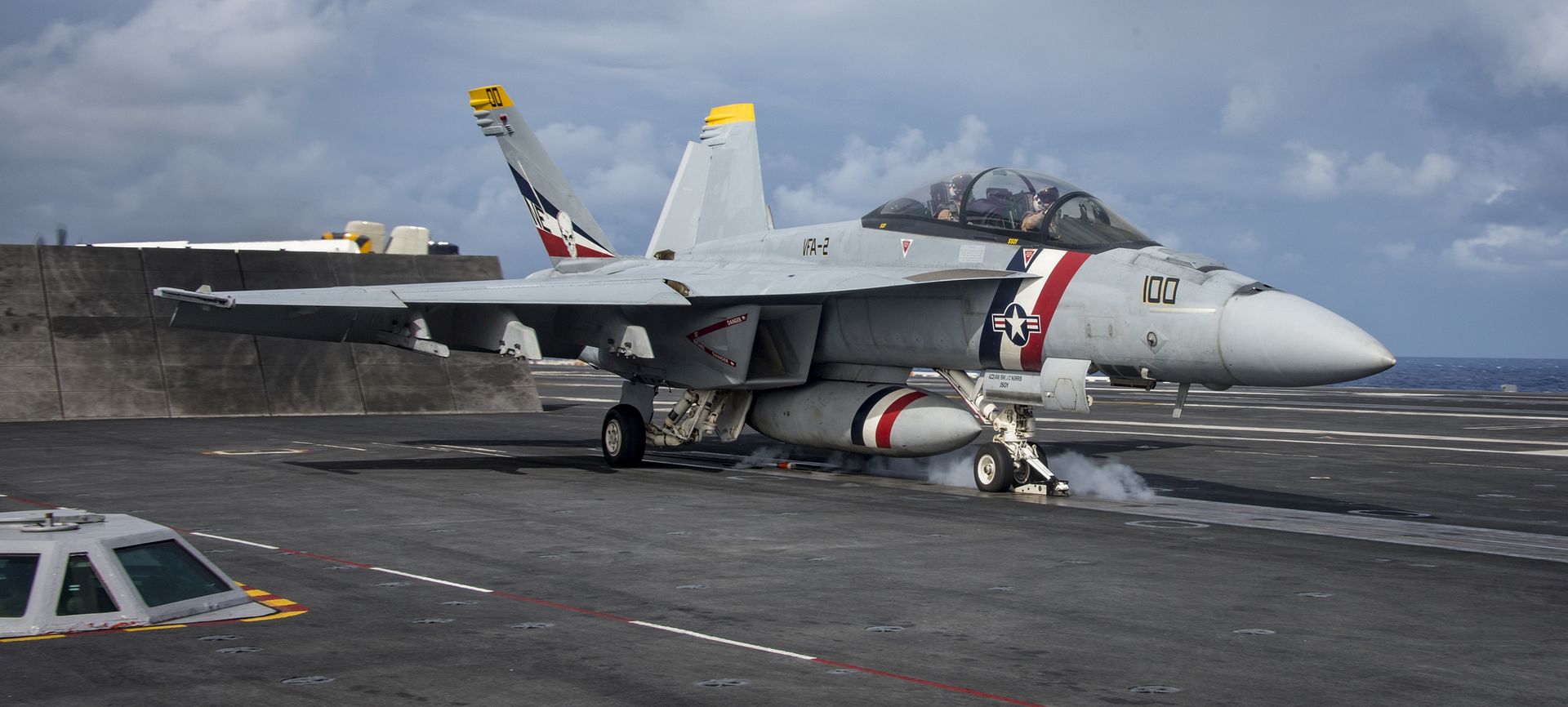
Capt. Erik ?Speedy? Gonsalves, U.S. Air Force Thunderbirds advance pilot/narrator, and Staff Sgt. Todd Hughes, tactical aircraft maintainer, taxi down the flight line in Thunderbird 8, an F-16 Fighting Falcon, Jan. 25, 2017, at Dover Air Force Base, Del. Gonsalves and Hughes departed for Pittsburgh, Pa., after meeting with key personnel and conducting a site survey of Dover AFB?s airfield for an open house scheduled for August 26 and 27, 2017. The Thunderbirds are scheduled to give performances on both days. (U.S. Air Force photo by Roland Balik)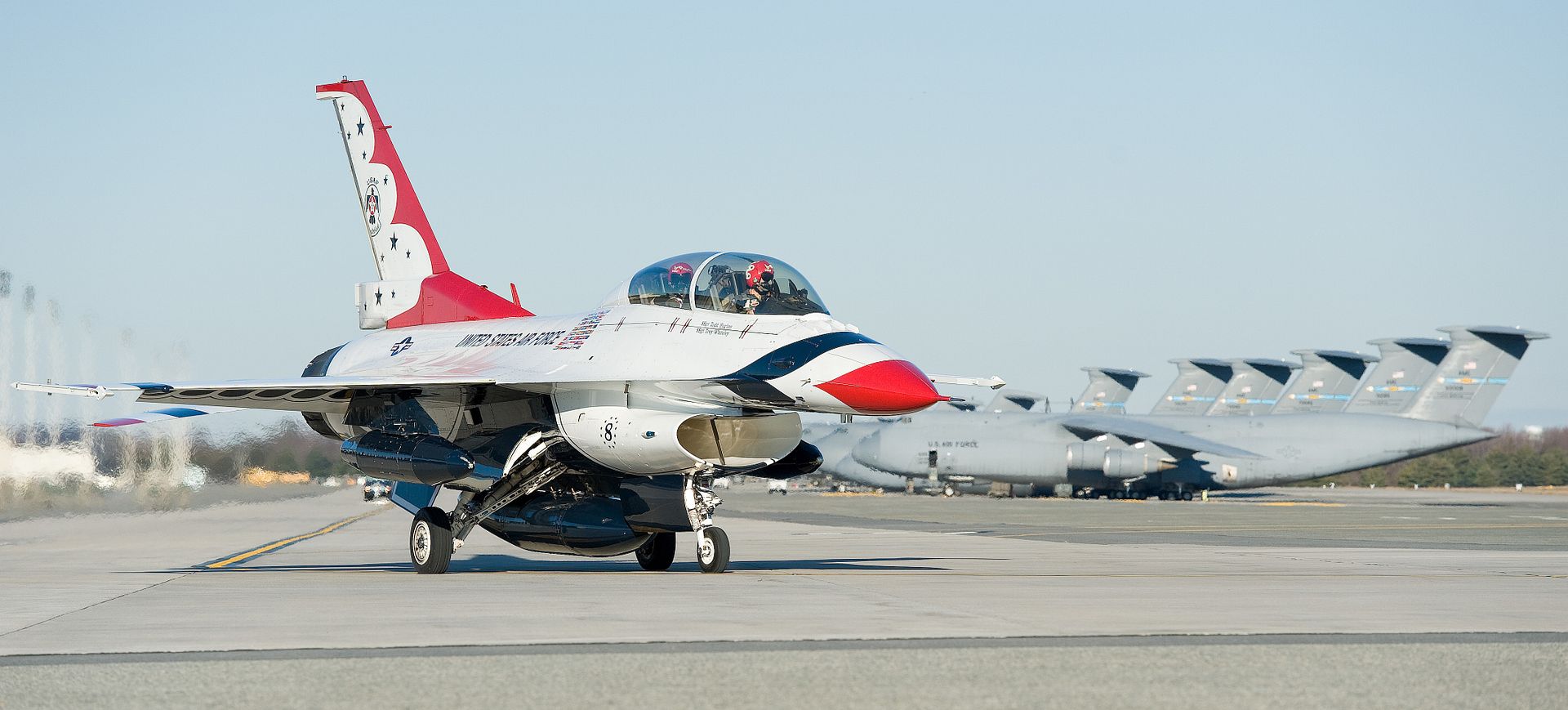
EDWARDS AIR FORCE BASE, Calif. --
A B-52 Stratofortress from the 96th Bomb Squadron at Barksdale Air Force Base, Louisiana, is undergoing Hazards of Electromagnetic Radiation to Ordnance testing in the Benefield Anechoic Facility.
The test was requested by the B-52 Program Office at Tinker Air Force Base, Oklahoma, to comply with a recent mandate from the Air Force Safety Office according to members of the 772nd Test Squadron who oversee BAF operations. The mandate states all Air Force weapons platforms will conduct Electromagnetic Environmental Effects evaluations. This test with the B-52 concentrated on the HERO element.
Ordnance and other devices that contain electro?explosive devices must function in their operational electromagnetic environment without inadvertently activating. To prevent the susceptibility of ordnance to radiated or conducted electromagnetic energy, HERO limits are imposed. HERO tests are conducted to classify the ordnance's susceptibility to electromagnetic radiation as HERO Safe, HERO Susceptible, or HERO Unsafe.
?The advantage of using the BAF chamber allows for more sensitive measurements with low background noise levels, as compared to testing on the flightline where there are numerous interfering radio frequency sources,? said Hannah Dahlgren, 772nd TS project lead engineer. Since no signals escape the chamber, the customer does not have to deal with regulatory clearances to radiate from the aircraft, which typically results in transmitting late at night only to avoid interfering with flightline and commercial operations.?
The BAF at Edwards is the largest anechoic chamber in the world and can fit any airplane inside. It provides a "free space" so electronic warfare tests can be conducted without radio frequency interference from the outside world. The chamber is filled with radiation-absorbing material, or RAM, designed to stop reflections of electromagnetic waves. The size of the RAM, which is painted dark blue or black, varies depending on the particular frequency and test procedure being conducted. Aircraft systems can be tested and verified that they work properly in lieu of an actual flight test.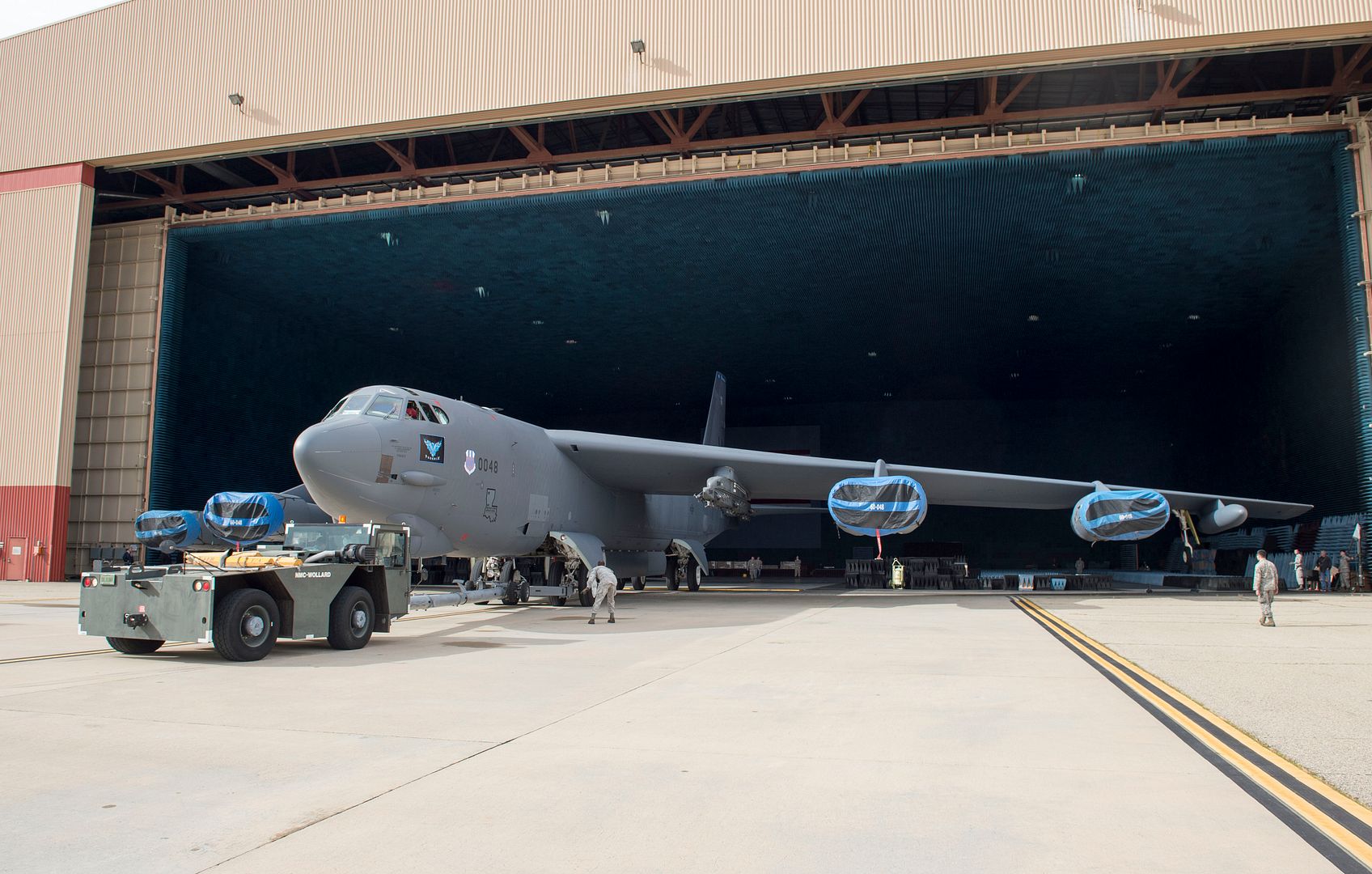
Dahlgren said the physical placement of the B-52 in the chamber was accomplished in four days. Once the jet was backed into the chamber, the bomber and the jack stands were placed on the turntable and rotated 180 degrees.
?There were no challenges relating to the size of the B-52. However, it was the first time the B-52 was jacked up within the BAF. This presented some logistics coordination challenges and analyses,? said Dahlgren.
A maintenance team from Minot, Air Force Base, North Dakota, jacked the aircraft up and the landing gear was retracted to simulate in-flight conditions. Members of the 772nd TS placed the radiation-absorbing material around the aircraft along with pallets of ferrite tiles to absorb the various emitting frequencies from the aircraft.
Real ordnance is not needed during the testing because the BAF?s equipment can simulate real-life radio frequency and electromagnetic conditions; sensors can collect data from the areas where the B-52 would carry weapons.
?Testing in the BAF allows the B-52 Program Office to collect a complete set of data at a higher fidelity and in shorter time in a secure, controlled environment than it would have been possible anywhere else. Being indoors also proved beneficial during the recent [inclement] weather that we have had at Edwards,? Dahlgren said.
Due to local test scheduling, Air Force Global Strike Command provided the B-52 in place of an Edwards bomber. An offensive and defensive weapons aircrew member is also on loan to operate the on-board systems. Minot AFB, provided a maintenance team to support the test. Local manpower and logistical support is being provided by 912th Aircraft Maintenance Squadron and electronic warfare personnel from Eglin Air Force Base, Florida, are also involved.
?We also had contractor engineering support provided by Boeing and the Harris Corporations. This test would not have been possible without the outstanding professional collaboration and support from all members of the team,? said Dahlgren.
Testing is scheduled to be completed Jan. 30.
Four F-35A Lightning IIs assigned to the 34th Fighter Squadron, Hill Air Force Base, Utah, rest on the flightline after landing to participate in Red Flag 17-1 at Nellis Air Force Base, Nev., Jan. 21, 2017. Red Flag provides the 34th FS the opportunity to enhance their tactical operational skills alongside military aircraft from coalition forces. (U.S. Air Force photo by Airman 1st Class Kevin Tanenbaum/Released)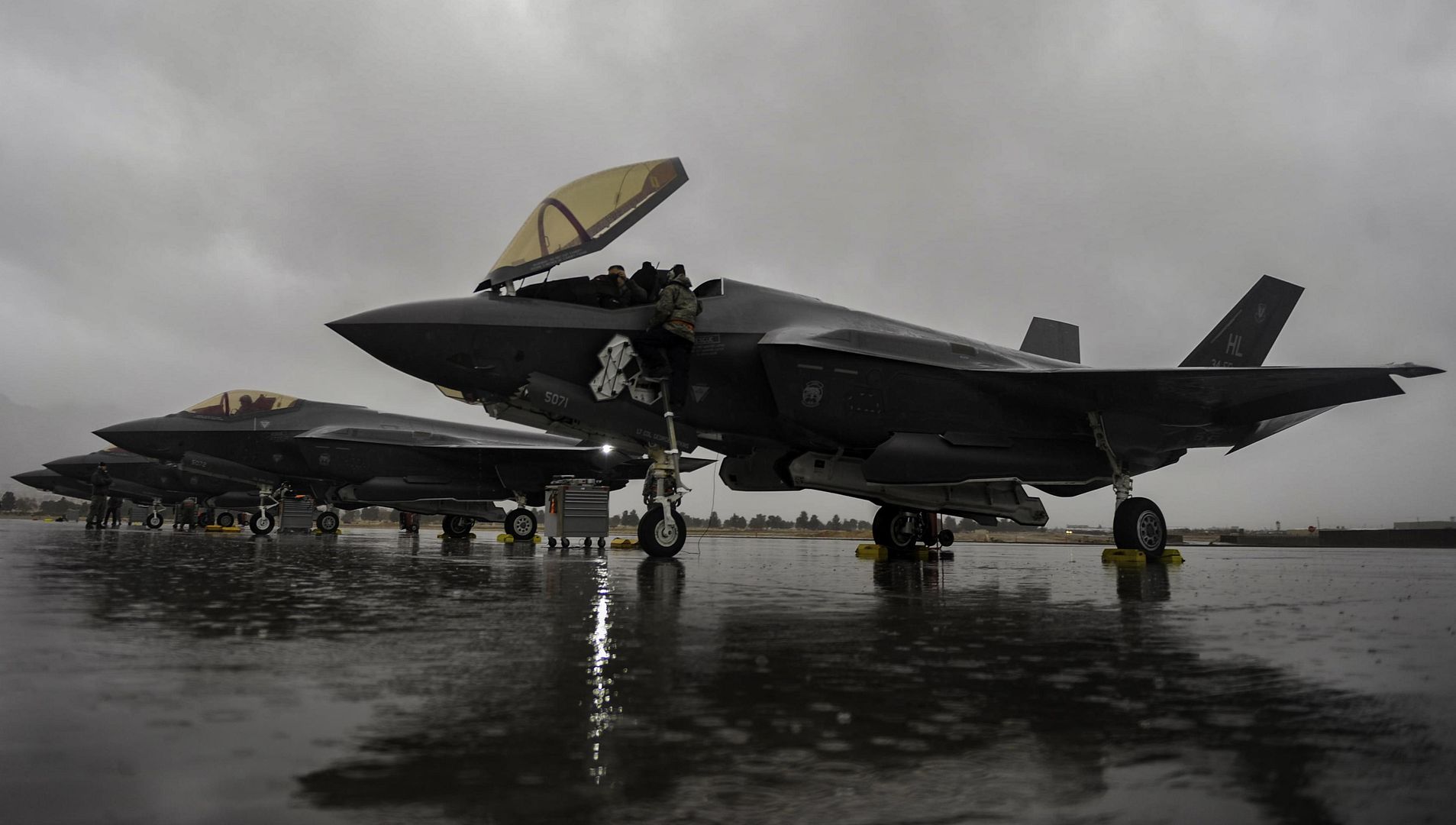
27 January 2017
Typhoon aircraft from RAF Coningsby have been monitoring the Russian aircraft carrier, Admiral Kuznetsov, as it sails through UK waters on its way home to Russia from the Eastern Mediterranean.
The RAF aircraft have been part of a wider ongoing operation that is being conducted in conjunction with the Royal Navy and our NATO allies to monitor the Russian carrier and its accompanying vessels as it passes through the waters of Western Europe on its way home.
Wing Commander Stu Smiley, Officer Commanding Operations Wing RAF Coningsby said ?Whilst the British public are familiar with our role escorting Russian long-range aviation, on this occasion we launched to monitor the Russian warships as they transit near to our sovereign waters?.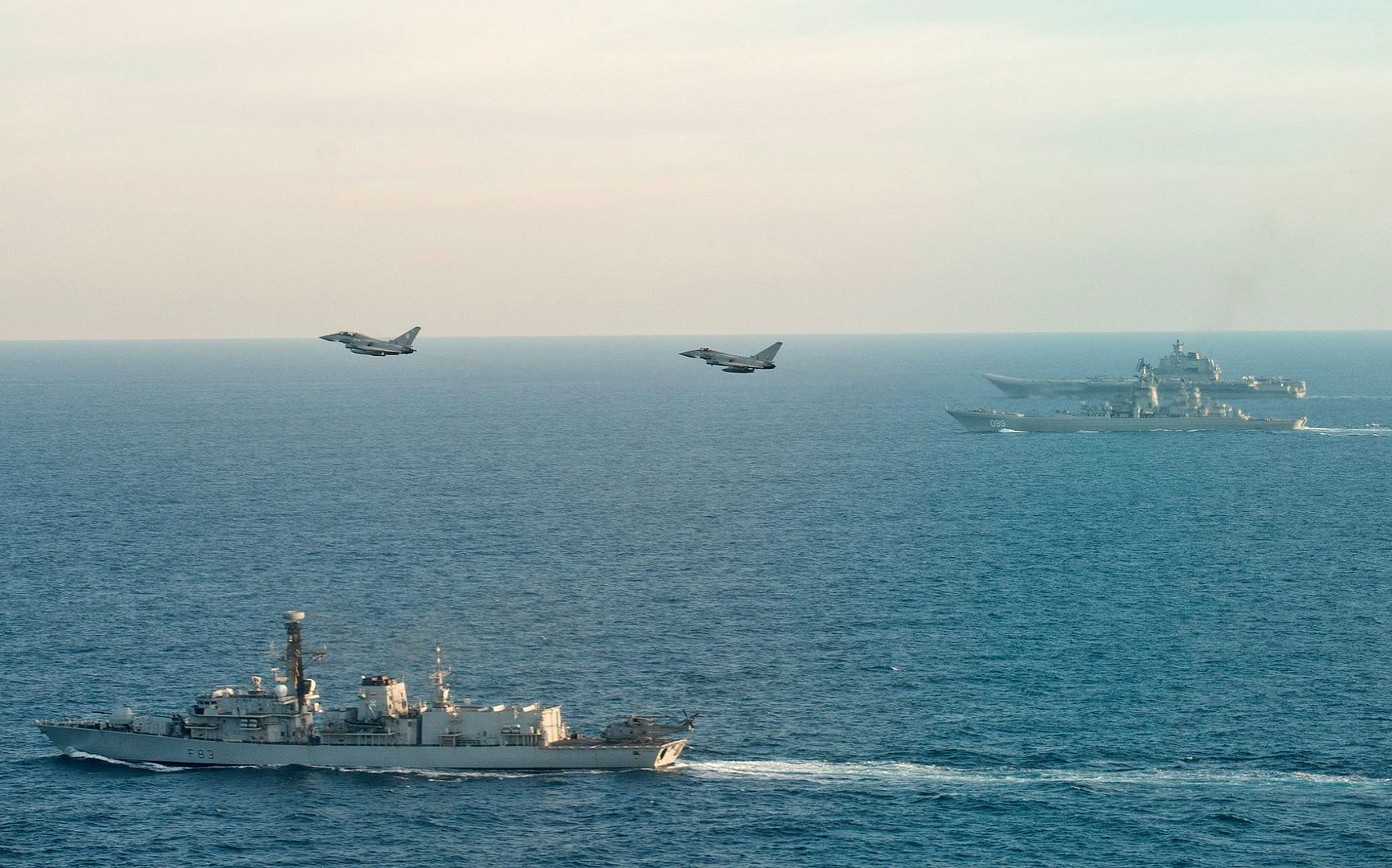
The air operation was planned and is being controlled by the UK Joint Force Air Component, based at RAF High Wycombe. Air Vice Marshal Steve Shell is commanding the Air Operation and said: ?The operation to escort the Russian Task Group is part of our routine activity to insure the integrity of UK airspace and waters; the air elements were smoothly and professionally coordinated by the UK JFAC.?
The Kuznetsov was sent to the Eastern Mediterranean to participate in Russian military operations in Syria but suspended flying operations after two aircraft were lost in accidents. The aircraft carrier has now been ordered home following the end of operations against rebels in the Syrian city of Aleppo.
The Russian Carrier has been slowly steaming back to Russia and its passage through the English Channels in International shipping lanes is entirely routine. The Secretary of State for Defence, the Right Honourable Sir Michael Fallon MP, however, said: ?We are man-marking these vessels every step of the way around the UK as part of our steadfast commitment to keep Britain safe.?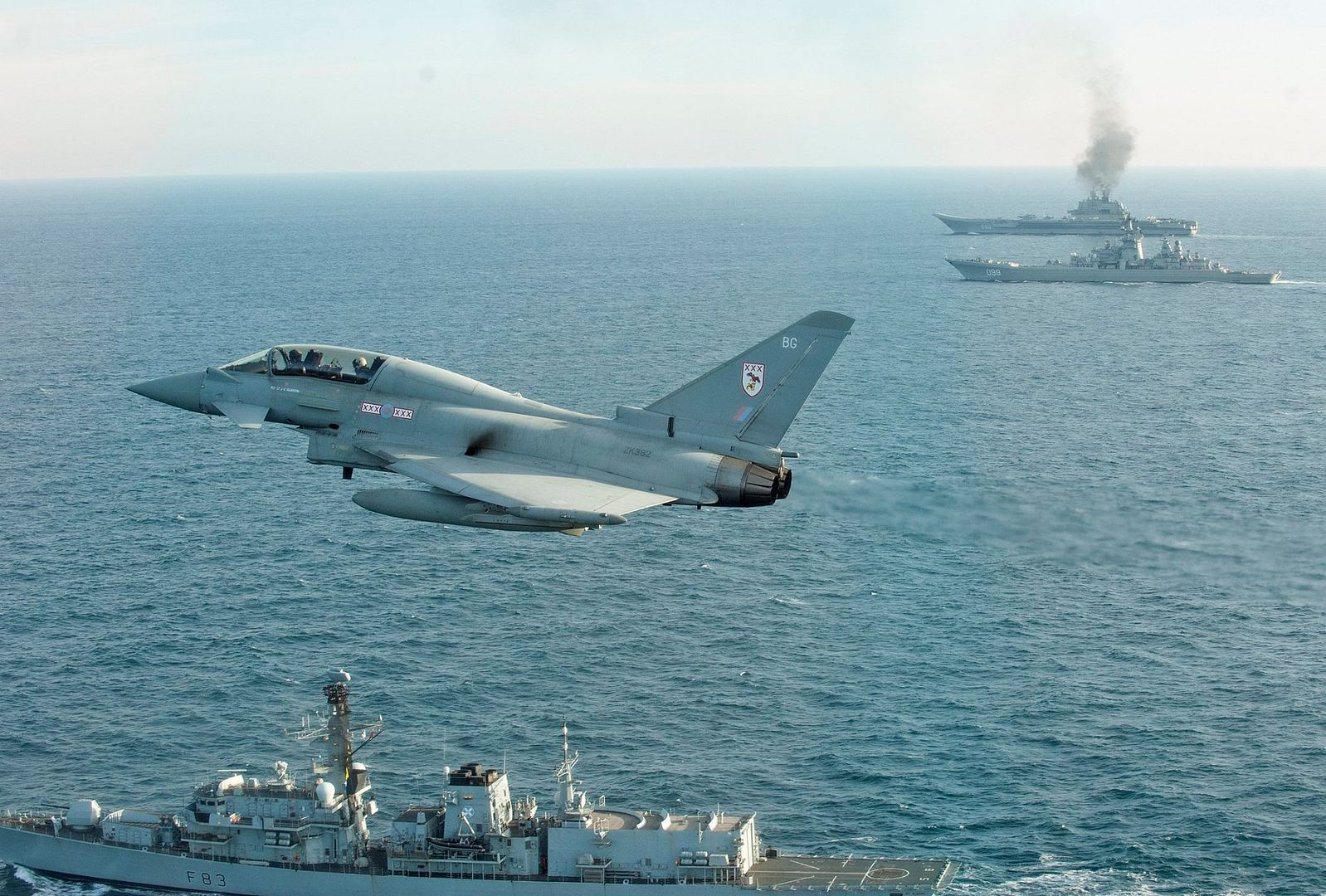
-
 Main AdminU.S. Soldiers assigned to 8th Medical Company conducted Sling Load Training at the Baumholder Military Training Area, Baumholder, Germany, on 26 January 2017. Helicopter support was provided by B Co 1-214th Aviation Regiment, Katterbach, Germany. ( U.S. Army photo by Erich Backes, released)
Main AdminU.S. Soldiers assigned to 8th Medical Company conducted Sling Load Training at the Baumholder Military Training Area, Baumholder, Germany, on 26 January 2017. Helicopter support was provided by B Co 1-214th Aviation Regiment, Katterbach, Germany. ( U.S. Army photo by Erich Backes, released)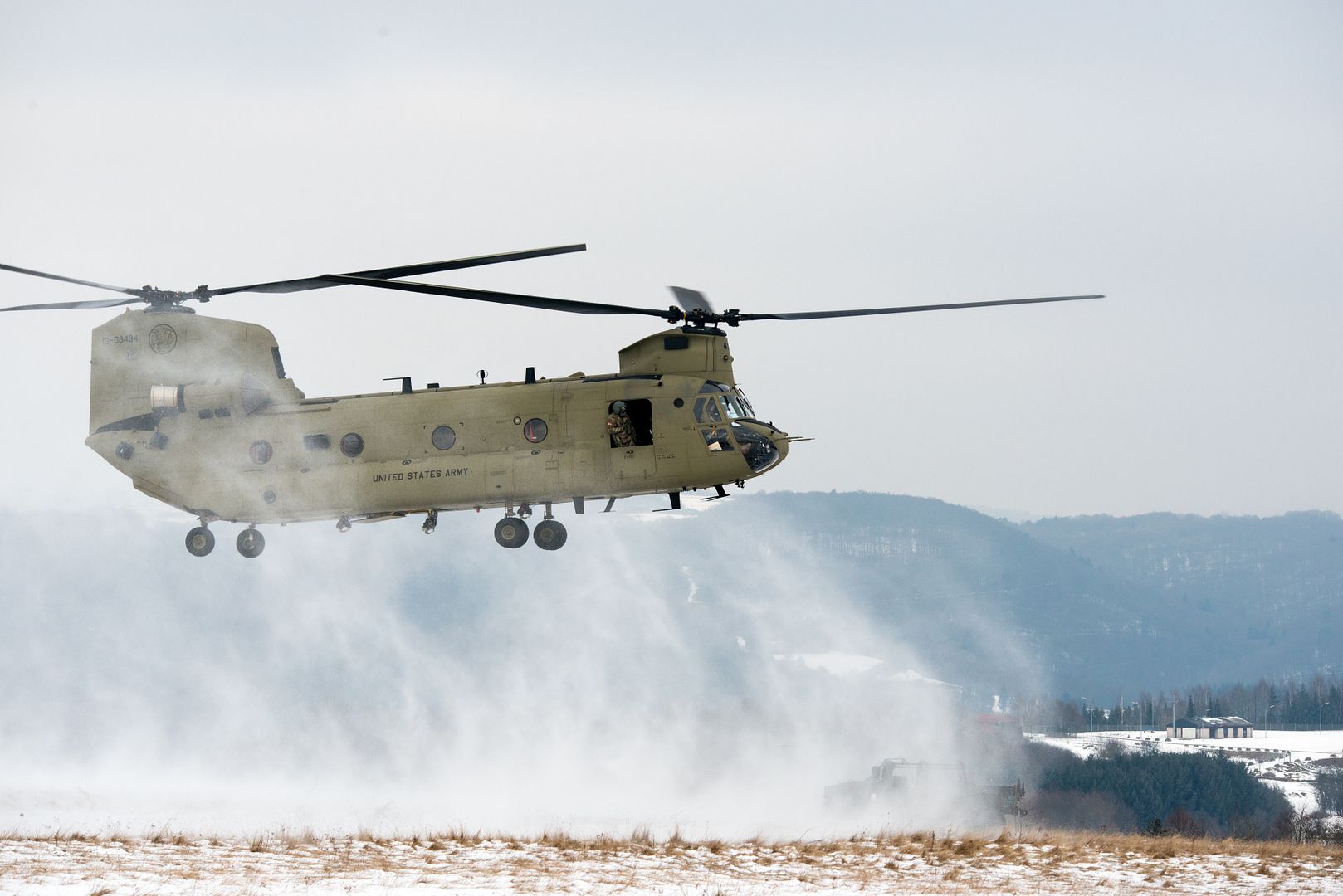
U.S. Army paratroopers assigned to the 360th Civil Affairs Brigade and other supporting units prepare to board a U.S. Air Force C-17 Globemaster for a mass tactical Airborne jump for Operation Anvil in North Air Force Auxiliary Base, North, South Carolina, Jan. 26, 2017. The 360th Civil Affairs Brigade hosts Operation Anvil so jumpmasters can perform duties and jumpers can maintain currency for jump status. (U.S. Army photo by Spc. Christopher Martin/Released)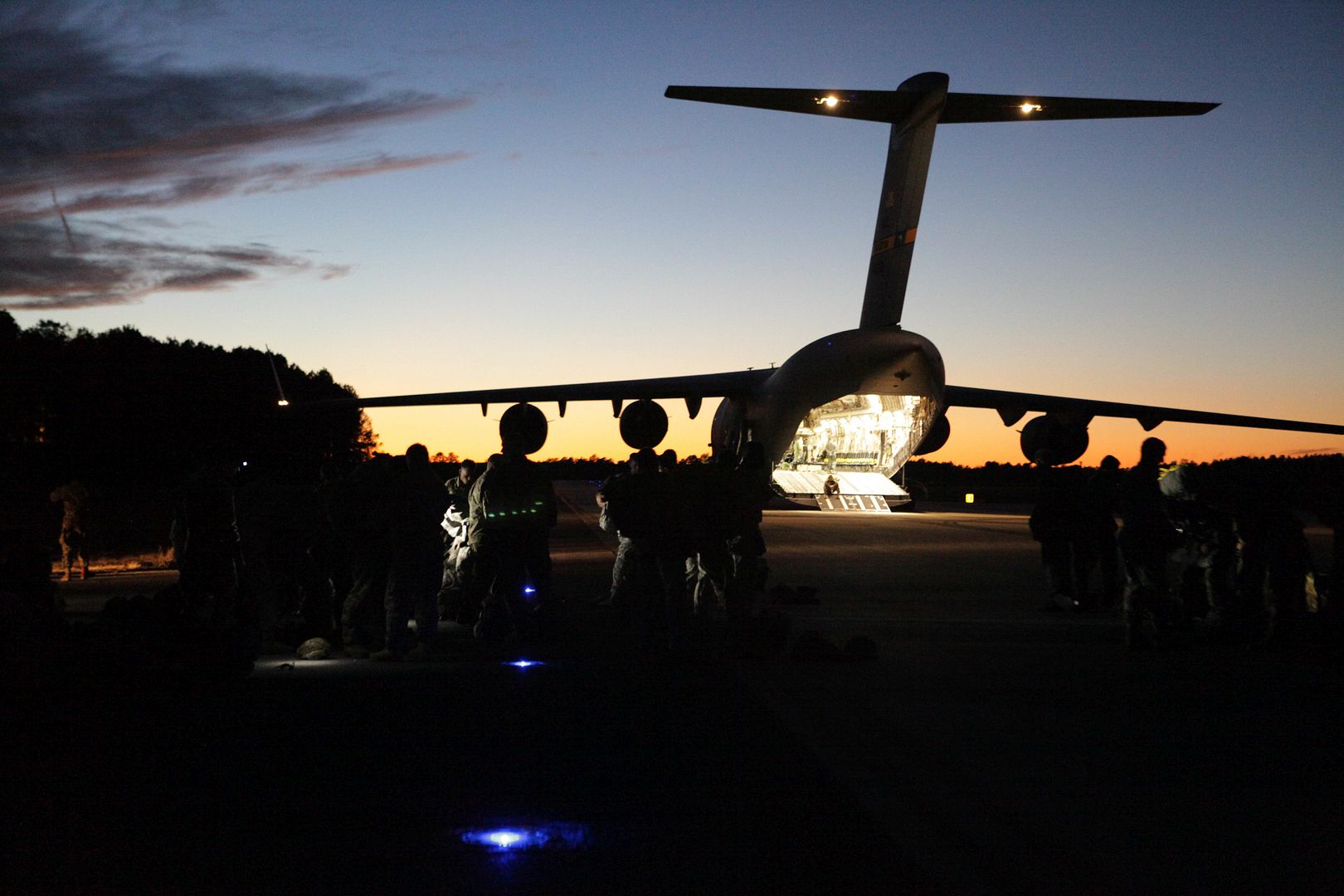
PACIFIC OCEAN (Jan. 25, 2017) An F/A-18E Super Hornet, assigned to the Stingers of Strike Fighter Squadron (VFA) 113, takes off from the flight deck the aircraft carrier USS Theodore Roosevelt (CVN 71). Theodore Roosevelt is currently off the coast of Southern California conducting carrier qualifications. (U.S. Navy Photo by Mass Communication Specialist Seaman Rachael Treon/Released)
LUKE AIR FORCE BASE, Ariz. --
Airmen from the 62nd Aircraft Maintenance Unit integrated with the Lockheed Martin maintainers to begin performing maintenance for the F-35 Lightning II beginning in Jan., eventually with the goal of taking over the U.S. F-35 maintenance for the unit.
?We can?t afford to have any dip in pilot training so we need to make the integration and transition as seamless as possible,? said Capt. Lauren Chaffee, 62nd AMU officer in charge. ?Eventually every F-35 AMU here at Luke will mirror what we?re going to be.?
Lockheed Martin currently has the contract to provide maintenance for all 62nd AMU F-35 Lightning II aircraft, but starting in June the U.S. Air Force will take on the responsibility for the U.S. fighters, while Lockheed Martin will continue to maintain partner country F-35?s.
?This lays the foundation for the future of Luke as far as how we?re going to do maintenance,? said Master Sgt. Joshua Hopper, 62nd AMU F-35 tactical aircraft maintenance specialist.
The new integration will also require some changes in manning.
?We have over 100 Airmen who are going to be coming over to the 62nd AMU,? Chaffee said. ?We?ve had to increase manning in the 61st AMU in order to transition those individuals over to the 62nd AMU without impacting operations to the 61st. Meanwhile, the 63rd AMU is going to open later this year.?
The influx of Airmen to the AMUs will help spread manning across different units allowing more diversity at Luke.
?This transition will be a learning experience and will set the standard for how we do business,? Hopper said. ?Looking at it from a maintainer?s perspective, this is a unique chance for both Air Force and Lockheed Martin maintainers to learn from one another.?
This learning environment will create comradery between organizations and help build the future of airpower.
?This unit can only be truly successful with the solid relationships built amongst all organizations,? Chaffee said. ?Everyone who is already in the 62nd AMU is welcoming everyone wearing a U.S. Air Force uniform with open arms, and that is critical to the long term success of this unit.?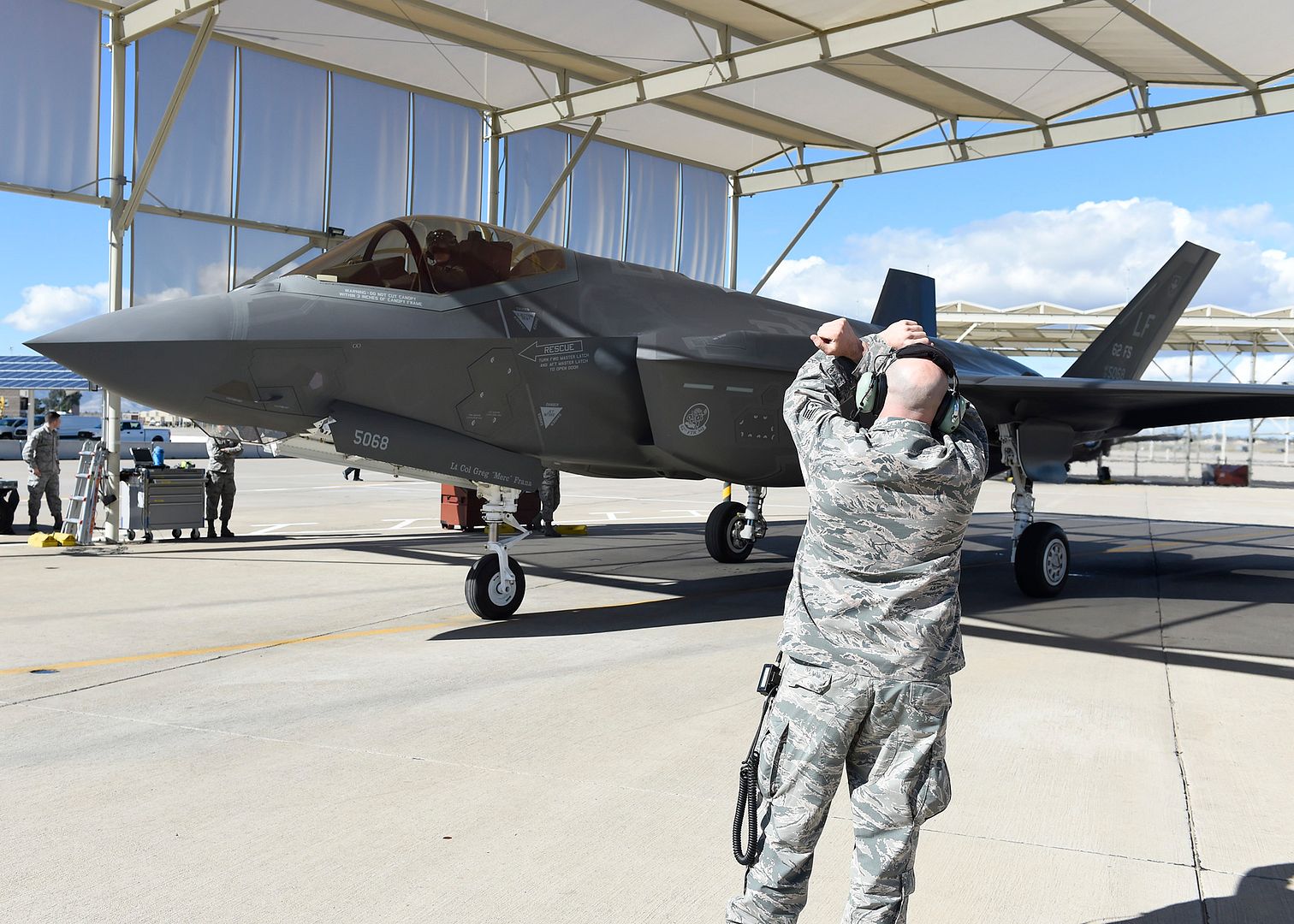
CREECH AIR FORCE BASE, Nev. --
The MQ-1 Predator aircrew sat in the ground control station focused intently on their screens. Tension filled the air as they assessed the situation and began calculating the risks of destroying an armored vehicle suspected of carrying explosives.
The remotely piloted aircraft crew started their shift the same as any other, attending the crew brief before flight. As they arrived in the GCS, the battle environment was changing, thrusting them into a life-or-death situation.
"When we first got in the seat we checked in with our coalition forces on the ground and received an update on where they were," said 1st Lt. Matthew, 15th Attack Squadron MQ-1 pilot. ?Keeping them safe was our primary focus.?
The crew began scanning the local area, gathering intelligence and becoming familiar with the terrain of the town.
"As we were scanning we noticed a vehicle [in the] the corner of the screen that was moving toward the friendly forces location," Matthew said. "We knew this was not a normal action for that town so we relayed to those friendly forces it was coming toward them."
The vehicle in question stood out due to its armored plating, covered wheels, tires and protected windshield. This was an indication to the crew of a vehicle-borne improvised explosive device.
"We relayed this information to the friendlies so they could take as much action as possible, however, based on the speed, we knew they may only have a few minutes until this ?Mad Max? looking vehicle, as we called it, would reach them," Matthew said. "That's when we had to take action."
In under two minutes, the crew coordinated and made the decision to fire an AGM-114 Hellfire missile at the vehicle.
The GCS filled with the sounds of confirmations and the relaying of messages.
"Cleared hot."
"Lasing target."
"Rifle."
"25 seconds."
?Splash.?
The missile hit, a clean shot.
The explosion from the missile, normally about four meters wide, washed out their entire screen. The explosives within the vehicle combined with the Hellfire resulted in a 400-meter blast radius, the equivalent of four football fields.
"We stopped the vehicle about a mile away from friendlies and it would have been about a minute until friendly forces came into contact with it," Matthew said. "Afterwards we made sure all of our friendly forces were OK. We had around 800 to 850 friendlies on the ground including coalition, U.S. and indigenous Iraqis."
This particular engagement was special to Matthew because he knew he was responsible for so many friendly forces and he knew after the impact, without them, the ground troops would have had no way out.
"Immediately after, the response was actually a sigh of relief, moving targets are the hardest to hit," Matthew said. "After we checked on friendlies it was another relief knowing they weren't hurt in the explosion. There?s satisfaction in knowing they could fight another day, as well as, having the opportunity to go home to their families."
In the MQ-1, MQ-9 career field, operators are able to return home after every shift and be with their loved ones, but for the ground forces overseas, it can be weeks to months before they see their families.
"Anything we can do to make their life easier, to have their days a little bit easier because they know we're overhead looking out for them, to me, that's all that matters," Matthew said. "This job is unique, there is no better feeling than walking away day in and day out knowing you made this kind of impact."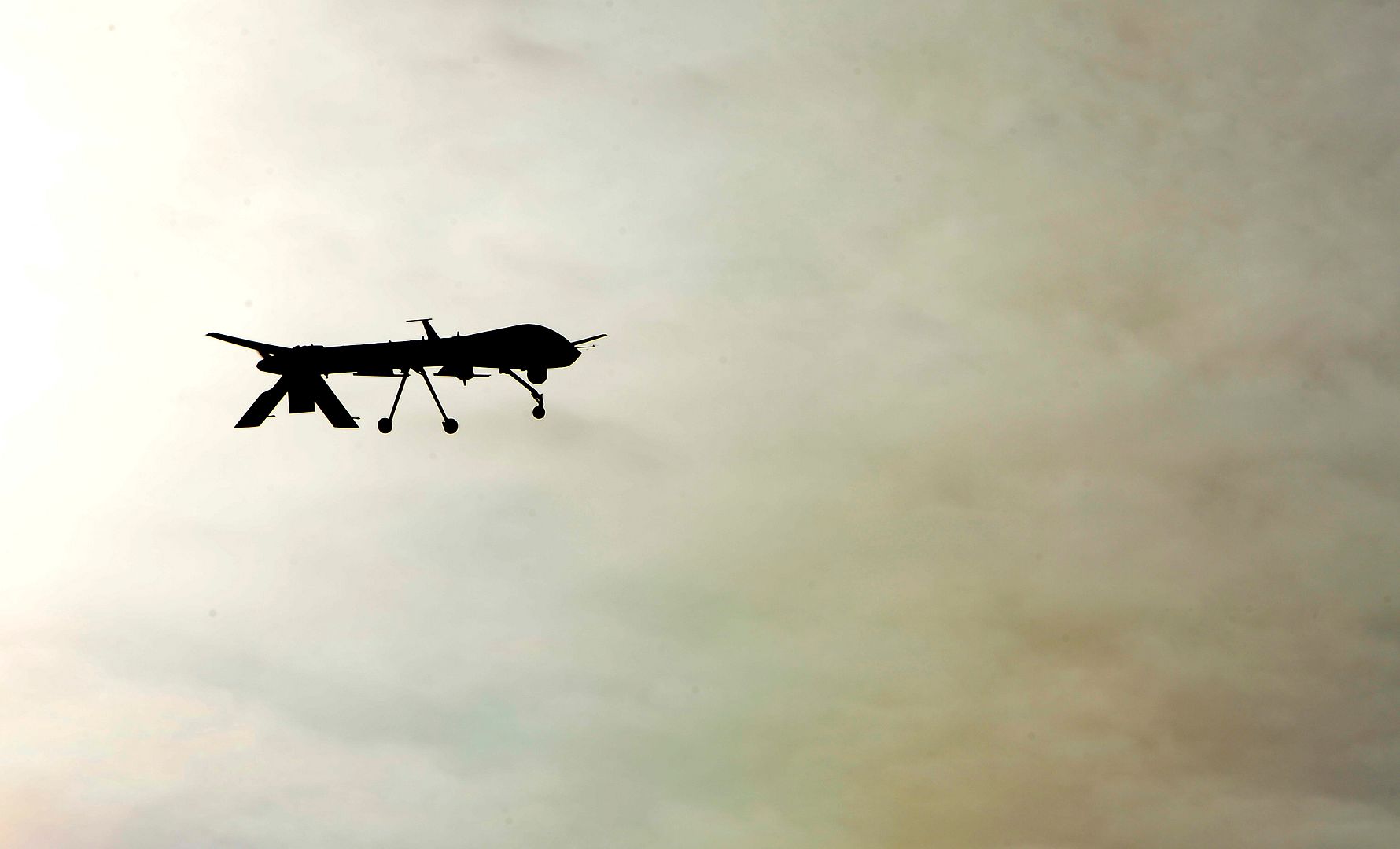
NAVAL AIR SYSTEMS COMMAND, Patuxent River, Md. -- An X-47B unmanned aircraft departed NAS Patuxent River, Md. Jan.26 for cross country trip back to Northrop Grumman's manufacturing facility in Palmdale, Calif. As part of the Unmanned Carrier Air System-Demonstration (UCAS-D) program, the X-47B demonstrated technologies to support the Navy's unmanned carrier aviation efforts. The second X-47B aircraft will make the same trip next month. Northrop Grumman plans to use both aircraft as test beds for future development programs. (U.S. Navy photo)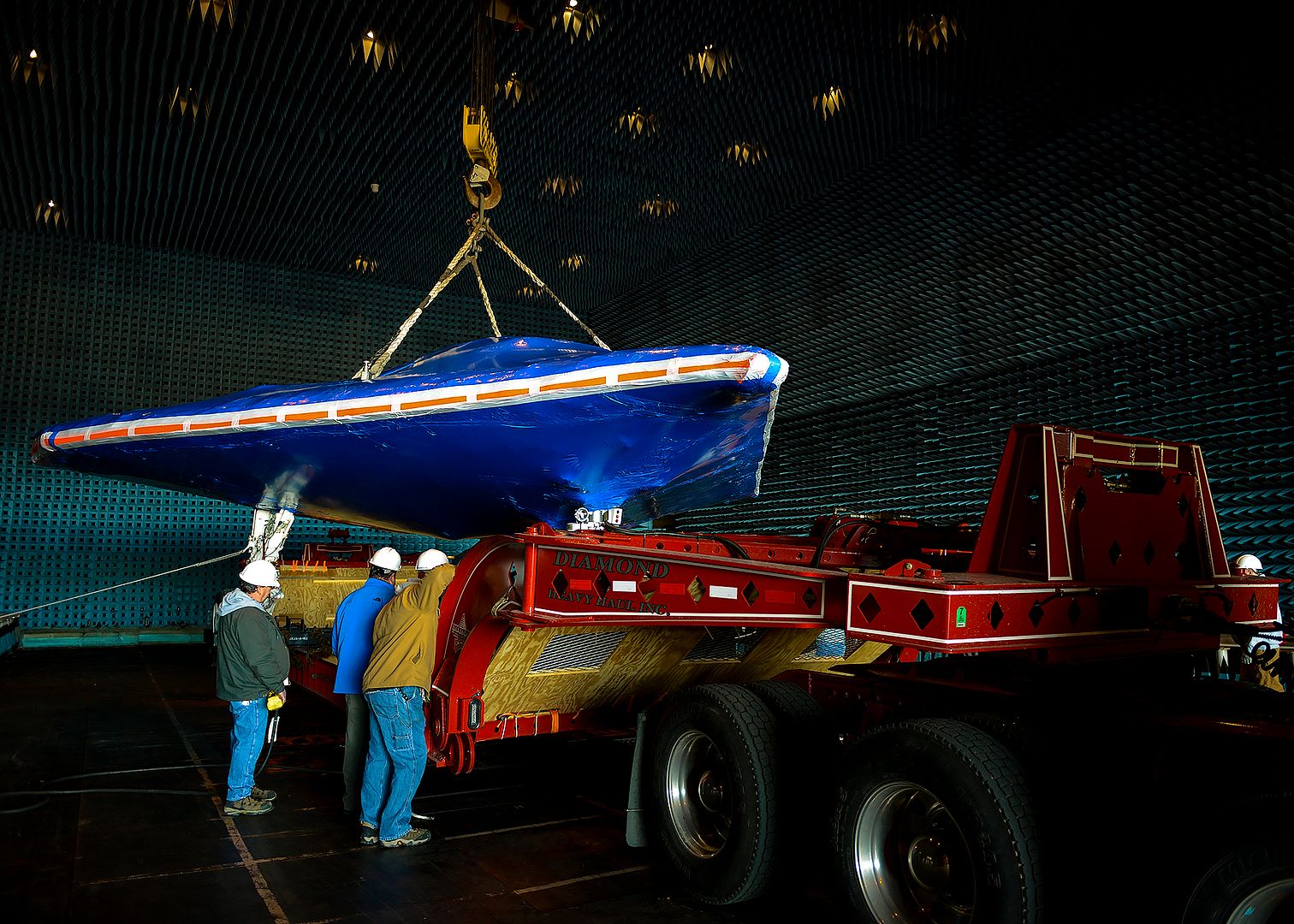
EVERETT, Wash., Jan. 27, 2017 ? The U.S. Air Force today awarded Boeing [NYSE: BA] $2.1 billion for 15 KC-46A tanker aircraft, spare engines and wing air refueling pod kits.
This order is the third low-rate initial production lot for Boeing. The first two came in August 2016 and included seven and 12 planes, respectively, as well as spare parts.
Boeing plans to build 179 of the 767-based refueling aircraft for the Air Force to replace its legacy tanker fleet. Tanker deliveries will begin later this year.
?This award is great news for the joint Boeing-Air Force team and reinforces the need for this highly efficient and capable tanker aircraft,? said Mike Gibbons, Boeing KC-46A tanker vice president and program manager. ?Our Boeing industry team is hard at work building and testing KC-46 aircraft, and we look forward to first delivery.?
"Placing an order for another 15 aircraft is another important milestone for the KC-46 program," said Col. John Newberry, Air Force KC-46 System program manager. "I know the warfighter is excited about bringing this next generation capability into the inventory."
Boeing received an initial contract in 2011 to design and develop the Air Force?s next-generation tanker aircraft. As part of that contract, Boeing built four test aircraft ? two configured as 767-2Cs and two as KC-46A tankers. Those test aircraft, along with the first production plane, have completed nearly 1,500 flight hours to date.
The KC-46A is a multirole tanker that can refuel all allied and coalition military aircraft compatible with international aerial refueling procedures and can carry passengers, cargo and patients.
Boeing is assembling KC-46 aircraft at its Everett, Wash., facility.
An RAF Brize Norton-based Voyager is participating in Red Flag for the first time, providing an air-to-air refuelling capability for our aircraft as the exercise plays out over the huge Nevada Test and Training Range.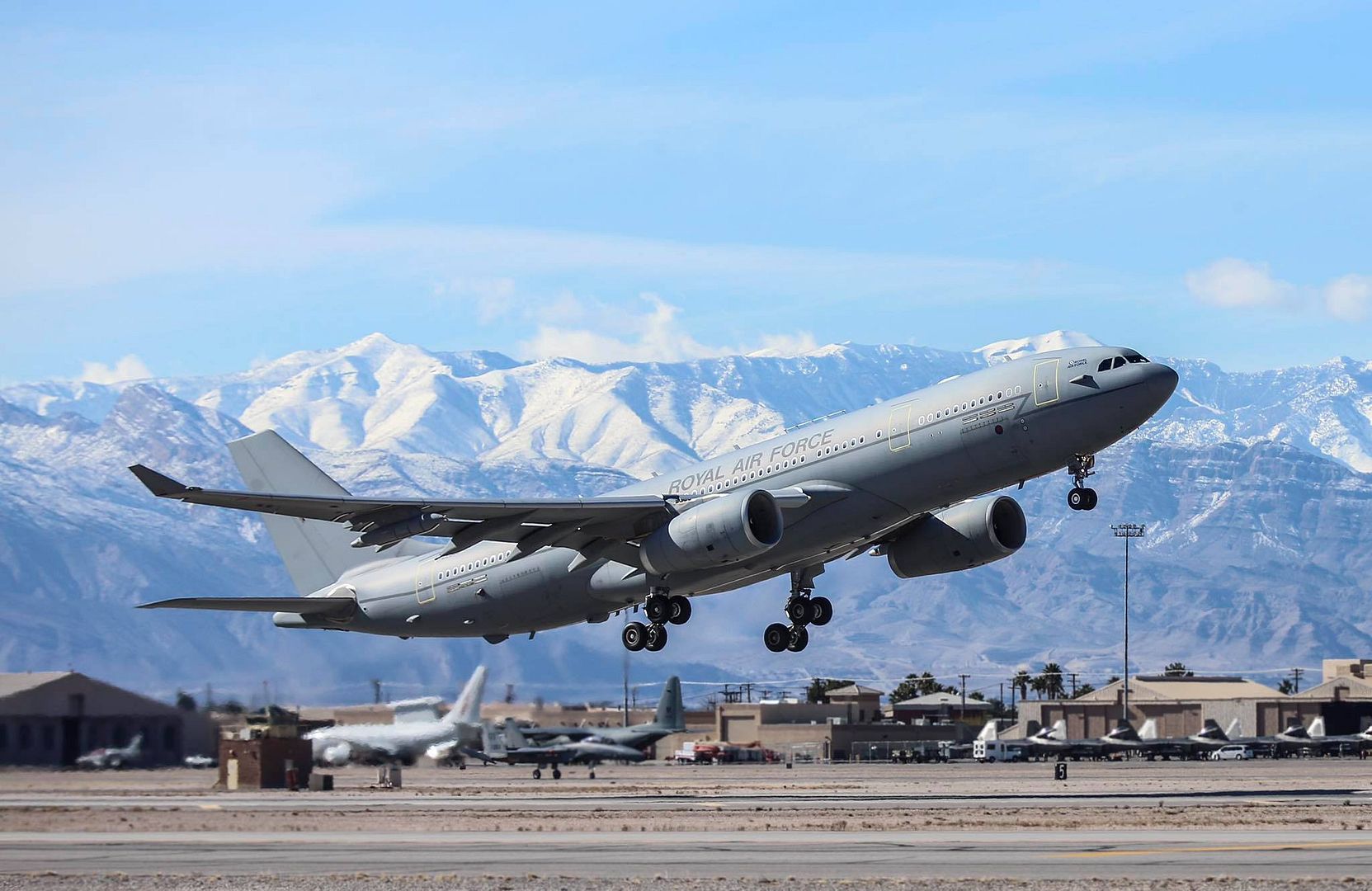
At almost 200ft long, Voyager is an A330 specially adapted for military use. It's the biggest aircraft in the RAF fleet and the largest we've ever operated.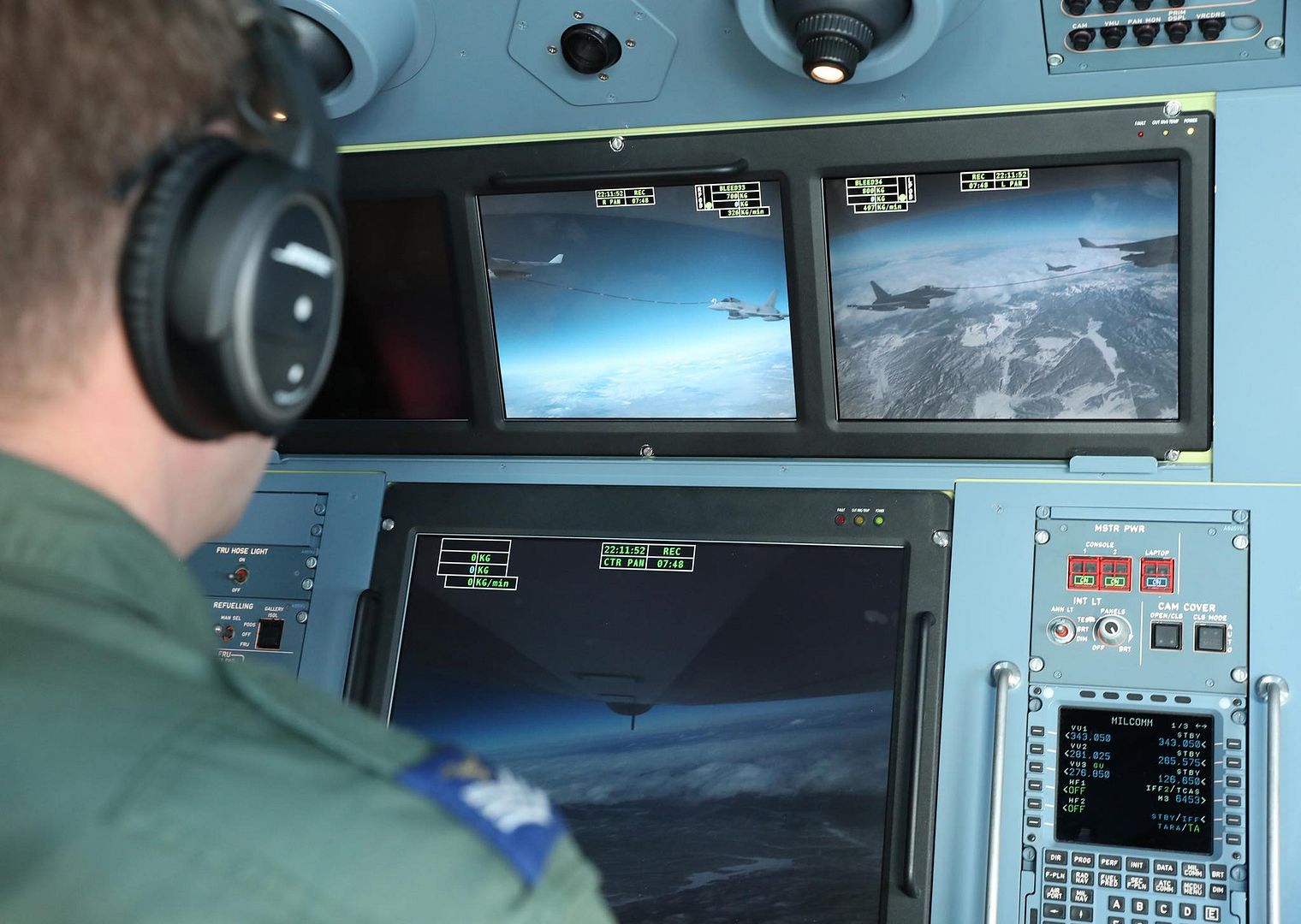
As well as being our air-to-air refueller, Voyager is our main passenger transport aircraft. It can also perform an aeromedical evacuation role, with room for up to 40 stretchers, and it can carry up to 43 tonnes of cargo.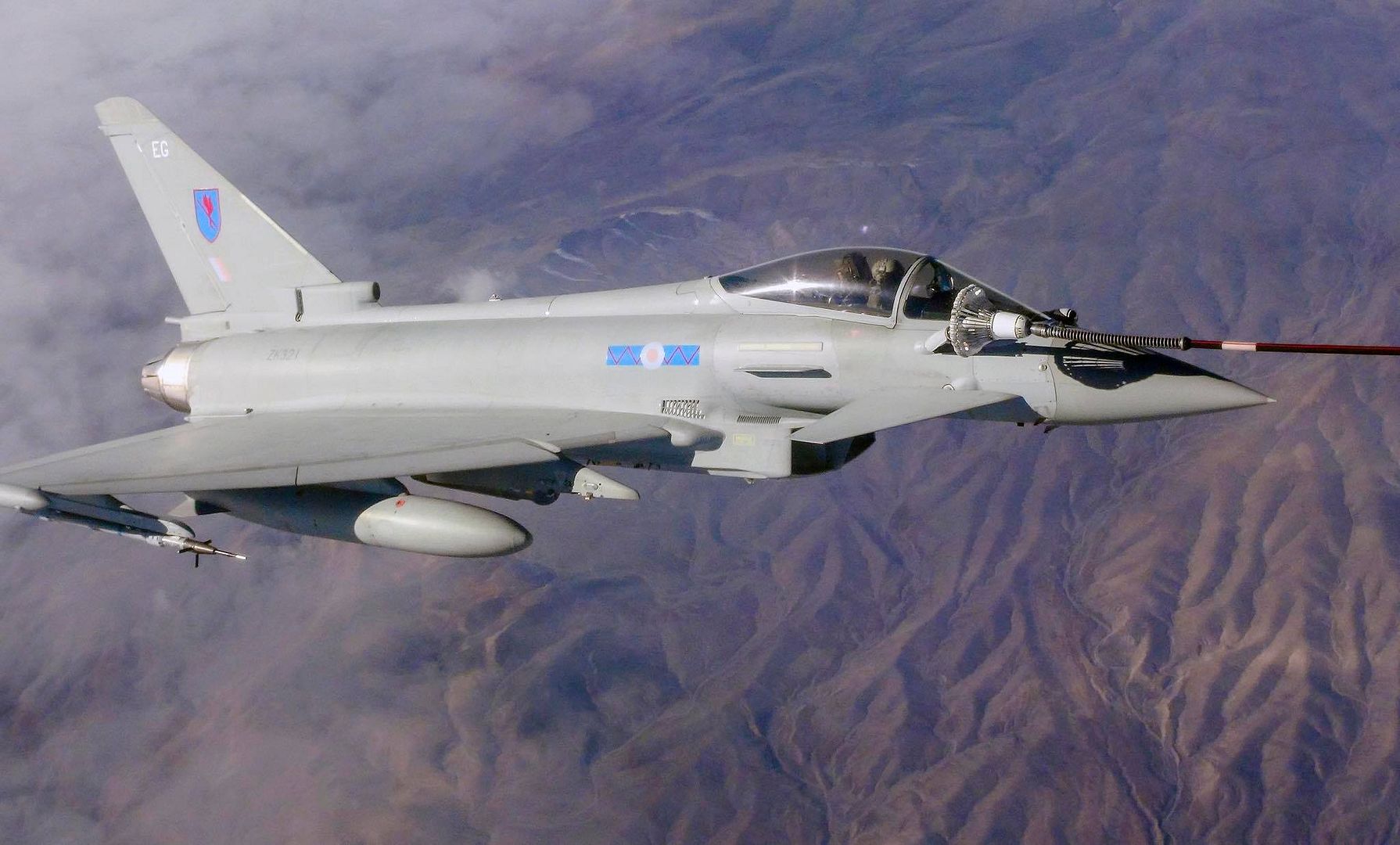
Images: Sgt Neil Bryden, Cpl Graham Taylor
-
 Main Admin(Source: TASS; published Jan 27, 2017)
Main Admin(Source: TASS; published Jan 27, 2017)
LUKHOVITSY, Moscow Region --- Russia?s entire light fighter aviation will soon be armed with Mikoyan MiG-35 (NATO reporting name: Fulcrum-F) aircraft, Russian Aerospace Force Commander-in-Chief Viktor Bondarev said on Friday.
"Some time will pass and we?ll replace the entire light fighter element precisely with this class," he said.
MiG-35 fighter jets will also be delivered to the Swifts aerobatic team, which currently flies MiG-29 aircraft, he added. "I believe that the day is not far away when we?ll retrain the Swifts to operate this splendid plane," the Aerospace Force commander-in-chief said. "The development of the MiG-35 is actually a victory," the general said.
Russia?s most advanced Mikoyan fighter jet will be able to use laser weapons: "This plane can use all the types of the newest weaponry and laser weapons as well."
"Thank you very much for this splendid creation, which has confirmed once again that there are no planes better than those in Russia," the general said, addressing the aircraft designers.
"It is capable of engaging in super-maneuverable air fights and strike targets both at sea and in the air. We?ll always have the best aerodynamics. We had some gaps in the work on engines but we have proved with the development of the Su-30SM and Su-34 aircraft that we have the best engines," the commander said.
Russia?s United Aircraft-Building Corporation is holding an international presentation of the most advanced MiG-35 fighter whose flight tests began on Thursday. The Mig-35 is a 4++-generation multirole fighter jet developed on the basis of the serial-produced MiG-29K/KUB and MiG-29M/M2 aircraft.
It was reported earlier that the Aircraft Corporation MiG was considering developing its own fifth-generation fighter jet as a light alternative to the T-50 PAK FA (Prospective Airborne Complex of Frontline Aviation) fighter created by the Sukhoi Design Bureau.
United Aircraft-Building Corporation General Designer Sergei Korotkov who earlier held the post of the MiG Corporation CEO called as "quite probable" the development of a new plane on the basis of the MiG-35 aircraft.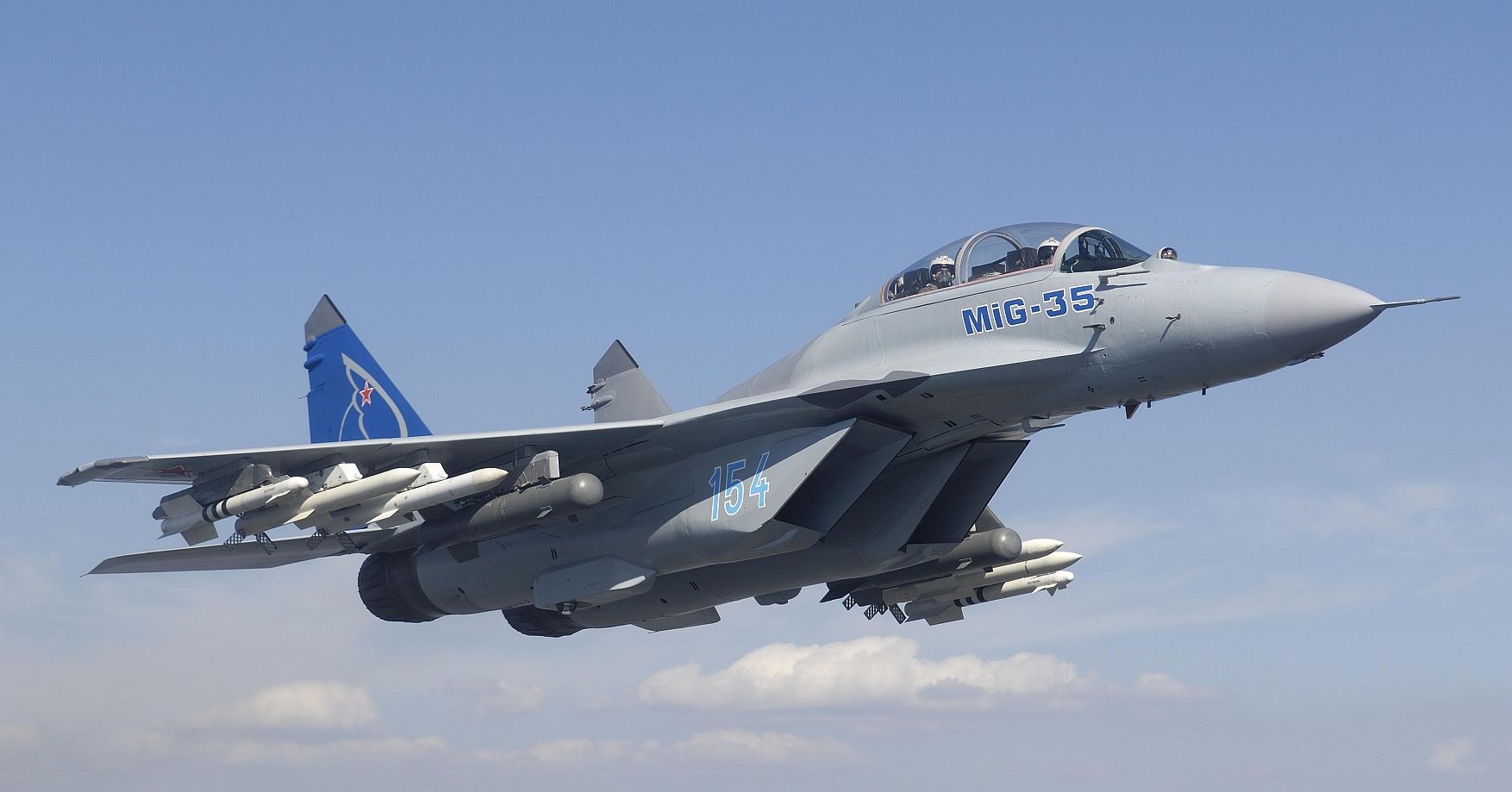
JOINT BASE PEARL HARBOR-HICKAM, Hawaii --
Approximately 200 Airmen and 12 F-16 Fighting Falcons with the 119th Fighter Squadron from Atlantic City Air National Guard Base, New Jersey, are set to deploy in February to Osan Air Base, Republic of Korea, as the 119th Expeditionary Fighter Squadron in support of the U.S. Pacific Command Theater Security Package.
The U.S. Air Force routinely deploys fighter aircraft to the region to provide U.S. PACOM and Pacific Air Forces with Theater Security Packages, which help maintain a deterrent against threats to regional security and stability.
Movement of U.S. Air Force TSPs into the region has been a routine and integral part of U.S. PACOM?s force posture since March 2004.
These theater security packages demonstrate the continuing U.S. commitment to stability and security in the Indo-Asia-Pacific region.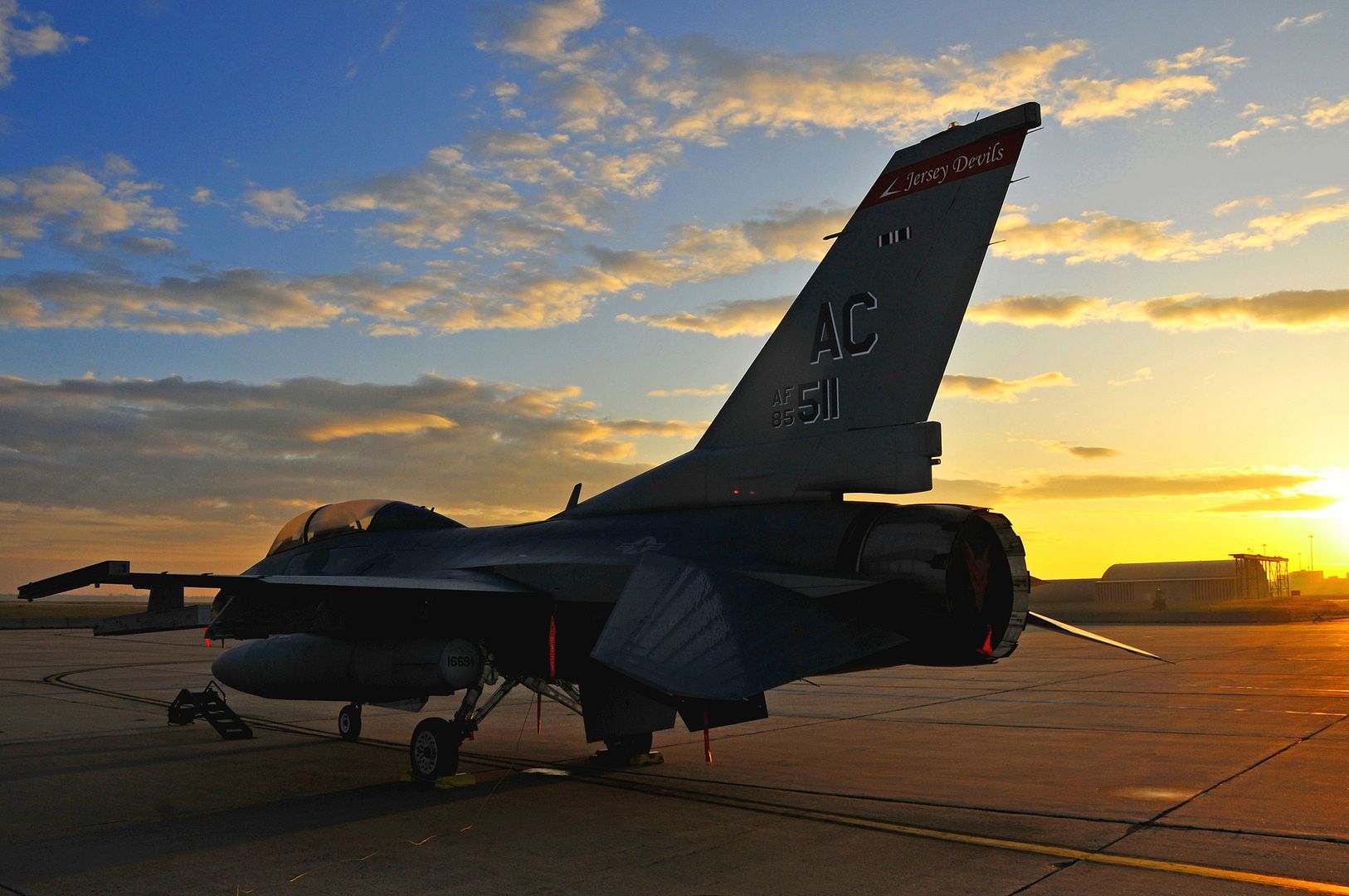
Post a reply
- Go to Next topic
- Go to Welcome
- Go to Introduce Yourself
- Go to General Discussion
- Go to Screenshots, Images and Videos
- Go to Off topic
- Go to Works in Progress
- Go to Skinning Tips / Tutorials
- Go to Skin Requests
- Go to IJAAF Library
- Go to Luftwaffe Library
- Go to RAF Library
- Go to USAAF / USN Library
- Go to Misc Library
- Go to The Ops Room
- Go to Made in Germany
- Go to Campaigns and Missions
- Go to Works in Progress
- Go to Juri's Air-Raid Shelter
- Go to Campaigns and Missions
- Go to Works in Progress
- Go to Skinpacks
- Go to External Projects Discussion
- Go to Books & Resources
